

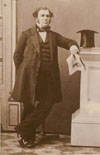
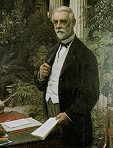
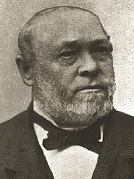
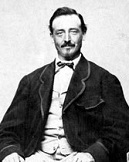
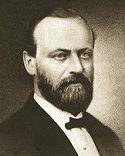
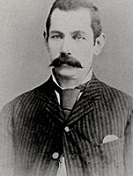



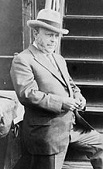

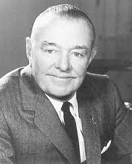
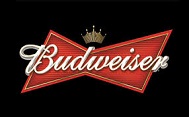
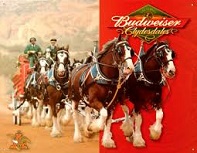

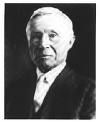


















TLW's Beerscope™ (Beer Historyscope) |
By T.L. Winslow (TLW), the Historyscoper™ |
© Copyright by T.L. Winslow. All Rights Reserved. |
Original Pub. Date: July 14, 2016. Last Update: June 13, 2024. |

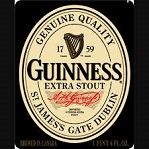
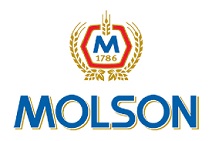
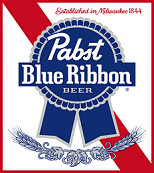
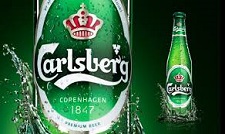
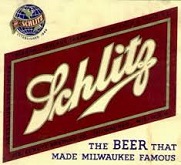
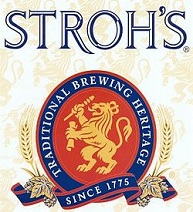
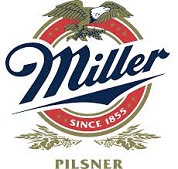
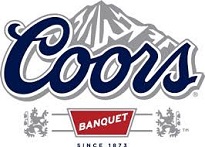
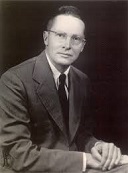
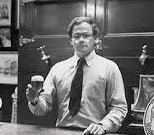
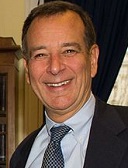
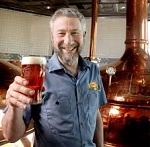


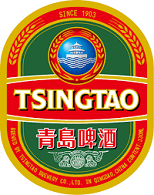
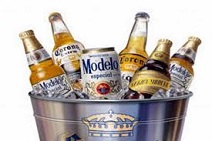
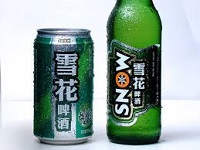
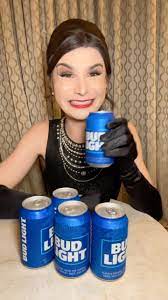
Westerners are not only known as history ignoramuses, but double dumbass history ignoramuses when it comes to beer, beer history, and brewing history. Since I'm the one-and-only Historyscoper (tm), let me quickly bring you up to speed before you dive into my Master Historyscope.
Beer is the most popular alcoholic beverage on Earth, and the oldest; it is the 3rd most popular drink after water and tea. The word "beer" comes from Old English beor or beow (barley), maybe from Latin bibere (to drink); the word "ale" comes from Old English ealu, meaning intoxication in the sense of magical possession. Modern-day beer consumption per capita is highest in the Czech Repub. (142.6 l), followed by Seychelles (114.6 l), Austria (104.8 l), Germany (104.7 l), Namibia (104 l), Poland (97.8 l), Ireland (97.0 l), Lithuania (96.6 l), Belize (93.8 l), and Estonia (93.5 l), with the U.S. coming in 17th (75.8 l). In 2014 the global beer market was worth $318.4B, with strong beer comprising 65.6% and light beer 34.4%.
In 1975 UCLA chemist Ben M. Zuekerman discovers space alcohol; in 1995 Tom Millar, Geoffrey MacDonald, and Holf Habing discover the gigantic alcohol cloud G34.3 10K l.y. from Earth in the Aquila Constellation, 1K the size of the Solar System, with enough alcohol to make 400TT (400E24) pints of beer.
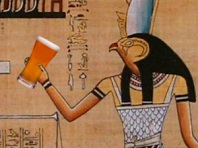
By 6400 B.C.E. beer and berry wine are being produced in Egypt; the Egyptian goddesses of beer are Tenenit (Tenenet) and Menquet; beer is sipped through straws, and goes great with onions?
About 6000 B.C.E. a recipe for beer in Babylonia is the first written mention of beermaking.
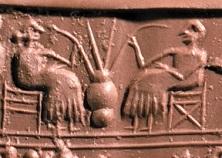
About 4000 B.C. barley beer is brewed in Sumeria; it is drunk through straws.
About 3100 B.C.E. the earliest known chemical evidence of barley beer (along with wine) is in Level V of Godin Tepe in the Zagros Mts. of W Iran.
About 3000 B.C.E.the earliest known industrial scale brewery is built in Abydos, Egypt.
About 3000 B.C.E. Beer is paid to workers in Uruk, Sumer as wages, about 4-5l/day.
About 2200 B.C.E. an inscription in the Dendera Temple Complex in Egypt 37 mi. N of Luxor reads: "The mouth of a perfectly contented man is filled with beer."
About 2050 B.C.E. the Alulu Beer Receipt from Ur acknowledges the receipt of 5 Silas (4.5 l) of the best beer from brewer Alulu.

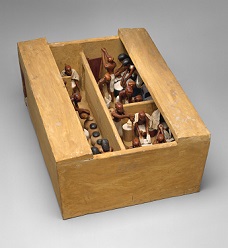
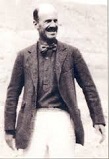
In 1926 B.C.E. Senusret I dies, and his son co-pharaoh (since -1929) Amenemhet II (d. -1895) becomes king #3 of the Egyptian 12th Dynasty; during his reign the tomb of his PM Meketre contains a model bakery-brewery discovered on Mar. 17, 1920 by Am. Egyptologist Herbert Eustis Winlock (1884-1950).
About 1800 B.C. a tablet contains a Hymn to Ninkasi, the Sumerian goddess of beer; "Ninkasi, you are the one who pours out the filtered beer of the collector vat. It is like the onrush of the Tigris and Euphrates."

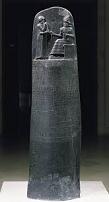
On June 16, 1750 B.C.E. Babylonian king (since -1792) Hammurabi (b. -1795) dies, leaving his famous 282 Laws (Code) of Hammurabi (incl. lopping off the hand of a son who strikes his father), which are reconstructed by Am. archeologist Francis R. Steele (1914-2003) in 1947; they incl. the death sentence for robbery, the Biblical "eye for an eye" law, and laws regulating beermaking (20 varieties) and tavernkeeping.

About 1000 B.C.E. a tomb in Luxor, Egypt for Egypt's chief beer brewer is laid; discovered in 2005.
By 1000 B.C. the Celts in Scotland, France, Germany enjoy a dark, cloudy, tasty fermented beer made with dark toasted malt; the Romans consider them barbarians and look down on them for not drinking wine, claiming that they use their big beards to strain their beer; meanwhile the Greeks learn beermaking from the Egyptians, teaching it to the Romans, who call beer cerevisia, from Ceres (goddess of agriculture) and vis (stength).
About 800 B.C.E, a burial mound in the Celtic Halstatt Culture village of Kasendorf, Bavaria, Germany (7 mi. W of Kulmbach) contains large numbers of beer jugs containing traces of beer incl. an amphora with traces of black wheat ale flavored with oak leaves, becoming the earliest known beermaking operation in Europe; discovered in 1935.
About 500 B.C. Celts in France leave burial mounds containing evidence of consumption of red wine, mead, and millet beer.

About 370 B.C.E. Greek lover, fighter, scholar, and historian ("the Attic Muse") Xenophon (Gr. "foreign voice") of Athens (-431 to -354) writes Anabasis (Gr. "An Ascent") (7 vols.) (an expedition from a coastline to the interior of a country, as opposed to katabasis, from the interior to the coast), about the Greek expedition of the Ten Thousand against Artaxerxes II of the Persians and the long journey home after their sponsor Cyrus the Younger is KIA in Babylon at the 401 B.C.E. Battle of Cunaxa; how Spartan gen. Clearchus, the leader of the Ten Thousand is treacherously murdered in a conference by Tissaphernes, leaving Xenophon as one of the last three leaders of the soldiers, bravely leading them N from N Mesopotamia through Corduene and Armenia to the Black Sea at Trebizond; upon encountering some barbarians (Celts?), he puzzles about their strange drink: "There were stores within of wheat and barley and vegetables, and wine made from barley in great big bowls; the grains of barley malt lay floating in the beverage up to the lip of the vessel, and reeds lay in them, some longer, some shorter, without joints; when you were thirsty you must take one of these into your mouth, and suck. The beverage without admixture of water was very strong, and of a delicious flavor to certain palates, but the taste must be acquired." (Book IV)

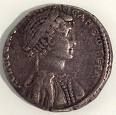

In 34 B.C.E. Roman gen. Marc Antony (Marcus Antonius) (-83 to -30) sets his babe Cleopatra VII Philopator (-69 to -30) up as pharaoh of Egypt, and she proceeds to piss-off the pop. by enacting the first-ever Egyptian tax on beer - they're playing our song?


The original Dortmund Pocket and the genesis of the myth of German superiority? In 9 C.E. Germanic (Cherusci) chief Arminius (Hermann) (OG "army man") (-17 to 21), who served in the Roman army from 1-6 C.E., obtained Roman citizenship and a knowledge of Roman military tactics, becoming an equitae ("sir"), and returned home in 7 C.E. to find his people being oppressed by haughty Roman gov. (legate) Publius Quinctilius Varus (b. -46) gets pissed-off and organizes a revolt, throwing Varus off-guard by letting him think that Germania is already a Roman province and he is their gov., feeding him with lawsuits to settle to prove his wisdom, then playing him for a suckah and leading Gorgeous W. Bush, er, Varus and his three legions (20K men) (15% of the entire Roman army) into a trap, where his unarmored warriors outthink, outwit, outlast, and massacre them in the Battle of Teutoburg (Teutoburger) Forest (Wald) in modern-day Kalkriese near Cologne in modern-day North Rhine-Westphalia, West Germany, N of Colonia Agrippina and Mainz; the battle is not fought in the forest but out in the open, with the Romans trapped between the hills and bogs; the Germans commit atrocities against the loser Romans incl. nailing their heads to trees, cutting the throats of officers on pagan altars, and cutting out tongues and sewing up the mouths; Varus' head is sent back as a present; according to Tacitus, Varus attributes the valor of the Germans to their copious use of beer; the news causes panic in Italy, and Augustus goes apeshit, wandering around his palace for months crying "Varus, give me back my legions", and begins to decline into an old fart, ordering the Rhine River to become the permanent border between the Romans and the Germans, while Tiberius is transferred to the Rhine frontier to try to plug the dyke; all hopes of a new N frontier for the Roman Empire are abandoned, and the Romans go permanently on the defensive, creating a permanent division between N and S Europe, allowing the Germans to develop a strong nat. consciousness and breed hordes of Roman killers on their own timetable to exploit the fatal mistake of lack of noive that ultimately dooms the supposedly merciless Romans, who fall in 476 C.E.; this fatal decision outlasted the Roman Empire, forever splitting Europe into the German-speaking north and the Latin-speaking south, which was a big reason for the Protestant Reformation, and even carried over into America; people still can't overcome it today?
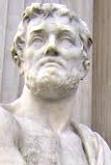
In 98 C.E. Roman historian and senator Publius Cornelius Tacitus (55-118) writes Germania (De Origine et situ Germanii) (On the Origin and Location of the Germans), an attempt to contrast the primitive unspoiled virtuous Germans with the effete decadent Romans; Germans don't like hard work and can withstand cold and hunger well, but can't handle heat and thirst without beer; "They drank a liquor of barley or other grain that was fermented into a corrupt resemblance to wine"; contains a picture of the virtuous German hausfrau; claims that the "Teutons Gothones" live in the Vistula River basin and have a fiercely independent spirit.
About 100 C.E. Roman soldiers stationed at Ft. Vindolana in Celt-filled Britain drink local beers made by brewer Atrecus et al.
In 179 B.C.E. the Roman Legio III Italica builds the fort Castra Regina (Lat. "Fortress by the Regen River") in Regensburg in Bavaria (SE Germany), along with the earliest known Roman brewery, showing that the Romans discovered mashed brewing?; discovered in 1983.

In 363 C.E. Roman emperor (since 361) Julian the Apostate (b. 331) dies, leaving Epigrams, incl. "On wine made from barley", which claims that Bacchus' wine smells of nectar, but Demetrius' beer smells of goat.

In Aug. 476 Flavius Odoacer (Odovacer) (435-93), Herulian Visigoth chief gen. of the Germanic tribes in the Roman army leads a revolt over a baksheesh matter (free homes in Italy), captures Ravenna, and kills Orestes in Pavia; on Sept. 4 (Sept. 7 Gregorian) (Mon.) Romulus Augustus (461-77?) (AKA Augustulus), the boy emperor of Rome in Ravenna becomes the Last Roman Emperor of the West as he is deposed and exiled to the castle of Lucullus in Campania in S Italy (with 6K pieces of gold per annum allowance) by Odoacer, who proclaims himself Roman emperor of the West, petitioning Emperor Zeno to recognize him as a patrician and ruler of Italy on behalf of the Eastern Empire; Zeno accepts on the last part, but insists that exiled Julian Nepos (d. 480) remain Roman emperor, which he does, on coins; Odoacer uses the old Roman law of hospitality providing for the quartering of Roman soldiers to force Roman landowners to surrender a third of their estates for use by his soldiers; many non-aristocratic Romans welcome the new boss because he will abolish the taxation and police system, while aristocratic Romans in Gaul circle the wagons and create private armies; 753 + 476 - 1 = 1228?; the Dark Ages begin as 1.2K years of progress of civilization becomes kaput in Europe thanks to barbarians and Christian hostility to paganism, which to them incl. all pagan scientific, literary, historical, and cultural works, making all scientists forever suspect of being in league with the Devil by the Christian masses, an impediment that ends in ?, and the very idea of wanting to live for "the world" when the Kingdom of Heaven is dangled in front of your eyes to seem pointless?; "So it was in utter social decay and collapse that the great slave-holding 'world-ascendency' of the god-Caesars and the rich men of Rome came to an end" (H.G. Wells, Ch. 37) - so who is the last emperor, Romulus Augustus or Nepos?
After the Western Roman Empire falls, the new Visigoth masters of Italy, Gaul, Spain, and North Africa aren't into Science much, and as they were themselves squeezed by more German barbarians and Byzantine armies, Europe descends into the Dark Ages, where literacy is almost kaput, and money disappears, requiring barter; the onset of the Muslim Great Jihad in the 600s closes the last doors; literacy survives mainly in outlying monasteries in Ireland that only copy religious lit.



Winning is about trusting your instincts On Feb. 7, 590 C.E. as the plague rages in Rome, Pope Pelagius II dies it after leading a sevenfold procession in Rome which seemingly ends it, as proved when an angel appears to him from Castel del Sant'Angelo to announce it; on Sept. 3 Benedictine monk Gregory (first monk to become pope) is elected Pope (#64) (St.) Gregory I (the Great) (540-604) (supposedly against his will), becoming the last of the four great Latin fathers, and the first of the medieval male chauvinist Roman Catholic Church prelates, bridging the classical Greco-Roman tradition with the medieval Roman-German one; although he continues to wear a monk's robe, he immediately takes over as an unauthorized secular prince, leading the fight against the Arian Lombards and the claims of the patriarch of Constantinople to be the #1 bishop, citing divine authority; he tightens clerical discipline, stressing celibacy (if not chastity?), divides Church revenue into four shares (bishop, clergy, poor, church bldgs.), continues the ancient imperial grain doles in Rome and elsewhere, repairs aqueducts, reforms the city admin., and allies with the Benedictines at the expense of the bishops, giving them bishop-proof charters and sending them on missionary campaigns in Britain, Gaul, Italy, Sicily, Africa, and Sicily; his men begin codifying the best Church Gregorian Chants, which derive from Jewish services and rely heavily on antiphonal singing of hymns by choirs in unison (no part-singing), and introduces the papal-style Servus Servorum Dei ("Servant of the Servants of God"); a fan of St. Augustine of Hippo, he writes The Book of Pastoral Care, which becomes a std. clerical textbook for cents.; his Dialogues popularize his crypto-pagan ideas about angels, demons, devils, relic worship, miracles, Purgatory, and allegorical interps. of the Bible; a disciple of St. Benedict, he imposes the Benedictine Rule upon all Latin monasticism, and gets nearly all orders to comply; he encourages Christian missionaries to speed up the absorption of pagans by absorbing pagan traditions into Catholic "universal" ritual as needed, saying they should meet the pagans half-way and so bring them into the Church, e.g., by absorbing their pagan festival of Tammuz or Bel or Nimrod on midsummer day (June 24) as the Festival of the Nativity of St. John; each Catholic church is turned into a Disneyland of saints? - get them in any way you can, we'll take it from there, and get them into the music? In 590 C.E. (St.) Columbanus (543-615) of Leinster (from Bangor, Ireland) starts a missionary tour of France with 12 disciples, and founds the Luxueil Abbey in Burgundy, France, spreading Celtic Christianity (half-corona tonsure, different date of Easter and consecration of bishops, and a more austere rule than the Benedictines) on the Continent in competition with Roman; he later founds monasteries at Annegray (in the Vosges Mts.), and Fontaines-les-Luxeuil; his disciple St. Gall (Gallen) (Gallus) (550-646) founds the St. Gallen Monastery in Switzerland, which Charlemagne makes into an imperial abbey and goes on to evolve into one of the world's largest breweries.
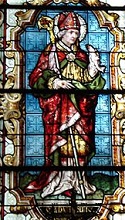
In July 642 the parishioners of Metz travel to Remiremont to collect the remains of Frankish bishop-statesman St. Arnulf (Arnold) of Metz (582-640), and when they reach Champigneulles they are dying of thirst, after which Duc Notto prays for Arnulf's intercession, and a drop of beer at the bottom of a pot miraculously multiplies enough to refresh them all so that they arrive in Metz the next evening.
In the 730s hops are first cultivated in Germany in the Hallertau region.
By the 9th cent. beer brewing in Germany becomes a privilege of the monasteries, with a peak of 500 monastery breweries incl. 300 in Bavaria by the 11th cent; too bad, the wealth and decadent lifestyle of the monasteries spawns a reaction, starting with the Benedictine abbey of Cluny in Burgundy in 910, followed by the Carthusian abbey of Chartreuse in the French Alps in 1084, and the Cistercian abbey in Citeax in Dijon in 1098, who bring back the ascetic monastic lifestyle by the 12th cent. in 1.5K+ monasteries, although the Cistercians later take up brewing.

In 812 Frankish Holy Roman Emperor (HRE) #1 (800-14) Charlemagne (Charles the Great) (742-814) pub. Capitulare de villis vel curtis imperii, detailed regulations for crown lands, incl. breweries; "We wish that the intendant on duty bring before our person samples of beer. We also wish that they bring along their brewmaster so that they can brew for us good beer in our presence" (para. 61); "The administrators have to make sure that workers who use their hands in the preparation of beer, keep themselves especially clean" (para. 34); "We also wish that our intendants compose an annual inventory ledger at Christmas time. We also want a list of the beers they brew so that we know which quantities of the different products are available" (para. 62); these regs. later form the basis of most commercial brewing in France, Germany, and C Europe.
In 822 hops are first mentioned in connection with beer brewing by Abbot Adalhard of the Benedictine monastery of Corbie in Picardy, France; until hops are adopted, the herbal medley called Gruit (Grut) (Gruyt) is used, incl. yarrow, bog myrtle, and juniper; it takes five cents. for hops to completely take over; Germany doesn't adopt them until the 12th cent.; meanwhile most suitable herbs grow on crown lands, putting the crown in a position to tax them and control the beer trade.
On Aug. 18, 849 German Alemannic Benedictine monk Walafrid (Walafried) (Walahfrid) Strabo (Strabus) ("the Squinter") (808-49) dies, leaving several works, incl. Liber de cultura hortorum, about his little beer garden in Reichenau Island on Lake Constance and its herbs, ranking them from best to worst as sage, rue, melons, fennel, lillies, poppies, and the rose ("the flower of flowers"), mentioning that beer is brewed in England and Flanders.
In 873 Archbishop Wilhelm of Cologne confers the right to brew beer to the convent in Gerresheim near Dusseldorf (Düsseldorf), North Rhine-Westphalia, Germany, which receives a city charter in 1288, going on to become a rival of Cologne in all aspects incl. beer; in 1541 Dusseldorf has 35 brewers, who are put under a law by Duke Wilhelm III to only serve quality low-priced beer, while beer from outside the city is heavily taxed; the city goes on to become famous for top-fermented Altbier (Ger. "old beer"), which is copied by Venlo, Netherlands 30 mi. away in 1753.

In 947 HRE (962-73) Otto I the Great (912-73) confers the gruit right on the church of Liege, Belgium, after which the bishop of Metz confers the gruit right on the monastery of Saint Trond, and the bishop of Cologne confers it on the church of Neuss (near Dusseldorf), cementing Church control of the beer industry.
In 950 the Medieval Climate Optimum (Climatic Anomaly) (Warm Period), a period of temps. 1-2 deg. F higher than normal begins (ends 1250); Tree Ring Growth in this half-cent. and the next cent. are especially rapid, indicating a warm period; the warmest period is between 950-1100, becoming the warmest period of the last 2K years prior to the 20th cent.
In 1050 Benedictine Weihenstephan Abbey (founded 768) obtains a brewing license from the city of Freising, Bavaria; meanwhile the Benedictine Weltenburg Abbey (founded 617) in Weltenburg (near Kelheim) on the Danube River in Bavaria does ditto, going on to share the title of oldest monastic brewery on Earth.


In 1075 German HRE (1056-1105) Henry IV (1050-1106) ignores German bishops and sanctions the confirmation of Pope (since Apr. 22, 1073) Gregory VII (1015-85), but after he defeats the Saxon rebels he flops, as the abolition of lay investiture (secular princes granting bishops and abbots the lands constituting their benefices along with the political rights and duties they exercise, incl. when the benefices are sold and free election of bishops is denied) would reduce his power in Germany, and begins the Investiture Dispute (Controversy) (Contest) (ends 1122), one of the biggest church-state struggles in the Middle Ages; Gregory VII opens play by condemning the practice under penalty of excommunication, issuing the 27-point bull Dictatus Papae, formalizing the claims of world dominance of the Roman Catholic Church and the supreme authority of the popey pope pope pope over both church and state; no slouch himself, William I of England defies the pope and continues to control the appointment of English bishops and abbots, allowing no pope to be acknowledged without his consent, and forbidding the entrance of papal legates or letters into England without royal permission - love isn't enough to keep them together? Give me love, give me love, give me peace on Earth? A Jan. 1077 excommunicated HRE Henry IV goes as a penitent to Canossa Castle near Parma in Reggio Emilia, Italy and stands for three days in the courtyard bareheaded and barefooted awaiting an audience with the Christlike-not papa, who grants him absolution on his knees in return for abandoning all claims to the right of investiture of bishops, causing the phrase "Going to Canossa" to be coined by Bismarck in the 1870s. On Mar. 21, 1084 HRE Henry IV captures Rome and imprisons Pope Gregory VII in Castel del Sant'Angelo; on Mar. 24 Guibert of Ravenna is enthroned as Pope Clement III at St. Peter's, crowning Henry IV as HRE; Henry IV and Clement III then invade Apulia and Tuscany, while Robert Guiscard's Norman army sacks Rome, causing a great fire, to the delight of their contingent of Sicilian Muslims; the horrors of the sacking cause Gregory VII to leave Rome with his allies; the five great imperial Roman Forums (Original, Caesar's, Augustus', Nerva's, Trajan's), which had survived all these cents. (with appreciable deterioration) are pretty much destroyed, and the remains partially buried, with the few habitable bdgs. turned into fortresses; Henry IV has the last laugh in the Investiture Controversy, allowing monastic brewing rights to be ignored or revoked and court brewhouses (Hofbrauhauses) to be established to cash in on some of that yummy money, after which many monasteries switch to wine growing, benefitting from the Medieval Warm Period (950-1250).
In 1086 the earliest mention of a beer brewery in Prague, Bohemia.
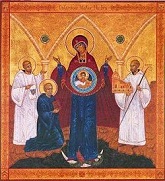
On Mar. 21, 1098 (St. Benedict's Day) St. Robert of Molesme (1028-1111) founds the Benedictine Citeaux Monastery, the first Cistercian (Bernardine) house (abbreviated OCist or SOCist from Lat. Sacer Ordo Cisterciensis); the monks are called White Monks because they wear the white cuccula choir robe over their habits instead of the black cucculas worn by Benedictine monks; they become known for beer brewing.
In 1128 Grimbergen Abbey is founded in Belgium by Norbertine monks, founding a beer brewery that survives to modern times, producing Grimbergen Blonde et al.

About 1150 Abbess St. Hildegard of Bingen (1098-1179) writes Physica Sacra, containing the first mention of the use of hops in beer brewing in Germany, and the first mention of its use as a preservative; "[The hop plant] is warm and dry, and has moderate moisture, and is not very useful in benefiting man, because it makes melancholy grow in man and makes the soul of man sad, and weighs down his inner organs. But yet, as a result of its own bitterness it keeps some putrefactions from drinks, to which it may be added, so that they may last so much longer."
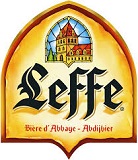
In 1152 Norbertine Leffe Abbey is founded on the Meuse River in Namur, S Belgium, founding a brewery in 1240 and becoming known for their unique subtle ale Laeffe Blonde, becoming the first Abbey Beer; in 1952 it signs the first agreement between a Belgian abbey and a commercial brewery, Lootvoet Brewery in Overjise; in 1977 production is moved to the Stella Artois brewery in Leuven, which in 1988 becomes part of Interbrew.

In 1156 German HRE (1155-90) Frederick I Barbarossa (1122-90) pub. Justitia civitatis Augustensis for Augsburg, the first city law code, containing regulations for brewers; "A brewer who makes bad beer or pours an unjust measure shall be punished; his beer shall be destroyed or distributed at no charge among the poor"; the fine for a violation is five guilders; after a 3rd offense the perpetrator loses his brewing license.

In 1158 English chancellor (since Jan. 1155) (St.) Thomas Becket (1119-70) travels to France as the English ambassador, taking with him a present of iron-bound casks of beer, only to find out that the French have an extensive brewing industry of their own, becoming the first cross-Channel beer shipment?
In 1159 the N German town of Lubeck (Lübeck) on an island enclosed by the Trave River is rebuilt by Henry the Lion, duke of Saxony and Bavaria, becoming a free imperial city in 1227, and forming an alliance in 1241 with Hamburg, which became an imperial city in 1189; in 1356 the Hanseatic League holds its first gen. diet in Lubeck, growing to 170 cities and dominating Baltic maritime trade until 1800, incl. beer.
In the 13th cent. the Worshipful Co. of Brewers is founded in London, England, receiving a royal charter in 1438 fom Henry VI.

In 1250 German HRE (1220-50) Frederick II confers brewing pivileges on the citizens of Regensburg (Ratisbon) in SE Germany; too bad, after a poor barley harvest in 1433 the authorities permit imported beers from as far away as Hamburg and Dortmund; in 1447 they appoint city physician Konrad Megenwart as their first official beer inspector; in 1453 they forbid "seeds, spice, or rushes" in beer, along with thin beers made from the final runnings of the mash.
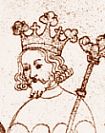

In 1256 the town of Ceske Budejovice in S Bohemia at the conjunction of the Vltava and Maise Rivers is founded by Bohemian Przemyslid king (1253-78) Ottokar II "the Iron and Golden King" (1233-78), who grants it brewing rights, causing the founding of the Svitavy Brewery (closed in 2002), after which the town gains fame for its great Budweiser beer, produced by Budweiser Budvar Brewery (founded in 1785).
In 1267 the Assize of Bread and Ale in England is the first law in England regulating the production and sale of food; to avoid being punished for selling a short-weight loaf, bakers add a 13th loaf to a dozen, becoming known as a baker's dozen; the law is amended in 1822 and 1836 before being repealed in 1863; the Worshipful Co. of Bakers in London enforces the regulations, while brewers are saddled with taxes by the govt., which closely regulates the industry.
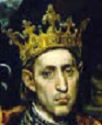
In 1268 French king (1226-70) Louis IX (1214-70) enacts beer purity laws, mandating that only "good malt and hops" be used in beer brewing; by the 1300s hops are also used in the Netherlands.
In 1288 the first beer brewer in Frankfurt am Main, Germany is mentioned in city ordinances.
In 1293 the town council of Nuremberg (Nürnberg), Germany issues an ordinance mandating that only barley be used to brew beer; they are followed by Erfurt in 1351, and Weisensee in 1434.


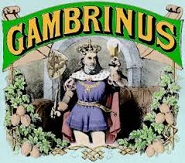
In 1294 Duke (since 1267) John I the Victorious of Brabant (1252-94) dies after being made an honorary member of the brewers' guild in Brussels, possibly spawning the legendary hero Gambrinus (Jan Primus) (named after Gambrivium AKA Hamburg?), alleged inventor of and patron saint of beer; either him or Duke (since 1404) John I the Fearless of Burgundy (1371-1419), who introduces and/or legalizes hops in the county of Flanders, causing them to ditch gruit, and founds the Order of the Hop in 1406.
In 1295 in exchange for releasing some tenements to the abbot and convent of Burton upon Trent, England, Matilda, daughter of Nicholas Shoben is granted a daily ration of two white loaves of breed, two gal. of beer, and one penny, plus seven more gal. of beer for her men; the monks of nearby Wetmore, Staffordshire discovered the superior quality of the water of Burton for brewing earlier in the cent.
About 1300 Paris-based Dominican Jofroi of Waterford pub. Catalogue of All Known Wines and Ales of Europe, recommending his favorites to his colleagues.

In 1333 Oettinger Brewery (Brauerei) is founded in Oettingen in Bavaria, Germany, going on to becoming the best-selling brand in Germany in 2004 (5.29M barrels in 2011), keeping prices low by not advertising.
In 1351 Einsbeck in S Lower Saxony, Germany begins exporting its strong lager beer, joining the Hanseatic League in 1368 and making fans of the dukes of Wittelsbach in Munich, Bavaria, who mispronounce the name as "ein bock" (billy goat) and clone it in their ducal brewhouse, becoming known as Bock style beer.
In 1351 Erfurt in Thuringia, Germany passes a burdensome ordinance regulating beer; "A calibrated tankard must always be filled to the mark. The beer in it shall cost 4-1/2 pfennigs and 8 groschen. No burgher or councilor may brew more than two beers per year, nor may he make half a brew, nor may he mill less or more than three boxes of malt to brew with. Only on Wednesday evening, and not before the beer bell is rung, may he start a fire under the tun and start brewing. But nobody may brew who does not possess containers, tuns, kilns and casks. The beer must be an entire brew. The amount to be brewed must be announced on Walpurgis Day (Feb. 25), and the precise amount announced must then be brewed. Nobody may brew with straw and twigs for fire. Anybody who breaks an innkeeper's beer mug or runs away without paying, will pay a 10-groschen penalty or must leave town. Anybody who buys hops may not touch the measuring jar until the vendor has filled it and has removed his hand from it. In the countryside, nobody may sell beer from another region nor may he brew without the knowledge of the town. Any burgher caught brewing in the countryside will no longer be considered a burgher of the town."
In 1363 Munich, Germany creates a 12-man city council to oversee beer production, becoming so picky that by 1372 there are only 21 brewers left in town, causing them to sell beer sans aging to keep up with the demand; in 1420 the city decrees that all beer must be aged for at least eight days; in 1450 there are still only 30 brewers in town, and Bavarian Duke Stephan II asks people to brew more beer at home.
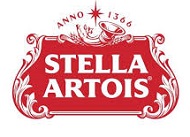
In 1366 the Den Hoorn Brewery is founded in Leuven, Belgium; in 1717 head brewer Sebastien Artois purchases it and changes the name to Artois Brewery; in 1926 it introduces Stella Artois, named after the Christmas star, with a horn logo, exporting to the Euro market in 1930; in 1988 it becomes part of Interbrew.
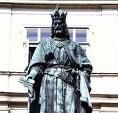
In 1375 Bohemian House of Luxembourg king and HRE (1346-78) Charles (Wenceslaus) IV (1316-78) endows the Dobrow Monastery near Pilsen (Plzen), Bohemia with the beer right, with the brewery becoming the oldest to survive to modern times.
In 1375 Zerbster Bitterbier, made in Zerbst, Saxony-Anhalt, Germany (between Berlin and Hannover) is first mentioned; the town grows to 600 breweries during the Middle Ages; it is last brewed in 1949.
In 1376 Hamburg, Germany has 457 burgher-owned breweries, growing to 531 in 1526; the main product is whitish Keutebier ale, made mostly of wheat, which by the early 20th cent. evolves into Kolsh (Kölsch) pale ale.

In 1383 Lowenbrau (Löwenbräu) (Ger. "Lion's Brew") Brewery is founded in Munich, Bavaria, Germany; in the 17th cent. it adopts the lion logo; in 1863 it becomes the largest brewery in Munich (35%); in 1928 production reaches 26M gal./year; in the 1930s it is owned by Joseph Schulein (Schülein), a Jew, causing the Nazis to diss it as "Jew beer"; in 1945 the brewery is destroyed in an air raid, and in 1948 after being rebuilt it begins exporting beer to Switzerland, going on to be featured at the 1967 Montreal Expo as the archetype of Munich beer; in 1975 Miller acquires North Am. rights, followed in 1999 by Labatt; in 1997 Lowenbrau merges with Spaten-Franziskaner-Brau, which is acquired in 2003 by Interbrew, which merges in 2004 with AmBev to form InBev, which in 2005 acquires Anheuser-Busch to create Anheuser-Busch Inbev; in 2002-14 Lowenbrau resumes exports to North Am., after which Labatt begins brewing a clone in London, Ont., Canada, causing critics to pan it as inferior.
In 1384 the first beer brewery in Austria is founded in Vienna on the Weidenstrasse.

In 1397 Spaten Brewery (Spade or Malt Shovel Brewery) in Munich, Bavaria, Germany is first mentioned as making Weiser Prew; in 1622 it is taken over by George Spaeth, who gives it the name; in 1807 it is taken over by Gabriel Sedlmayer Sr. (-1836), brewmaster to the Bavarian royal court; in 1841 it introduces Marzenbier (Märzenbier), brewed in icy Mar., becoming a favorite for Oktoberfest, becoming the largest brewery in Munich in 1867; in 1894 it introduces Munchner (Münchner) Hell (Pale) lager, developed since 1872 by Gabriel Sedlmayer Jr. and his brother Josef Sedlmayer, who adopted pale ale techniques to create pale lager, beginning exports to North Am. in 1909; in 1922 it merges with Franziskaner-Leist-Brau; in 1924 it launches the ad slogan "Let yourself be advised, drink Spaten"; in 1997 it merges with Lowenbrau; in 2003 it is acquired by Interbrew; in 2010 it produces 2M barrels.
In the late 14th cent. hopped beer begins to be imported to England from the Netherlands; too bad, English ale drinkers resist its bitter taste until its greater shelf life (months instead of days), smaller amount of grain required, and marketability cause it to win drinkers over, dominating London brewing by the 17th cent.
In 1400 there are 55 breweries and 86 malt houses in Bohemia. Meanwhile the Egyptians and Persians largely give up brewing of spirits under Muslim influence - except for stomach ulcers?
In 1407 Jopen beer is first brewed in Haarlem, Netherlands in modern-day Jopengasse St.
In 1416 after overthrowing the aristocrats and setting up a govt. of the burghers and craftsmen, brewer Johannes Lupi organizes the first brewers' guild in the Baltic Sea port of Danzig, Germany (modern-day Gdansk, Poland), which goes on to become known for the great number and wealth of its members, and their military prowess.
In 1428 hops are first planted in England, ending the Dutch monopoly on hopped beer.

In 1434 the town of Wurzburg (Würzburg), Germany bans beer brewing "forever"; too bad, in 1437 the climate of C Europe reverses its warming trend and experiences harsh winters that decimate the vineyards of S Germany, causing wine to have to be imported from Italy, inflating prices, causing beer bootleggers to spring up; it takes until 1642 for Wurzburg prince-bishop Johann Philipp von Schonborn (Schönborn) (1605-73) ("the German Solomon") to relegalize brewng and establish his own Hofbrauhaus.
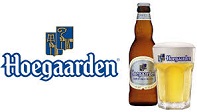
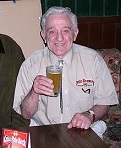
In 1445 the first mention of beer brewing in the village of Hoegaarden near Tienen in Flanders, which becomes known for its mainly wheat White beer (Witbier), with coriander and orange peel added as flavorings; too bad, the last white beer brewery closes in 1957, but in 1966 local milkman Pierre Celis (1925-2011) opens a new one in his hay loft using Laraha (Curacao orange peel); in 1985 after a fire it is acquired by Interbrew, which merges in 2004 with AmBev of Brazil, becoming InBev, acquiring Anheuser-Busch in 2008 to become AB InBev; it is traditionally served in a hexagonal glass with a slice of lemon.
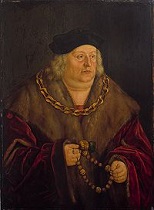
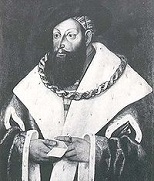
In 1447 the city council of Munich, Bavaria, Germany issues an ordinance requiring beer brewers to use only water, barley, and hops; in 1487 Bavarian duke (1465-1508) Albert (Albrecht) IV "the Wise" (1447-1508) requires all brewers in the city to take an oath of allegiance to the ordinance, and introduces price controls (a one liter beer costs 1 silver pfennig in winter, 2 in summer); in 1493 Duke George "the Rich" (1455-1503) of Bavaria-Landshut extends the ordinance to the duchy of Landshut in C Bavaria.
In 1485 the Kronen Brewery in the Hanseatic town of Luneburg (Lüneburg), Lower Saxony, Germany (31 mi. SE of Hamburg) is one of 80 brewers in town.
In 1489 the Bremen Brewers' Society is formed, becoming Germany's first brewing guild.

In 1492 English king (1485-1509) Henry VII (1457-1509) issues a license to Flemish brewer John Merchant to export large quantities of an "ale called beere", requiring it to be of good quality, with inspection by Geffrey Gate, owner of the Red Lion Brewery in East Smithfield, London on the Thames River between the Tower of London and Wapping; Gates goes on to destroy the brewhouses twice due to weak beer; in 1615 the brewery is leased by John Parsons for $44/year for 31 years, after which it stays in the family for three more generations, with their beer becoming known as Parson's Black Champagne; in 1694 the Red Lion Brewery is assessed as the most valuable brewery in London; his son Sir John Parsons Jr. (1639-1717) is elected lord mayor of London in 1703; in 1717-41 his Jacobite son Sir Humphrey Parsons (1676-1741) becomes mgr., going on to be elected lord mayor of London in 1730 and 1740, and obtain a privilege of supplying the French court in 1730; in 1779 the brewery is acquired by Henry Goodwyn, followed in 1802-1933 by the Hoare banking family, who run Hoare's Bank at the sign of the Golden Bottle in Fleet St.
In 1499 the famous beer hall U Fleku is founded in Prague, Czech.
In 1509 Brasenose College (Ger. "Brassenhuss" = brewhouse) at Oxford U. is founded by lawyer Sir Richard Sutton (-1524) and Lincoln bishop (1496-) William Smyth (Smith) (1460-1514) on the site of a brewery, becoming the last of the pre-Reformation colleges; future students incl. author Richard Burton, antiquarian Elias Ashmole, and John Foxe.
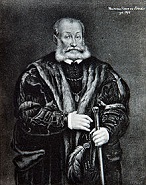
In 1512 Ascanian prince Wolfgang of Anhalt-Kothen (Anhalt-Köthen) (1492-1566) grants brewing rights to the citizens of Ballenstedt in Saxony-Anhalt; in 1521 he becomes one of the first German princes to go Lutheran.


On Apr. 23, 1516 to stop widespread adulteration, Bavarian duke (1508-50) William IV (1493-1550) issues his Reinheitsgebot (Beer Purity Regulations) before a committee in Ingolstadt, declaring that only barley, hops and water can be used, later allowing yeast and wheat; in 1987 the law is ruled not to apply to imported beer; in 1993 the Vorlaufiges Biergesetz (Provisional Beer Law) is passed, expanding the Reinheitsgebot to pemit more ingredients; meanwhile due to microbial infections in summertime, William IV's successor (1550-79) Albert (Albrecht) V (1528-79) prohibits all brewing between Apr. 23 and Sept. 21, causing only lagers to be brewed.




With Catholic indulgences, crime does pay? The papal quest for filthy lucre finally reaps public reaction, creating the Protestant schism? On Oct. 31, 1517 (Wed.) German Roman Catholic Augustinian friar Martin Luther (1483-1546), after becoming sick of the indulgences peddled by Dominican friar Johann Teufel, er, Johann Tetzel (1465-1519) et al., and convinced that 1517 marks the end of the Babylonian Captivity of the Congregation, nails his Ninety-Five (95) Theses (in Latin) to the door of the Wittenberg Palast (Palace) (Castle) Church (known for housing 5K+ holy relics, which he detests), arguing against indulgences and other Roman Catholic Church abuses, claiming that the pope is the Antichrist, "and his seat is that of Satan himself", "the papacy is a general chase, by command of the Roman pontiff, for the purpose of running down and destroying souls", and that "The treasures of indulgences are nets with which they now fish for the wealth of men", igniting the already-smoldering Protestant Reformation (he could have picked a more PC date than Halloween?); his offer of a public debate is declined, but his theses are soon translated from Latin to German and pub., causing the German middle and merchant classes, who are already chafing at Italian efforts at domination to rise to his support in reaction to the fugging Fuggers (successor to the Medicis) and other papal bankers who are draining Germany of gold for Rome with this holy racket (the Fuggers are behind the loans made by Albert of Brandenburg to the pope); the big revelation to Luther that gave him strength was from the Bible, incl. the Seven Trumpets in Rev. Ch. 8, and Rev. 13:5, where it says that the Antichrist will rule the world for 42 mo., which he turns into 1260 years instead of days, setting year 1 in 539 C.E., and claiming that Christ will therefore return in the year 1799, thus it's time to get started whipping things up? - the wildlife experience, more than a museum? As to beer, Luther once wrote the following soundbyte: "Whoever drinks beer, he is quick to sleep; whoever sleeps long, does not sin; whoever does not sin, enters Heaven! Thus, let us drink beer!" He once wrote home to his wife the soundbyte: "I keep thinking what good wine and beer I have at home, as well as a beautiful wife... You would do well to send me over my whole cellar of wine and a bottle of thy beer."
In 1517 Kronen (Ger. "crown") Brewery in Dortmund, Germany is first mentioned; in 1845 it converts to lager brewing; in 1871 it introduces Dortmund Export.
In 1520 the lager method of brewing is invented in Bavaria, Germany after Saccharomyces eubayanus yeast is brought back from the beech trees in Patagonia in South Am. and brewers fuse it with their yeast.
In 1526 after training in Hamburg, Hannover, Germany-born brewer Cord Broyan (-1570) invents light brown barley-wheat top-fermented Broyhan Beer, which becomes a hit, gaining wide distribution, causing Hannover in 1609 to limit the number of brewers to 317 and force the burghers to join a shareholders co. and guild, which becomes Gilde Brauerei; it ends up being owned by Anheuser-Busch InBev.
In 1540 the English Parliament legalizes the growing of hops.
In 1544 the English army under Henry VIII invades Picardy, France, and after running out of ale are forced to drink hopped beer for 10 days.
In 1573 German dramatist-poet Heinrich Knaust (1520-80) pub. Der Philosphischen, Hochtouren and Wunderbaren Kunst Bier zu Brauen (5 vols.), the first beermaking manual in Germany, describing 150 different beers, incl. "noble Hamburg beer the queen of all other wheat beers."
In 1574 Smeeth, Kent-born Reginald Scott (Reynold Scot) (1538-99) pub. A Perfect Platform of a Hop-garden, and necessary instructions for the making and maintenance thereof, with Notes and Rules for Reformation of all Abuses, the first practical treatise on hop culture in England; 2nd ed. 1576; 3rd ed. 1578; "You cannot make above viii or ix gallons of indifferent ale out of one bushel of malt, yet you may with the assistance of hoppe make xviii or xx gallons of very good beere, neither is the hoppe more profitable to enlarge the quantity of your drink than necessary to prolong the continuance thereof; for if your ale may endure a fortnight, your beer through the benefit of the hoppe shall continue a month, and what grace it yieldeth to the taste, all men may judge that have sense in their mouths... And if controversy be betwixt Beer and Ale, which of them shall have the place of pre-eminence, it sufficeth for the glory and commendation of the Beer that, here in our own country, ale giveth place unto it and that most part of our countrymen do abhor and abandon ale as a loathsome drink."
In 1577 William Harrison of England pub. The Description of Britain, incl. a description of the important place of hopped beer in Elizabethan society, calling it the preferred beverage of the elite, while unhopped ale is an "old and sick men's drink"; contains a complete description of the beer-making process; "Our drink, whose force and continuance is partly touched already, is made of barley, water, and hops, sodden and mingled together, by the industry of our brewers in a certain exact proportion."
In July 1587 after John White (1540-93) (half-brother of Sir Walter Raleigh) visits the North Carolina area and returns with shocking but cool, twisted-to-Euro-prejudices paintings of the half-naked but partly civilized and hence useful Indians (hence kinda a little bit white?), he leads a party of 116 English settlers (90 men, 17 women, 9 children) and lands on Roanoke Island off the N.C. coast; on Aug. 18 Virginia Dare is born to Gov. John White's daughter Ellinor and Ananias Dare, becoming the first white European child born in the Am. colonies (don't think Heidi Klum and Seal?); wasting no time to make the place liveable, the colonists brew their own ale from corn; on Aug. 27 Gov. White leaves for England with a skeleton crew of 15 to seek help and supplies, leaving instructions that if the colonists are forced to leave in his absence they should inscribe their destination in a "conspicuous place"; too bad, the war between England and Spain keeps him from returning until 1590; the paintings start out circulating in the hands of the elite only, but eventually get made into prints which circulate in Europe for two cents., forming their main impression of Am. Indians; meanwhile white men's diseases (smallpox, typhus, measles) begin their genocidal effect on the defenseless pop.
In 1598 English historian-antiquarian John Stow (Stowe) (1524-1605) pub. A Survey of London; 2nd ed. 1603, which claims that there are 26 "beerhouses" in London, most located along the Thames River between St. Katharine's Hospital and Fleet St.
In 1603 a law is passed in Cologne, Germany requiring breweries to only brew top-fermented beers.
In 1603 the Mermaid Tavern in London is founded by Sir Walter Raleigh, and is frequented by lit. wits incl. William Shakespeare (1564-1616), Ben Jonson (1572-1637), Francis Beaumont (1584-1616), John Fletcher (1579-1625), John Donne (1572-1631) et al.
In 1607 the first shipment of beer arrives in the Virginia Colony from England; in 1609 the first ads appear in London seeking brewers to come to Va.
In 1613 Adrian Block and Hans Christiansen establish the first brewery in the New World on the S tip (Manhattan) of New Amsterdam; in 1614 Jan Vigne (1624-89) becomes the first non-native American (first white Euro male) born in New Netherland at the Block and Christiansen Brewhouse; he grows up to become the first brewer born in the New World.
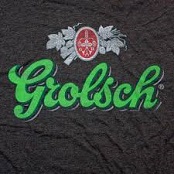
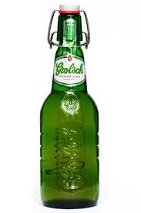
In 1615 Grolsch Brewery (Royal Grolsch) is founded in Groenlo (Grolle), Netherlands by Willem Neerfeldt, and continued in 1676 by his son Peter Cuyper (-1684), cooling the beer in summer with stored winter ice from the Grolse Canal; in 1876 it moves to Enschede and builds a brewery called "The Clock"; in 1895 it is purchased by Theo de Groen, who introduces green swing-top bottles for Grolsch Premium Beer, becoming their most popular beer, becoming the 2nd largest brewery in the Netherlands after Heineken; in Nov. 2007 it is acquired by SABMiller for 816M Euros.
On Jan. 27, 1617 English academic-clergyman George Langbaine the Elder (1609-58), provost of Queen's College, Oxford U. records in his collected notes that John Shurle has a patent from Abraham Lake, bishop of Bath and Wells and vice-chancellor of Oxford U. for the position of univ. ale-tester, with the duty to visit every ale brewery in town and sample their wares, receiving a fee of 1 gal. of strong ale and 2 gal. of strong wort.
On May 23, 1618 the Catholic vs. Protestant Thirty Years' War begins (ends May 15, 1648), killing half of Europe's pop. and leaving it ruined while destroying the brewing and other industries; in 1669 the Hanseatic League formally dissolves; nearly-continuous war continues until the end of the Great Northern War in 1721.

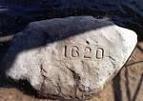






On Sept. 16, 1620 (Sept. 6 Old Style) the Mayflower sails from Plymouth, England, captained by dwarfish (less than 5 ft.?) red-haired soldier Myles (Miles) "Capt. Shrimp" Standish (1584-1656) (who takes his wife Rose along) (selected after the Pilgrims reject John Smith as too bossy and expensive) and mastered since 1609 by 50-y.-o. Christopher Jones (1570-1622) of Rotherhithe on the Thames River in C SE London, with 102 passengers and a crew of 27 incl. Capt. John Smith (1580-1631) (who had been captured by the Pacha of Nalbrits when fighting the Turks - first American encounter with a Muslim tyrant?), pilot and first mate John Clark (1575-1623), Robert Coppin (1590-?) (pilot and first mate?), barber-surgeon Giles Heale (-1653), and 21-y.-o. cooper (prime candidate for conversion and marriage?) John Alden (1599-1687); the True Blue Puritans from Leiden are led by elder and spiritual leader William Brewster (1568-1644) (returned from hiding), fustian (corduroy worker) William Bradford (1590-1657) (who coins the term Pilgrims, because they had been toughened up by their tribulations in England and weaned from England by their stay in Holland, hence can't be discouraged into going home again?), wealthy Pilgrim deacon (voyage organizer) John Carver (1576-1621) (along with his wife Katherine and five servants), Stephen Hopkins (1581-1644) (the only Mayflower passenger with prior New World experience, incl. bein shipwrecked in Bermuda in 1609 and serving several years in Jamestown Colony under Capt. John Smith) and his indentured servants Edward Leister (Liester) and Edward Doty (Doten) (1598-1655) (who get in Plymouth's first duel on June 18, 1621), the Winslow Family (direct ancestors of TLW?), brothers Gilbert Winslow (1600-1631) and Edward Winslow (1595-1655) (one of the 15 Pilgrims who brought servants or children, and one of eight who had the honorable distinction of Mister), and Edward's wife (since 1618) Elizabeth Barker Winslow (1595-1621), plus two dogs (a male spaniel and a mastiff bitch) seeking religious liberty yada yada yada; the ship carries three copies of the Geneva Bible, which they prefer to the state-backed King James Bible; during the voyage a sailor (who had been mocking them for seasickness and God gave him what's coming to him?) and young servant die, while everybody suffers from scurvy; three women are preggers, Elizabeth Hopkins (1585-1644) (who bears son Oceanus on the voyage), Susanna White (-1675) (who on Nov. 25 bears son Peregrine White (1620-1704) aboard the Mayflower in Provincetown Harbor, becoming the first English child born in New England, and after William White dies on Feb. 21, 1621 and Elizabeth Winslow dies on Mar. 24, 1621 she marries Edward Winslow on May 12, 1621, becoming the first bride in Plymouth), and Mary Allerton (1616-99), who has a stillborn son aboard the anchored Mayflower on Dec. 22, and dies in Plymouth on Nov. 28, 1699, becoming the last surviving Mayflower passenger; Edward Winslow's brother John Winslow (1597-1674) (TLW's ancestor?) arrives on Nov. 9, 1621 on the Fortune, and on Oct. 12, 1624 marries Mayflower passenger Mary Chilton; after ignorantly bucking the Gulf Stream the whole way, averaging 2 mph, and straying off course in a storm, they head S then encounter rough waters, and after "We could not now take time to further search or consideration, our victuals being much spent, especially our beer" (William Bradford) (they run out of beer after daily rations of 1 gal. each?) they head back N, and finally on Thur. Nov. 19 (Nov. 9 Old Style) after 65 days at sea arrive at the "back side" of fishhook-shaped Cape Cod (James), 220 mi. N of their intended destination at the mouth of the Hudson River, and set out S to reach it, but after attempting the treacherous Pollack Rip between the S end of the fishook and Nantucket Island they give up and return to Cape Cod in "the northern parts of Virginia".

On May 4, 1626 after being appointed the first dir.-gen. of New Netherlands, Peter Minuit (1580-1638) arrives at the mouth of the Hudson River in the Sea Mew, then on May 6 buys Manhattan Island (discovered in 1609 by Henry Hudson) from the natives for 60 Dutch guilders ($24) in trade goods (beads and geegaws), followed on Aug. 10 by Staten Island for another 60 guilders worth of trinkets; meanwhile the Dutch West India Co. rips off the Spanish treasure ships for 120M guilders?
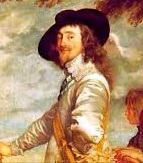
In 1626 the English Parliament prevents king (1625-49) Charles I (1600-49) from placing excise taxes on beer and ale; in 1643 after the start of the English Civil War (1642-51) the revolutionary Puritan Parliament imposes them, along with taxes on bread, meat, salt, sugar et al., claiming necessity as a war measure; after the war the taxes continue until riots and demonstration make the Parliament remove them, while keeping them on beer, malt, and hops, increasing them yearly ($1,632,280 for England and Scotland in 1659) until gin becomes cheaper, causing a rise in gin consumption along with the growth of beer moonshiners, causing James II in 1685 to extend the jurisdiction of the Worshipful Co. of Brewers (London Brewers' Co.) to 8 mi. around London and its suburbs, after which in 1739 the co. adopts new by-laws, incl. the requirement that all members "enter into a bond in £2,00 with the company against any expenses of their being elected to the office of sheriff or lord mayor", starting to go into decline about 1750.
In 1632 the West India Co. builds a brewery on Brewers (Brouwer) St. in Manhattan, New Amsterdam, led by gov.-gen. #5 (1633-8) Wouter van Twiller (1606-54), successor of Peter Minuit, becoming the first commercial brewery in North Am.; the street is later named Stone St. for its cobblestone paving.
In 1634 Samuel Cole becomes the first person to be licensed in Boston, Mass. to operate a tavern.
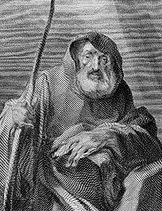
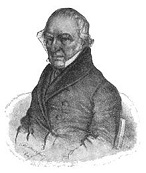

In 1634 the Paulaner Brewery is founded in Munich, Bavaria, Germany by the Minim friars of the Neudec on der Au cloister, and named after Paola, Italy-born founder (St.) Francis of Paola "the Fire Handler") (1416-1507); every spring it brews a special strong beer called Holy Father, which is later called Salvator, and on Apr. 2 the elector of Bavaria attends the annual tapping of the first keg and is served the first mug, which is followed by the 8-day Ausschank festive sale of beer; on Feb. 26, 1780 elector Karl Theodor permits the monks to serve beer to the public year-round; the Holy Father Feast of 1799 is attended by the whole court of elector Maximilian IV Joseph, becoming Munich's largest Volkfest to date; later in the year the cloister on Neudeck Strasse is closed and converted into a penitentiary, and the brewery opposite it is appropriated and sold to the Sovereign Military Order of Malta in 1803; in 1806 Franz Xaver Zacheri (1772-1849) leases it, purchasing it in 1813; in 1820 it becomes one of the six brewers furnishing beer to the annual Oktoberfest; in 1835 it introduces Salvator Doppelbock, followed in 1838 by Schumacher Alt; in spring 1861 the Salvator-Ausschank is moved to the Salvatorkeller in Nockherberg, a small terrace on the E bank of the Isar River in the district of Au in Munich, starting on the Sun. before St. Joseph's Day (Mar. 19), featuring the first Salvator Speech; in 1928 the brewery merges with Gebruder Thomas Brewery; in 1939-50 there is no annual festival, after which the speeches turn into derbleckt or friendly insults of German politicians; in 1994 Paulaner Brewery is acquired by the Kulmbacher brewery group, owned by Heineken and Schorghuber Ventures.
In 1634-5 a plague oubreak in Munich kills 15K of 40K; after it bypasses them, causing villagers to attribute their luck to a vow made to Mary and Jesus, the first passion play is performed in Oberammergau in Bavaria (42 mi. SSW of Munich), and every 10 years thereafter; after it becomes a tourist cash cow, it is held in 1900, 1910, 1922, 1930, 1934 (300th anniv.), 1950, 1960, etc.
In 1637 the first authoritatively recorded brewery in the Mass. Bay Colony is run by Capt. ? Sedgwick.
On Mar. 7, 1639 after Rhode Island, the first Baptist colony is settled at Portsmouth, a compact for the govt. of the colony is signed; on Mar. 22 Anne Hutchinson is expelled from the Mass. Bay Colony, with gov. John Winthrop calling her an "American Jezebel", and her family and a few followers move to Aquidneck (later Rhode) Island near Portsmouth, but the arduous foot journey causes her to miscarry, letting her Mass. critics gloat about the "monstrous birth" as a punishment from God; meanwhile Sergeant Bauleton becomes mgr. of a brewhouse in Providence, R.I.
In 1644 Dutch brewer Mynher Jacobus founds a brewery on Manhattan Island at the corner of modern-day Pearl St. and Old Slip.

In 1664 the shut-your-mouth Trappist Order of Cistercians is founded by Armand-Jean le Bouthillier de Rance (Rancé) (1626-1700) at La Trappe Abbey in La Trappe, Normandy, becoming known for beer brewing - did they cut their hair with the dingleberry scissors again?
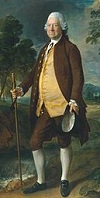
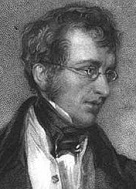
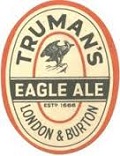
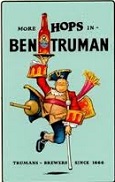
In 1666 Truman's Brewery (originally Black Eagle Brewery) is founded on Brick Lane in Spitalfields, East London, England by William Bucknall; in 1697 Joseph Truman (-1719) becomes mgr.; he is succeeded by his eldest son Joseph Truman Jr., followed in 1722 by his younger son Sir Benjamin Truman (1699-1780), who takes advantage of the new porter to ramp-up sales, and makes it the drink of the British royal family in 1737 after another brand is ordered to celebrate the birth of the duchess of Brunswick, and the crowd hates it and throws the barrels into the fire, after which the prince of Wales orders four barrels of Truman's, which they like; in 1788 Sampson Hanbury takes over the brewery, acquiring its first steam engine in 1805, doubling porter production from 100K barrels in 1800 to 200K in 1820; in 1808 Hanbury's nephew Sir Thomas Foxwell Buxton (1786-1845) joins the brewery, which in 1811 becomes Truman, Hanbury, and Buxton, going on to teach all employees to read and write before going on to become an MP and work with William Wilberforce to abolish slavery; in June 1831 Buxton hosts the Cabinet Dinner of 1831, a beefsteak and porter dinner at the brewery attended by 23 cabinet members incl. PM Charles Grey and lord chancellor Henry Brougham; by 1853 Black Eagle is the largest brewery on Earth (400K barrels/year); in 1873 after pale ale becomes more popular then porter, and the local water proves unsuitable, the co. acquires Philips Brewery in Burton; in 1888 it goes public, going on to produce brands incl. Eagle Ale, Eagle Stout, and Trubrown; by 1969 it is the only major independent brewery in London; in 1971 it is acquired by Grand Metropolitan, who merges it with Watney Mann, and cheapens the formula, causing sales to tank; in 1989 it closes; until the 1970s a logo consisting of jolly peg-legged fat man Ben Truman with the motto "There's more hops in Ben Truman" is used.
In 1670 Samuel Wentworth of Portsmouth obtains the first license to brew beer in N.H.


On Mar. 4, 1681 the English colony of Pennsylvania (Penn.) ("Penn's Woods") (W from the Delaware River for 5 deg. of longitude, and from the 40th to the 43rd deg. of latitude) receives its charter from Charles II to pay off Cromwell supporter Adm. Sir William Penn Sr. (1621-70), who had an outstanding £16K debt owed by the crown at his death in 1670, and his son, English Quaker convert William Penn Jr. (1644-1718) as the proprietor; the colony is named after the father not the son; the N boundary is later changed to 42 deg. because it overlaps New York; in 1767 the S boundary is settled as 19 mi. S of the 40th parallel by the surveying of the Mason-Dixon line; by the end of the year there are about 1K new settlers lured by advertisements to come to a "holy experiment" based on Quaker ideals; Penn sends his Anglican cousin Capt. William Markham (1635-1704) ahead while he recruits fresh fish back in England, North Ireland, and Germany, incl. Quakers and Mennonites from the Rhine country. In 1683 William Penn founds a brewery in his new Pennsbury Manor on the Delaware River near Bristol, Penn., and as proprietor Penn makes sure that beer sellers in Penn. don't have to purchase a license; a $10 license is instituted in 1847; meanwhile William Frampton builds the first brewery in Philadelphia on Front St. between Walnut St. and Spruce St. at the Dock St. Creek.
In 1687 Francis Perot's Sons Malting Co. is founded in Philadelphia, Penn. by Anthony Morris as the Brew House, becoming the oldest business house in the U.S.; it closes in 1894.
In 1691 John Lofting of London, England, known for his fire engine patent invents "a very useful engine for starting of beer, and other liquors which will draw from 20 to 30 barrels an hour, which are completely fixed with brass joints and screws at reasonable rates", becoming the beginning of draft beer.
In 1695 the term "flip" is coined to describe a mixture of beer, rum, and sugar, heated with a red-hot iron to make it froth or flip up; later, eggs are added.
In 1712 a wharf is built on the River Trent in Burton upon Trent, England, allowing navigation to Nottingham and causing the town to become a major site for exporting beer to Hull and London, after which several breweries open by the end of the cent., ramping up after Burton brewer Samuel Allsopp learns to replicate the pale ale produced in London in 1822 and best them with their better water, going on to produce India pale ale (invented in the late 18th cent.) that is hopped-up to stay fresh during the long trip to India, and becomes popular in England by 1840; later railways are built allowing beer to be exported throughout Britain, and by 1880 Burton has 30+ breweries, producing 35% of all beer in Britain; too bad, after the Liberal govt. turns prude, the number shrinks from 20 in 1900 to eight in 1928, and three in 1928, incl. Bass (founded 1777), Marston's (founded 1834), and Ind Coope (founded in 1845).
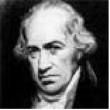

In 1714 Danzig, Poland-born Daniel Gabriel Fahrenheit (1686-1736) of Amsterdam invents mercury-in-glass thermometer, followed in 1724 by the 0-32-212 Fahrenheit Scale, which becomes popular with beer brewers. In 1742 Swedish astronomer Anders Celsius (1701-44) proposes the 0-100 Celsius (Lat. "centigrade" = 100 steps) Scale for use in lab work to the Royal Swedish Society. with 0 for the boiling point and 100 for the freezing point; in 1745 Carolus Linnaeus inverts it; mercury solidifies at -39 C; after the Celsius scale is adopted by the internat. scientific community, only the U.S. sticks with the Fahrenheit scale.
In 1721 Porter, a heavily-hopped beer mixture of dark to light malts is invented in London, England, becoming the first beer to be aged at the brewery and shipped ready-to-drink, and the first that could be made on a large scale; the name comes from the landlord of the Old Blue Last Inn in Shoreditch, London, who orders Harwood Brewery to supply it ready-mixed, and whose customers are mainly market porters; too bad, it initially fails to gain popularity in the Am. colonies.
In 1729 to cope with the Gin Craze caused by the accession of Protestant William of Orange in 1688, which started out as an alternative to Roman Catholic French brandy, causing Londoners to ditch beer, the English Parliament passes the Gin Act, increasing the duties on gin, doing ditto in 1736, 1743, 1747, and 1751; "Drunk for 1 d.; dead drunk for 2 d.; straw for nothing" appears on a sign over a gin shop in 1736; in 1734 the 1729 Gin Act raising the price of gin in a country where every sixth house is a saloon leads to the Gin Riots, after which the govt. backs off and lowers prices again; consumption soon rises to 8M gal. a year and the govt. gets antsy? - what they need now is a religious revival?

In the 1730s Charrington Brewery is founded in Bethnal Green, London by Robert Westfield; in 1766 John Charrington (-1815) joins, forming Westfield, Moss & Charrington; in 1783 Charrington and his brother Henry gain full control of the business, becoming the 2nd largest brewery in London in 1807 (20,252 barrels/lyear); in 1964 it merges with United Breweries of London to become Charrington United Breweries; in 1967 it merges with Bass Brewery to become Bass Charrington, the largest brewery in the U.K.; in 2000 it is acquired by Interbrew.
In 1731 Regulations and Instructions Relating to His Majesty's Service at Sea is pub. in Britain as the fundamental regs governing the org. and discipline of the British Navy, providing for each sailor to get 1 gal. of weak beer a day.
In 1734 Mary Lisle becomes the first female brewer in the U.S., opening the Edinburgh Brewhouse Brewery in Philly (closes 1751).
In 1738 Maj. William Horton builds the first brewery in the Am. Deep South in Jekyll Island, Ga.

In 1749 Scottish & Newcastle Brewery is founded in Edinburgh, Scotland by Grizel Syme and her sons after her 2nd hubby leaves her a brewery, becoming William Younger & Co.; in 1931 it merges with McEwan's, becoming Scottish Brewers; in 1960 it merges with Newcastle Breweries, makers of Newcastle Brown Ale (1927) and Newcastle Scotch Ale, becoming Scottish & Newcastle, producing 6M barrels/year in 1985; in 1995 it acquires rival Courage Brewery, becoming the biggest brewery in the U.K. (13M barrels/year).

In 1750 Samuel Whitbread (1720-96) founds Hind's Head Brewery on Chiswell St. in London, England, producing only porter and becoming a huge success, becoming the 2nd largest brewery in London (64K barrels/year) in 1760, and the largest in London in 1796 (202K barrels/year), making porter the working man's drink; in 1785 he installs the Whitbread Steam Engine one of the first rotative steam engines ever built, designed by James Watt; in 1787 the brewery is visited by George III and Queen Charlotte; Whitbread goes on to become an MP in 1768-90, supporting the abolition of slavery and a minimum wage law.


On Dec. 31, 1759 after hops are introduced to Ireland, and his godfather Archbishop of Cashel (since 1744) Arthur Price (1678-1752) leaves him £100 in his will in 1752, which he uses in 1755 to buy a brewery at Leixlip (10 mi. from Dublin) at the confluences of the Liffey and Rye Water Rivers, Sir Arthur Guinness (1725-1803) founds the Guinness Brewery at St. James' Gate in Dublin, Ireland, and secures a modest 9K-year lease at £45/year; the logo features an Irish harp; at first only ales are produced; in 1760 the thermometer is introduced to control quality, followed by the hydrometer in 1770; on May 19, 1769 the first ale is exported, 6-1/2 barrels to Britain; in 1778 the first well-hopped brown malt porter is introduced, evolving into single stout, double stout, and the the main product Guinness Extra Stout; in 1801 extra-hoppy Guinness Foreign Extra Stout is first produced for export; during the Napoleonic War (1803-15), a malt tax is passed, causing less malt to be used; in 1816 a law is passed controlling purity, mandating that only malt and hops be used in beer production; in 1817 black patent malt (kilned at 200C) is invented by Daniel Wheeler, which makes it possible to use up to 95% cheaper pale malt to obtain the required flavor; about 1800 it is discovered that aged porter (6-18 mo. old) can be diluted 2:1 with young porter and still be accepted by consumers; after Guinness and several other brewers and distillers are raised to the peerage, they become known as the Beerage; in 1932 the HQ is moved to London; in 1960 they introduce Harp Lager; in 1997 it merges with Grand Metropolitan to form Diageo; by 2016 stout accounts for 34% of the beer market in Ireland, with lager at 60% and ale at 6%.
In 1762 Michael Combrune pub. The Theory and Practice of Brewing, becoming the first attempt to establish rules and principles for the art of brewing; pub. with the permission of the Worshipful Co. of Brewers of London; rev. ed. pub. 1804.
In 1763 Scottish and Scots-Irish (codeword for Protestant) settlers arrive in record numbers in North Am., and fan out from Philly.
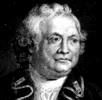
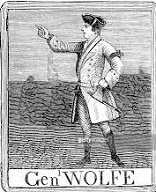

In 1768 after serving with Rogers' Rangers in the French and Indian War, Danvers, Mass.-born brewer Israel "Old Put" Putnam (1718-90) opens the General Wolfe Tavern in Brooklyn, Conn., hanging a yellow pine sign on his door carrying a full-length portrait of Gen. Wolfe. On June 17, 1775 after the rebels learn of British plans to reinforce Bunker (Bunker's) Hill (modern-day Suffolk County) N of Boston, and beat them to the punch under Lt. Col. John Robinson (1735-1805), reinforcing nearby Breed's Hill instead, the British assault them, resulting in the Battle of Bunker Hill (Breed's Hill); the rebels are ordered by their ranking officer (cmdr. of Conn. forces since the Battle of Concord), pudgy-faced Maj. Gen. Israel "Old Put" Putnam (1718-90) not to fire until they can see "the whites of their eyes"; the Brits win when the rebels run out of gunpowder and have to retreat, but sustain 1K casualties (226 dead, 828 wounded) vs. 400 (140 dead, 301 wounded) for the rebels; Dr. Joseph Warren (b. 1741), who was appointed maj. gen. on June 14 and offered to fight as a private then insists on leading a charge is KIA in the battle after uttering the soundbyte: "These fellows say we won't fight! By Heavens, I hope I shall die up to my knees in blood", becoming a martyr despite Gen. Gage claiming that his death is worth 500 rebels; former slave Salem Poor (1747-1802) kills British Lt. Col. James Abercrombie (b. 1732); freed slave Peter Salem (1750-1816) (Muslim?) kills British leader Maj. John Pitcairn (b. 1722), allowing the rebels to escape; Mass. pres. James Warren fights in the battle alongside his wife Mercy Otis Warren's brother James Otis Jr., then is appointed a gen. but refuses to serve in the Continental Army under officers of lesser rank, and ends up as Washington's paymaster; the song Yankee Doodle, originally used by the British to ridicule Yankee ineptitude is adopted as an "in your face" American marching song because of this battle?
In 1772 the Bierringerin chime is installed in St. Stephan's Cathedral (Stephansdom) in Vienna, Austria to ring beer hall closing times.
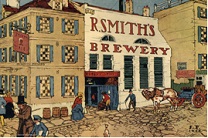
In 1774 Robert Smith's Ale Brewery is founded in Philly by Joseph Potts; in 1786 it is acquired by Henry Pepper (-1898), who supplies Indendence Hall with a clock and bell; in 1845 English immigrant Robert Smith (1807-93) purchases it, introducing Smith's Tiger Head Ale; in 1888 a new brewery is built W of the Schuykill River next to the Philly Zoological Gardens; in 1896 it becomes a branch of Schmidt's Brewery; it goes on to become the oldest brewery in continuous operation in the U.S. (64.4K barrels in 1907) until it closes in 1920; Schmidt's continues selling Tiger Head until they close in 1987.
In 1774 the Single Brothers Brewery and Distillery opens in the Moravian religious settlement of Salem, N.C.

On Sept. 13, 1777 Prussian king (1740-86) Frederick II the Great (1712-86) issues his Coffee and Beer Manifesto, addressed to the provinces of Pomerania and Brandenburg, complaining of the increasing popularity of coffee over beer, with the soundbyte: "It is disgusting to notice the increase in the quantity of coffee used by my subjects and the amount of money that goes out of the country in consequence. Everybody is using coffee. If possible this must be prevented. My people must drink beer. His majesty was brought up on beer and so were his ancestors and his officers and soldiers. Many battles have been fought and won by soldiers nourished on beer, and the king does not believe that coffee-drinking soldiers can be depended on to endure hardship or to beat his enemies in case of the occurrence of another war"; after the govt. establishes a monopoly on coffee roasting and jacks up the price until only the wealthy can afford it, the proclamation works, and coffee is permanently eclipsed by beer as the drink of the Prussian people.
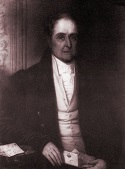
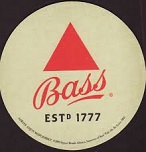
In 1777 Bass Brewery is founded in Burton-on-Trent, England by William Bass Jr. (1717-87), producing Bass Pale Ale, and beginning exports to Russia in 1784; after William's death, his son Michael Thomas Bass Sr. (1759-1827) runs the brewery with his brother William Bass III, taking sole control in 1795, becoming the largest brewery on Earth in 1877 (1M barrels/year); the red triangle Bass logo becomes the first registered trademark in the U.K.; in 1967 it merges with Charrington United Breweries to become Bass Charrington, the largest brewing co. in the U.K.; in 2000 it is acquired by Interbrew.
In 1777 John Richardson (1743-1815) of England begins pub. lit. on beer brewing (until 1805), becoming the model for beer brewery writers and going on to promote the saccharometer in brewing, becoming known as "the Father of Methodical Brewing"; his son Philetus Richardson (1776-1838) becomes head porter beer brewer at Whitbread's Hind's Head Brewery.
On May 9, 1785 Joseph Bramah of England patents the hydraulic beer pump handle (beer engine), allowing kegs to be stored beneath the bar in the cool cool basement.


In 1786 Molson Brewery is founded outside Montreal, Canada by English-born Unitarian Freemason John Molson (1763-1836), going on to become the oldest brewery in North Am., and the 7th largest brewery in the world by 2005, when it merges with Coors to become the Molson Coors Brewing Co.
In June 1789 Mass. passes An Act to Encourage the Manufacture and Consumption of Strong Beer, Ale, and Other Malt Liquor, ordering brewhouses to make at least 100 barrels of beer per year, exempting them from taxes for five years; "The wholesome qualities of malt liquors greatly recommend them to general use", especially "preventing the pernicious effects of spirituous liquors"; George Washington announces his "Buy American" policy, announcing that he will only drink porter made in America- rinse out your mouth with the medication, spit it out?
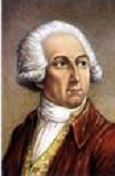
In 1789 French chemist ("Father of Modern Chemistry") Antoine (Antoine-Laurent de) Lavoisier (1743-94) pub. Traite Elementaire de Chimie, the first modern chemical textbook; it defines an element as a single substance that can't be broken down by chemical analysis and from which all chemical compounds are formed; announces that fermentation produces carbon dioxide (carbonic gas) and spirit of wine, saying that it is "more appropriately called by the Arabic word alcohol since it is formed from cider or fermented sugar as well as wine", and pub. the first chemical equation "grape must = carbonic acid + alcohol", calling it "one of the most extraordinary in chemistry", adding: "In these experiments, we have to assume that there is a true balance or equation between the elements of the compounds with which we start and those obtained at the end of the reaction."
In 1792 N.H. waives taxes on brewing property to stimulate construction.
In 1793 Philly on the Delaware River becomes the top producer of beer among U.S. seaports.
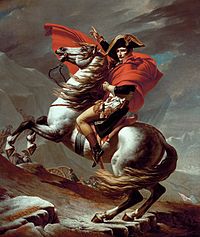


In 1794 the French under Corsican-born aspiring emperor Napoleon Bonaparte (1769-1821) occupy the Rhineland incl. Dusseldorf and Cologne, going on to conquer most of Europe by 1806, causing German HRE (since July 5, 1792) Francis II (1768-1835) to dissolve the Holy Roman Empire on Aug. 6, 1806 and content with calling himself emperor of Austria; meanwhile on Mar. 15, 1806 Napoleon installs his clotheshorse brother-in-law Joachim Murat (1767-1815) as gov. of the Rhineland (grand duke of Berg and Cleves) (until Aug. 1, 1808), and he decides to outlaw all trade and prof. assocs. incl. brewer guilds, allowing people to choose their own trade or profession (known as the Gewerbefreiheit); Bavaria already did it in 1800; after Prussia is defeated at the Battle of Jena-Auerstedt on Oct. 14, 1806, the Prussian Reforms do ditto; on June 18, 1815 the Battle of Waterloo in Belgium defeats Napoleon permanently, and the Rhineland becomes a province of Prussia, continuing the Gewerbefreiheit, with competition working to shrink the numbers of breweries in Munich from 60 in 1790 to 35 in 1819 and 15 in 1865.
In 1796 English immigrant John Boston (-1804) founds the first brewery in Australia in Sydney, manufacturing beer from malted maize flavored with Cape gooseberry (Lycopersicum).
In 1796 Dr. Cornelius Cunningham and James Greenleaf open Washington Brewery at 21st, 22nd, and B Sts. in Washington, D.C.; the federal govt. doesn't convene in the city until 1800.



In 1796 Austrian brewer Franz Anton Dreher Jr. (1736-1820), son of innkeeper Franz Anton Dreher (1689-1743) founds Dreher (Schwechat) Brewery in Klein Schwechat near Vienna, becoming a success producing lager beer; in 1841 his son Anton Dreher (1810-63), friend of Gabriel Sedlmayer Jr. of Spaten Brewery introduces Schwechater Lagerbier, pioneering Pale Lager, which combines the crispness of lager with the pale hues of English ale, becoming known as Vienna Style Beer, causing him to become known as "the King of Brewers". In 1854 Kobanya Brewery is founded in Kobanya, Budapest, Hungary, producing brands incl Arany Aszok and Dreher Bak; in 1862 Dreher acquires it; the combined co. becomes independent in 1907 until the Communist takeover in 1949, which nationalizes it; in 1993 it joins the South African Breweries (SAB), which in May 2002 merges with the Miller Brewing Co. to create SABMiller.

In 1801 English immigrant James Vassar founds a brewery in Dutchess County, N.Y., moving to Poughkeepsie, N.Y. in 1801 and capturing most of the customers in the river towns from Hudson to Newburgh; in 1810 his son, East Dereham, Norfolk, England-born Matthew Vassar (1792-1868) joins the family brewing business on Vassar St. in Poughkeepsie; in 1811 it burns down, and he takes over the mgt.; in 1814 after fighting in the War of 1812 he opens M. Vassar & Co. on Vassar St., becoming the largest brewery in the U.S.; in 1836 he builds a larger facility on the waterfront, with a cap. of 60K barrels/year, complete with its own fleet of sloops; in 1861 he founds Vassar College, becoming one of the first women's colleges in the U.S.
In 1803 after arriving in New York City last year and writing to Pres. Jefferson about needing to be naturalized to patent an invention, Irish-born (Roman Catholic) brewer Joseph Coppinger (-1825) founds Point Brewery in Pittsburgh, Penn. on the site of old Fort Pitt; in 1805 he enters a partnership to found a brewery in Jessamine County, Ky., resulting in a lawsuit that is settled by Rev. Stephen Theodore Badin, the first Roman Catholic priest ordained in the U.S.; in 1810 after moving to New York City he writes a letter to Pres. James Madison, proposing the establishment of a nat. brewery in Washington, D.C.; in 1815 he pub. The American Practical Brewer and Tanner, describing a method of malting Indian corn; on Apr. 6, 1815 after Jefferson saw an 1813 advertisement and wrote him expressing a desire to buy it, he writes a letter to ex-U.S. pres. Thomas Jefferson, proposing a subscription brewery in Washington, D.C.; Jefferson writes back, with the soundbyte: "In my family brewing I have used wheat as we do not raise barley."
In 1803 after 4+ cents. of Bierzwang (Ger. "beer coercion"), where local authorities exclude beers brewed outside their walls, the Bierfreiheit (Ger. "beer freedom") is established in Germany under the influence of the Napoleonic conquest.
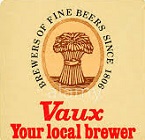
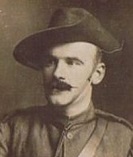
In 1806 Vaux Breweries in Sunderland, Tyne and Wear, England is founded by Cuthbert Vaux Sr. (1779-1850), producing Bitter, Mild, Pale Ale, Maxim, Double Maxim, Sampson, Sunderland, and other brands; Cuthbert's son Cuthbert Vaux Jr. (1813-78) takes over, followed by Cuthbert Jr.'s son John Storey Vaux (1834-81), and John's son Cuthbert Vaux III (1862-1927); John's other son Ernest Vaux (1865-1925) founds the first Boy Scout troop in the world with Robert Baden-Powell, going on to become a popular lt.-col. in the British army in WWI; in 1972 the co. is acquired by Wards Brewing Co. of Sheffield, England, which in 1981 acquires Fred Koch Brewery in Dunkirk, N.Y.; it closes in 2000.
On Apr. 13, 1808 the first temperance society in the U.S. is formed by the members of the Congregational church in Moreau, Saratoga County, N.Y.
In 1809 the first successful brewery in the village of St. Louis, Mo. (pop. 1K) is founded by John Coons; it closes in 1811; meanwhile in 1810 the Bellefontaine Brewery of Jacques Delassas St. Vrain advertises strong beer for $10/barrel; the brewery burns down in 1812.
In 1810 there are 132 breweries in the U.S. (pop. 7M), producing a total of 185K barrels/year (per capita consumption 1 gal./year), with Penn. #1 at 48 (71,273 barrels/year), N.Y. #2 at 42 (66,896 barrels/year), and Mass. (13) at #3 (22,400 barrels/year); breweries are all small-scale.
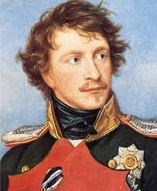
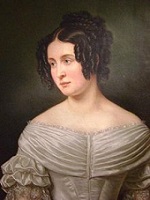
In Oct. 1810 the 2-week beer-guzzling crowd-pleasing Oktoberfest is invented by Munich brewers as a celebration of the Oct. 12 wedding of young prince (king in 1825-48) Ludwig I of Bavaria (1786-1868) to Therese Charlotte Luise of Saxe-Hildburghausen (1792-1854); Ludwig I goes on to become a patron of the arts, turning Munich into the "Athens on the Isar River".
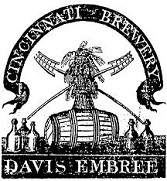
In 1811 English-born Quaker Davis Embree founds the first brewery in Cincinnati, Ohio at 75 Water St. at the SE corner of Water and Elm Sts. on the Ohio River, using a horse treadmill to produce 5K barrels/year.
In spring 1812 retired ex-U.S. pres. Thomas Jefferson begins brewing beer at his Monticello estate in Va.; on May 12 he orders his slaves to bottle it.
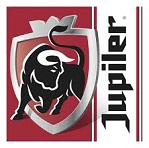
In 1812 the Piedboeuf Brewery is founded in Jupille-sur-Meuse, Belgium, introducing Jupiler brand in 1966, which becomes the best-selling beer in Belgium; in ? it is acquired by Anheuser-Busch InBev.
On Oct. 17, 1814 a 320K-gal. vat in the Meux and Co. Brewery of Richard Meux in St. Giles, London, England erupts, killing eight people in the tidal wave "by drowning, injury, poisoning by porter fumes, or drunkenness."
On Dec. 11, 1816 "Hoosier State" Indiana is admitted as the 19th U.S. (free) state, adopting an Ind. Constitution (2nd in 1851); it has a 41-mi. coastline on Lake Michigan, the smallest; within a year two commercial breweries open, followed by 350+ more by modern times.
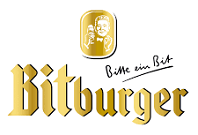
In 1817 Bitburger Brewery is founded in Bitburg, Rhineland-Palatinate, Germany by Johann Wallenborn (1784-1830), rising to the 3rd best-selling brewery in Germany in modern times, with the slogans "Bitte ein Bit" and "Germany's Draft Beer no. 1".
In 1818 indirect hot-air kilning of malted grain is introduced to replace direct-smoke kilning in beer brewing, eliminating bad flavors and allowing pale malt to be dependably produced.
In 1819 Nathan Lyman founds Aqueduct Spring Brewery, the first brewery in Rochester, N.Y.; it closes in 1844.
In 1819 Francis Perot (-1883) of Philadelphia, Penn. installs a 10 hp steam engine built by inventor Thomas Holloway in his Vine Street Brewery, becoming the first stationary steam engine in the U.S.; too bad, by the 1850s U.S. breweries are lagging 50 years behind England in the use of steam engines.
In 1822 the Country Brewers' Society is founded in London, England for brewing cos. in England and Wales located outside the city of London, growing to 43 affiliates and pub. the monthly mag. Brewing Trade Review.
In 1825 the British govt. reduces its duty on spirits, causing gin consumption to rise from 4,132,263 gal. this year to 9,311,624 gal. next year, with a corresponding increase in crime and pauperism; gin goes for 3.5 pence/pint, vs 5 pence for 2 pints of beer, causing beer brewers to ally with temperance groups, touting beer as a temperance drink, a source of nourishment and calories for the working man, safer than water, etc.; meanwhile in 1822 Lord Brougham disses tea drinking as leading "not to the cultivation of one single acre of English land", while beer is "a good, sound, wholesome constitutional beverage of the country."

On Feb. 13, 1826 the Am. Temperance Society (Am. Society for the Promotion of Temperance) is founded in Boston, Mass. by Rev. Lyman Beecher (1775-1863) (father of Harriet Beecher Stowe) et al. to outlaw the sale and manufacture of all alcoholic beverages; within five years it has 170K members in 2.2K local chapters; in 1836 it merges with the Am. Society for the Promotion of Temperance (formed in Boston, Mass. in 1826) to form the Am. Temperance Union, which introduces a pledge of "teetotalism" (total abstinence); too bad, anti-slavery reforms and the 1837 Panic weaken the abstinence movement until 1840, when the Washingtonian Movement in Baltimore, Md. begins holding religious-style revival meetings, and spreads across the U.S., leading to the formation of the Sons of Temperance in 1841, which uses fraternal org. techniques, reaching 238K members in 1850; by the late 1830s temperance reformers drop moral persuasion for legal coercion, lobbying for state prohibition laws, leading to prohibition in Maine in 1851, followed by several states, which are repealed or declared unconstitutional by 1857; in 1869 the Prohibition Party is formed in Chicago, Ill., going on to nominate U.S. pres. candidates; in 1874 the Women's Christian Temperance Union is formed in Cleveland, Ohio; in 1895 the Anti-Saloon League is formed by evangelical Protestant men to work for a U.S. constitutional amendment, finally getting it passed in 1919.
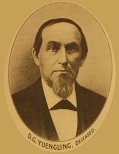
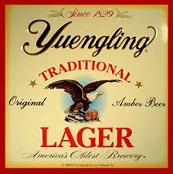
In 1829 D.G. Yuengling & Son Brewery (originally Eagle Brewery until 1873) is founded in Pottsville, Penn. by Aldingen (near Stuttgart), Germany-born David Gottlieb Jungling (Jüngling) (Yuengling) (1808-77) (Ger. "young man"), surviving Prohibition by producing neer beers and running a dairy, celebrating the end of Prohibition by creating Winner Beer and shipping a truckload to the White House; in 1977 after the 1976 U.S. Bicentennial gives them a sales boost, they acquire Mount Carbon Brewery in 1977; in 1985 it is listed in the Nat. Register of Historic Places as the oldest brewery in the U.S.; in 1987 it introduces amber Yuengling Traditional Lager, which becomes a hit, producing 138K barrels in 1990, 80% of the total, sold in 22 oz. "deece bomber" bottles; the main market is in the Delaware Valley (Penn., S N.J.), New York, Ind., Ky., Ga., Fla., Ala., and Tenn.; in 2011 it ties Boston Beer Co. as the largest Am.-owned brewery (2.8M barrels).
In 1830 the British govt. passes the Beerhouse Act of 1830, allowing small householders to open beershops after paying two guineas for a license, causing hundreds of new cheap brewhouses and breweries to spring up, and the avg. yearly beer consumption to increase from 426M gal. in 1829 to 526M in 1830, causing King William IV to become "the most popular monarch among pub names"; London (pop. 2M) has 12 major porter breweries, providing 85% of the beer consumed in the city, while pale ales esp. from Burton begin gaining in popularity, passing them up by the 1850s; by 1841 45.5K new licenses have been issued; the act is repealed in 1993.

In 1830 Jacob Roos (-1867) founds the first (2nd or 3rd?) brewery in Buffalo, N.Y.; in 1867 it is taken over by his son George Roos, reaching 20,750 barrels/year in 1888; in 1893 it is acquired by Leonard Burgwerger, who renames it the Iroquois Brewing Co., surviving Prohibition and producing 50K barrels/year in 1952; in Mar. 1955 it merges with Frankenmuth Brewing Co. to form Internat. Breweries Co., with distribution in eight U.S. states incl. Ohio, Mich., and Fla.; it closes in 1971.
In 1830 the super-rich Rothschild family invests big bucks into a brewery for bottom-fermented beer in Cologne, Germany; too bad, lack of refrigeration causes the brewery to fail, and it is converted to a sugar factory.

In 1831 English chemist Robert Warington (1807-67) is hired by Truman, Hanbury & Buxton Brewery Co. in London, England, becoming the first prof. chemist to work for a British brewery, going on to found the Chemical Society of London in 1841 and the Royal College of Chemistry in 1845.
In 1832 after reaching one-third of the pop. of the Am. colonies by 1750, then accelerating in 1830, there are 10K+ German immigrants in the U.S., with immigration accelerating after the failed Revs. of 1848, reaching 200K by 1854, and 5M by 1900, bringing German culture with them, incl. love of beer, sauerkraut, bowling, the tuba, the Christmas tree, Santa Claus, and the Easter Bunny, along with a tradition of organized recreation on Sundays, which was forbidden by the Puritans, going on to found the first kindergarten and introduce physical and vocational education along with gymnasiums into public schools; in the late 19th cent. mass German immigration into New York City makes it the hub of bowling in the U.S.

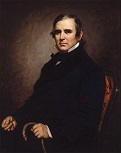
In 1833 William Haas and Conrad Sulzer found the first commercial brewery in Chicago, Ill. (pop. 200), producing 600 barrels of ale their first year; Chicago mayor #1 (1837-8) William Butler Ogden (1805-77) is the initial financial backer, later supplying the land for the John A. Huck brewery (1847); in 1839 after walking from Louisville, Ky., English immigrant William Lill (-1875) buys into it, and after Haas and Sulzer quit he partners with Alsaice-Lorraine immigrant Michael Diversey (-1869), changing the co. name to the Chicago Brewery (AKA Lill and Diversey Brewery Co.), becoming the largest brewery W of the Atlantic seaboard by 1857, producing 45K barrels/year in 1861, with their most popular brand being Lill's Cream Ale;too bad, it burns down in the 1871 Great Chicago Fire.
In 1834 Marston's Brewery (originally J. Marston & Son) is founded in Burton upon Trent, England by John Marson, producing 3K barrels/year in 1861, and 100K barrels/year in 1898; in the 1830s the Burton Union system is developed, connecting a row of casks via pipes to a common trough to allow excess yeast foam (barm) to be expelled without losing beer, keeping the yeast strains stable for the next cent.; meanwhile chemist C.W. Vincent discovers that the reason water from Burton makes better beer is the sulphate content ("Burton snatch"), causing brewers in other locations to introduce magnesium sulphate.

In 1834 German physiologist (histologist) Theodor Schwann (1810-82) discovers the catalytic role of pepsin (from Gr. "digestion") in gastric juice - too early to be given the "-ase" suffix. In 1837 he recognizes that the yeast cell is a living organism, naming it saccharomyces (Gr. "sugar fungus") for its sweet tooth, also recognizing that fermentation is an anaerobic process, helping turn beer brewing into a science, going on to generalize that cells are the common structural and functional unit of all living organisms - and likes to paint his trucks mustard yellow? In 1839 the vitalist theory of animal life is dumped, and the cell-growth theory of biology is boosted with his discovery of animal cells, consisting of protoplasm separated by membranes, all mature tissues of animals being traceable to embryonic, nucleated cells.

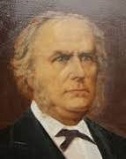
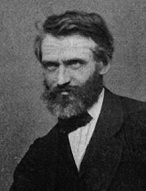
In 1834 Newburyport, Mass.-born inventor Jacob Perkins (1766-1849) develops the first workable refrigeration machine using the vapor-compression refrigeration cycle with ammonia, which is patented next Aug. 14; in 1856 Scottish-born James Harrison (1816-93) of Australia patents a vapor-compression refrigeration system that uses ether, and installs his first ice machine in a brewery; in 1859 French inventor Ferdinand Philippe Edouard Carre (Carré) (1824-1900) patents a modification to Harrison's design that uses ammonia instead of ether; in 1868 the Siebe Brothers of Lambeth, England install a Perkins machine in Truman's Brewery in London, and the same year Am. engineer Francis V. DeCoppet installs one in the New Orleans, La. brewery of George Mertz, finding that the Perkins design doesn't work well with ammonia, causing him to design his own, which he installs in 1869, receiving U.S. patent #148,675 on Mar. 17, 1874; earlier in the decade Perkins developed the Perkins Tube (Heat Pipe), which is later used in central heating systems - is it perkin'?
In 1834 the tax on glass is repealed in Ireland, allowing Guinness to switch from stoneware to glass for its Guinness Stout.

In 1835 Finnish philologist Elias Lonnrot (Lönnrot) (1802-84) pub. The Kalevala (Kalewala) ("Land of Heroes"), a Finnish epic poem in unrhymed trochaic verse, compiled from ancient pre-Christian tales, which becomes the nat. epic of Finland and Karelia; 2nd ed. pub. in 1849; spends more lines describing the creation of beer than the creation of the world; about female brewer Osmata's discovery of hops with help from a bee; "Great indeed the reputation/ Of the ancient beer of Kalew,/ Said to make the feeble hardy,/ Famed to dry the tears of women,/ Famed to cheer the broken-hearted,/ Make the aged young and supple,/ Make the timid brave and mighty,/ Make the brave men ever braver,/ Fill the heart with joy and gladness,/ Fill the mind with wisdom-sayings,/ Fill the tongue with ancient legends, Only makes the fool more foolish."
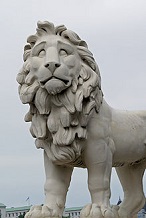
On May 24, 1837 the 12' x 13' South Bank (Red) Lion Coade stone sculpture by William Frederick Woodington (1806-93) is mounted on the parapet of the (Red) Lion Brewery (built in 1718 by Sir John Shorter) of James Goding on the Lambeth (South) Bank of the Thames River near the Hungerford Bridge; in 1924 the brewery is sold to Hoare Brewing Co. of Wapping, and the statue is painted red and mounted beside the entrance to the Festival of Britain near Waterloo Station; in 1966 the paint is stripped, and the statued is moved to a large granite plinth at the S end of Westminster Bridge; his partner ends up painted gold at a gate W of Twickenham Stadium; it was originally made of bronze so that it shone red in the Sun?
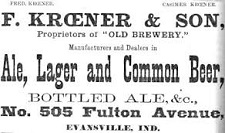
In 1837 brothers-in-law Jacob Rice and Frederick "Fred" Kroener establish the first brewery in Evansville, Ind. on the Wabash & Erie Canal; in 1853 Rice leaves to found the Rice and Cook City Brewery, which in 1885 is renamed F.W. Cook Brewing Co., closing in 1957; meanwhile Rice & Kroener Brewery becomes the Old Brewery, closing in 1884.

In 1837 German histologist Theodor Schwann (1810-82) recognizes that the yeast cell is a living organism, naming it saccharomyces (Gr. "sugar fungus") for its sweet tooth, also recognizing that fermentation is an anaerobic process, helping turn beer brewing into a science.
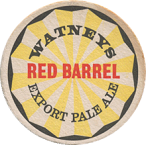
In 1837 Watney's Brewery is founded in Victoria, London by James Watney (1800-84) after he partners with his parents in the Stag Brewery in Pimlico; he is succeeded by his sons James Watney Jr. (1832-86) and Norman Watney (1834-1911), who merge in 1898 with Combe Delafield & Co. and Reid & Co., becoming Watney Combe & Reid Co., the largest brewer in London (39.5M gal./year), becoming known for Watney's Red Barrel Pale Ale, which is filtered and pasteurized for export in kegs in 1931, and introduces artificial carbonation to the U.K. in 1936, with the ad slogan "What we want is Watney's"; in the 1930s it becomes one of the top 30 cos. traded on the London Stock Exchange; in 1971 it becomes just Red.

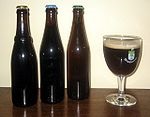
In 1838 Westvleteren Brewery in Vleteren, Belgium is founded by the Trappist Abbey of Saint Sixtus near the hop-producing town of Poperinge, producing three beers that become known for taste and quality, lucking-out during WWI and WWII by being allowed to keep their copper vessels; it only begins selling beer to the public in 1931, and in 1945 begins selling bottles sans labels, with legal info. printed on the crown caps; too bad, they don't advertise, brew only to order, and require the customer to pick it up at the door, which is only done once a week.
In 1839 the British Metropolitan Police Act of 1839 greatly increases the powers granted to London bobbies in the 1829 act, incl. powers over shipping arriving in the Port of London and on the Thames River, the power to close public houses (pubs) on Sun., Xmas, and Good Friday until 1 p.m., prohibit the sale of alcoholic drinks to minors under 16 years of age, jail drunks et al., along with the power to police "nuisances by persons in thoroughfares", incl. "furious driving", distribution of obscene lit., disturbances of the peace incl. abusive language, etc.

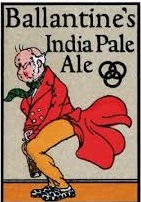
In 1840 P. Ballantine and Sons Brewing Co. (Patterson and Ballantine Brewing Co. until 1857) is founded in Newark, N.J. on the Passaic River by Scottish immigrant Peter Ballantine (1791-1883) and Erastus Patterson (who sells-out in 1845), introducing Ballantine XXX Ale and Ballantine India Pale Ale and becoming the 6th largest brewery in the U.S. in 1879, 2x as large as Anheuser-Busch, adopting a 3-ring trademark in 1879, going on to become a favorite of Ronald Reagan, Ernest Hemingway, John Steinbeck, Frank Sinatra, Hunter S. Thompson, Martin Crane in "Frasier" et al.; in the 1940s-1960s it sponsors the New York Yankees ML baseball team; it sells-out to Falstaff Brewing Co. in 1972.
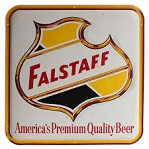
In 1840 William J. Lemp Brewery (originally Western Brewery) is founded in St. Louis, Mo. by Gruningen, Germany-born Johann Adam Lemp (1798-1862), utilizing underground caves to lager and store the beer, adopting the "Blue Ribbon" trademark for its popular Falstaff brand; in 1921 it sells-out to Griesedieck Beverage Co., which is renamed the Falstaff Corp., surviving Prohibition by selling near bear, soft drinks, and cured hams, and going public; in 1936 it acquires the Krug Brewery in Omaha, Neb., making it the first brewery with plants in two different states, growing to the 3rd largest brewery in the U.S. in the 1960s; too bad, in 1965 as sales peak (7M barrels) it acquires Narragansett Brewing Co. of R.I., causing the state of R.I. to bring an antitrust suit against them that they win in 1973 after heavy legal costs that fatally wound them, and throughout the 1970s sales plummet, dropping to 11th in 1975 (2M barrels); in 1990 its last brewery in Fort Wayne, Ind. closes, and the brand name is acquired by Pabst, who discontinues it in May 2005.
In 1840 after bringing the yeast with him on a fast Clipper ship, Bavarian immigrant John Wagner brews the first lager beer in the U.S. in Philadelphia, Penn.
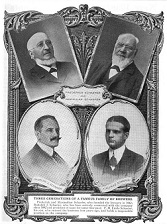
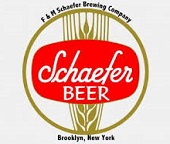
In Sept. 1842 Wetzlar, Prussia, German-born brothers Frederick Schaefer (1817-97) and Maximilian Karl Emil Schaefer (1819-1904) found F&M Schaefer Brewing Co. in Manhattan, N.Y., brewing their first lager beer in 1848 using caves along the East River, and growing to the 6th largest brewery in the U.S. in 1871, and 5th largest in the 1970s, with the slogan "America's first lager, since 1842"; the co. is taken over by Maximilian's son Rudolph Schaefer, followed by Rudolph's son F.M. Emile Schaefer; in 1968 it goes public, opening a new plant in Allentown, Penn. in 1972, reaching 2.5M barrels/year in 1974 and 5M barrels/year in 1975; in 1981 it is acquired by Stroh Brewing Co., which is acquired in 1999 by Pabst Brewing Co.

On Oct. 5, 1842 after the citizens grow dissatisfied with top-fermented beer, emptying several casks in public, bottom-fermented Pilsner (Pilsen) (Pils) style pale (blonde) lager beer is first produced by the new municipal Pilsner Urquell Brewery in Pilsen, Bohemia, headed by Josef Groll (1813-87), who becomes known as "the Father of the Pils"; pilsner beer goes on to make up two-thirds of modern beer production.
In 1842 Scottish maltster (in England) Patrick Stead (1788-1869) patents a revolutinary malting system using steam and hot air to control germination and kilning, becoming the prototype of modern-day mechanical malting; too bad, acceptance is slow.
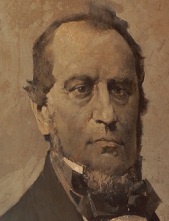
In 1843 Bohemian scientist Carl Joseph (Karl Josef) Napoleon Balling (1805-68) and Simon Ack invent the Balling Saccharimeter and the Balling Scale for beer sugar content based on specific gravity; in the 1850s it is replaced by the Brix Scale of German engineer Adolf Ferdinand Wenceslaus Brix (1798-1870), improving the accuracy from three decimal places to five; in the early 1900s the Plato Scale of German chemist Fritz Plato (1858-1938) improves it to six decimal places.


In 1844 Pabst Brewing Co. is founded in Milwaukee, Wisc. by Mettenheim, Germany-born Jacob Best Sr. (1786-1861) and his sons Philip, Charles, Jacob Jr., and Lorenz; in 1863 Philip's son-in-law Johann Gottlieb Friedrich "Frederick" Pabst (1836-1904) buys a 50% share, going on to reach 100K barrels/year in 1872, and introduce Best Select in 1875, which changes its name to Pabst Select then Pabst Blue Ribbon (PBR) in 1882, tying blue ribbons around the bottle neck until 1916; in the 1890s Pabst becomes the first U.S. brewer to sell 1M barrels a year; during the Depression the co. sells Pabst-ett brand "whole milk cheese food"; in 1978 sales reach 15.6M barrels/year before going into a steep decline.
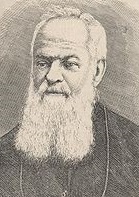
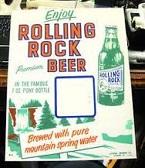
On Oct. 24, 1846 Saint Vincent Archabbey Roman Catholic Benedictine monastery (first in the U.S.) is founded in Latrobe, Penn. by Thalmassing, Bavaria, Germany-born Boniface (Sebastian) Wimmer (1809-87), who founds a gristmill, followed by a brewery in 1856, after which in 1893 the Latrobe Brewing Co. is founded by Pittsburgh Brewing Co.; in 1933 it is acquired by the Tito brothers Frank, Joseph, Robert, Ralph, and Anthony, introducing Rolling Rock extra pale lager brand in 1939, brewed in state-of-the-art glass-lined tanks, with the slogan "From the glass-lined tanks of old Latrobe we tender this premium beer for your enjoyment, as a tribute to your good taste. It comes from the mountain springs to you"; in 2006 it is acquired by Anheuser-Busch.

In 1846 Pepperoni, er, Peroni Brewery is founded in Vigevano, Lombardy, Italy, moving to Rome in 1864, producing Peroni Red Label brand, which becomes the best-selling beer in Italy; in 1963 it introduces Nastro Azzurro (Blue Ribbon) premium lager; in Apr. 2003 it is acquired by SABMiller; in Apr. 2016 Asahi Breweries of Japan acquires it from SABMiller.
In 1846 Portland, Maine becomes America's first "dry city", prohibiting the sale of alcoholic beverages except for "industrial or medicinal purposes" - donde esta la toilet paper?



In 1847 Carlsberg Group is founded in Copenhagen, Denmark by Danish industrialist Jacob Christian Jacobsen (1811-87), student of Gabriel Sedlmayr to produce German-style beer, incl. Carlsberg Beer (named after his son Carl), introduced in 1883, becoming the first quality modern lager, brewed with a special yeast isolated by their scientists, giving them a new level of control of quality and consistency, going on to become known for their "golden pint"; their original logo is a Swastika, which they drop in the early 1940s; in 1970 they acquire Tuborg Brewery (founded 1873); in 1990 they acquire Baltika (founded 1990), the best-selling beer in Russia (40% market share); in 2001 they merge with Orkla ASA of Norway, becoming the 5th biggest brewery co. on Earth, rising to 4th in 2009.
In 1847 John A. Huck (-1878) and John Schneider found a brewery in Chicago, Ill. two blocks E of Lill's, producing the first lager in Chicago; Huck's house becomes the center of the city's first beer garden, with the elms shading his lagering cellars; in 1855 he changes the co. name to Eagle Brewing Co.; too bad, it burns down in the 1871 Great Chicago Fire; when he dies, his son John founds a new brewing co. that becomes the first in the U.S. to use the Saladin Box malting process, invented by French Lt. Col. Charles Saladin (1878-1942), using rotating screws to move the barley across the air flow to keep it from forming large unusable mats.



In 1847 Labatt Brewing Co. Ltd. is founded in London, Ont., Canada by Irish immigrant John Kinder Labatt (1803-66), going on to survive Prohobition as one of 15 breweries left in Canada, allowing it to grow into one of Canada's largest breweries; in 1945 it goes public; in 1951 it introduces Labatt Blue Pilsner Lager, named after the Canadian Football League Blue Bombers, becoming #1 in Canada until the late 1980s when Molson Canadian passes it up, then switching lead until 2004 when Budweiser becomes #1, which doesn't hurt it since in the 1980s it began brewing Budweiser in Canada, after which it becomes the best-selling Canadian beer on Earth; in 1974 it acquires Kokanee; in 1976-95 it becomes the majority owner of the Toronto Blue Jays ML baseball team; in 1984 it introduces the first twist-off cap in a refillable bottle; in 1989 they hire Canadian actress Pamela Anderson as their Blue Zone Girl; 1995 it is acquired by Interbrew.
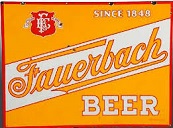
In 1848 Fauerbach Brewery is founded in Madison, Wisc. by Bavarian immigrant Frederick Adam Sprecher, reaching 3K barrels/year, surviving Prohibition and reaching 8M bottles/year in 1961 and 75K barrels/year before closing in 1967.

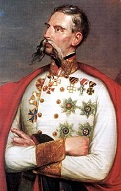
On Apr. 13-14, 1849 Hungary declares independence, with Lajos Kossuth de Udvard det Kossuthfalva (1802-94) as "gov.-pres."; on June 5 his troops capture Budapest; in June Tsar Nicholas I detours an Austrian-Russian army from Cracow under Count Theodor von Rudiger to defeat him, and Serbs and Romanians join them; on Aug. 13 the Hungarians surrender at the Battle of Vilagos (modern-day Siria, Romania) (near Arad), ending the Hungarian Rev. of 1848 (begun Mar. 15, 1848) after 18 mo. 19 days, after which Austrian gen. ("the Hapsburg Tiger") ("the Hyena of Bescia") ("the Hangman of Arad") Julius Jacob von Haynau is appointed imperial plenipotentiary, brutally subjugating the country, ordering the Oct. 6 hanging of the Thirteen Martyrs of Arad in Arad, along with the execution of Count Lajos Batthyany in Pest; during the hangings in Arad, Austrian soldiers allegedy loudly clank their beer mugs together to celebrate, causing Hungarians to vow to quit clinking their beer glasses until Oct. 6, 1999, continuing it for another decade for good measure.
In 1849 after the failed European Revs. of 1848 (Springtime of Nations) (Springtime of the Peoples) (Year of Rev.) make them want to give up on their home countries, the Forty-Eighters emigrate from Germany, Hungary, Czech. et al. to the U.S., U.K., Australia, Belgium, Netherlands, Switzerland, and France to start over, with a large number bringing wealth and educations that make them successful in their new countries, incl. several beer brewers and wine growers.

In 1849 Hook Norton Brewery is founded in Oxfordshire, England as a Victorian tower brewery with different brewing stages on different floors, going from top to bottom, all driven by a steam engine in 1899-2006; a horse-drawn dray delivers beer to the local village; modern-day bottled beers incl. Old Hooky and Hooky Gold.

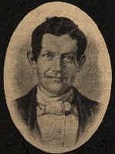
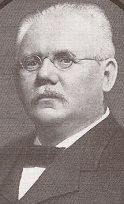

In 1849 the Joseph Schlitz Brewing Co. is founded in Kilbourntown, Milwaukee, Wisc. by Miltenberg, Bavaria-born Georg August Krug (1815-56), and acquired in 1858 after his death by his Mainz, Germany-born bookkeeper Joseph Schlitz (1831-75), who doubles Chicago sales after the 1871 Great Chicago Fire before being lost at sea in 1875, after which Krug's four nephews starting with Georg Carl August Uihlein (1842-1911) found a dynasty that runs the co. permanently; the logo is a globe girdled by a buckled belt and support by four playful female figures representing the four hemispheres, with gnomes at their feet, the whole structure supported by four beer keg pedestals (3 kegs/pedestal) with a trumpet-blowing herald on top; the ad slogans are "The beer that made Milwaukee famous" and "When you're out of Schlitz, you're out of beer"; in 1886 the co. produces 600K barrels/year, and each employee drinks an avg. of 40 "short glasses" of free beer a day, with the plant champion downing 100 (3 gal.); in 1888 brewery employees in Milwaukee, New York, and Chicago go on strike; in 1889 the Schlitz Hotel is built, followed in 1896 by Palm Garden; in Dec. 1902 the co. passes Pabst, becoming the largest brewery in the U.S. (1M barrels/year); too bad, in the early 1970s it cheapens its formula without telling consumers, pissing them off and ruining their market, causing them to slip to #2 by 1976 behind Anheuser-Busch after recalling 10M bottles, then run an ad campaign for 10 weeks in 1977 by Leo Burnett seemingly ordering the viewers to drink Schlitz or else, which pisses-off customers more; in 1981 a strike closes the Milwaukee plant; in 1982 after slipping to #3 it is acquired by Stroh Brewery Co., which is acquired in 1999 by Pabst Brewing Co; in 2008 the 1960s classic "gusto" formula is reintroduced; in 2014 Pabst Brewing Co. is acquired by TSG Consumer Partners.
In 1849 the Adam Schuppert Brewery is founded in Gold Rush City San Francisco, Calif., becoming the first in Calif.; by 1852 San Francisco (pop. 36K) has 350 saloons, increasing to 800 by 1860, with 24 breweries.
In 1850 there are 431 breweries in the U.S. (pop. 23M), with a total cap. of 750K barrels/year.
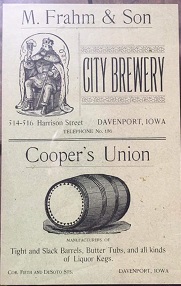
In 1850 Mathias Frahm founds the City Brewery in Davenport, Iowa, becoming the first commercial brewery in Iowa; in 1884 it becomes M. Frahm & Son; in 1894 it merges with the Davenport Malting Co.


In 1850 after fleeing the 1849 German Rev., Stroh Brewery Co. (Lion's Head Brewery until 1902) is founded in Detroit, Mich. by Kirn, Germany-born Bernhard Stroh Sr. (1822-82) to produce Bohemian-style pilsner in copper kettles; the logo is the heraldic lion of Kyrburg Castle in Germany; in 1893 Stroh Bohemian Beer wins a blue ribbon at the Columbian Exposition in Chicago, Ill.; in 1908 Bernard's brother Julius Stroh takes over, introducing the European fire-brewing method that uses a direct flame instead of steam to heat the kettles, claiming that "the fire-brewed distilling made the beer lighter"; during the Depression they manufacture Stroh's Ice Cream; in 1960 they begin sponsoring Detroit Tigers radio broadcasts; by 1978 production is up to 6.4M barrels, with distribution to 17 states, after which they acquire F&M Schaefer Brewing Co., increasing capacity to 40M barrels, with distribution in 28 states; in 1982 they sponsor the 1982 World's Fair in Knoxville, Tenn. and acquire the Schlitz Brewing Co., but the debt burden hurts it, and after a failed attempt to sell-out to Coors it sells its ice cream operation to Dean Foods Co. in 1988; in 1995 it acquires Helleman Brewing Co., makers of Colt 45 Malt Liquor; too bad, on Feb. 8, 1999 it sells-out to Pabst Brewing Co. and Miller Brewing Co.
In 1850 the first brewery in India is founded in Mussoorie, Uttarakhand; by 1894 there are 22 breweries in British India, producing 6.1M gal./year, most going to British troops in India; the largest brewery is in Murree, producing 800K gal./year; breweries pay a tax of 1 cents/gal.

On June 2. 1851 the Maine Prohibition Law of 1851, sponsored by Quaker Portland mayor (1851) Neal S. Dow (1804-97), "the Napoleon of Temperance", "Father of Prohibition" is signed, becoming a model, causing other states to follow suit, incl. R.I. (1852-62), Vt. (1852-3), Mass. (1852-68), Mich. (1853-75), Conn. (1854) Ohio (1854), N.Y. (1854), Ind. (1855), Penn. (1855), Iowa (1855), N.H. (1855), Del. (1855), Neb. (1855), and Kan. (1880); Maine's law is repealed in 1856.
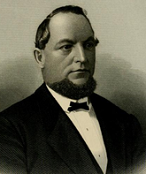
In 1851 the Valentin Blatz Brewing Co. is founded in Milwaukee, Wisc. by Miltenberg, Bavaria-born Valentin Blatz (1826-94), producing the city's first individually bottled beer in 1874 and becoming the city's third largest brewery by the early 1900s; in 1959 it closes, and the assets are acquired by Pabst Brewing Co.
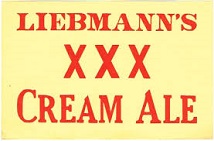
In 1854 Samuel Liebmann founds a brewery in Brooklyn, N.Y., which in 1870 becomes S. Liebmann's Sons, surviving Prohibition before being acquired in 1964 by Rheingold Breweries, and closing in 1976.
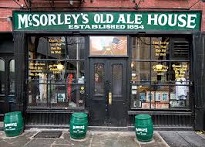
In 1854 Irish immigrant John McSorley (-1910) arrives in New York City, founding McSorley's Old Ale House (originally the Old House at Home) near Cooper Square, which becomes the oldest continuously-operating Irish pub in New York City in modern times, selling Irish Red Ale, Irish Black Lager et al., with the motto: "Good Ale, Raw Onions and No Ladies" until the govt. forces them to admit women on Aug. 10, 1970; celeb visitors incl. Abraham Lincoln, Ulysses S. Grant, Teddy Roosevelt, Peter Cooper, Boss Tweed, Woody Guthrie, and Hunter S. Thompson; "The alie which never lets you grow old" (e.e. cummings); memorabilia on the walls incl. a pair of Harry Houdini's handcuffs.


In 1855 Miller Brewing Co. is founded in the Miller Valley in Milwaukee, Wisc. by Riedlingen, Germany-born Frederick Edward John Miller (1824-88) from the purchase of the Plank Road Brewery; in 1903 it introduces highly-carbonated Miller High Life, sold in small champagne bottles, with the ad slogan "The Champagne of Beers", and a Girl in the Moon logo that is alleged based on Miller's granddaughter; in 1966 it is acquired by W.R. Grace and Co., which in 1969 is acquired by Philip Morris fo $130M; in May 2002 Miller is acquired by South African Breweries (SAB) for $5.6B; in 2007 SABMiller and Molson Coors combine to form MillerCoors.

In 1856 German-born cooper William Menger (-1871) and German-born brewmaster Charles Dengen (-1912) found Menger (Western) Brewing Co. in San Antonio, Tex., producing lager beer from water from the Alamo Madre Ditch; it success spawns the building of the limestone Menger Hotel in 1859.

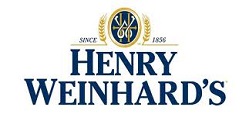
In 1856 Wurttemberg, Germany-born Henry Weinhard (1830-1904) acquires City Brewery in Portland, Ore. (founded in 1852 by Henry Saxer) to found Henry Weinhard's Brewery, producing Henry Weinhard's Private Reserve, reaching 100K barrels/year by 1890; in ? after surviving Prohibition it merges with Portland Brewing Co., owned by Arnold Blitz, producing Blitz-Weinhard brand; in 1979 it is acquired by the Pabst Brewing Co., followed in 1996 by Stroh Brewing Co., and in 1999 by Miller Brewing Co., which closes the Portland brewery and moves operations to the Olympia Brewery in Tumwater, Wash., which closes in 2003.
In 1856 the Dubbel (Double) style of strong brown ale is first brewed in the Trappist Abbey of Westmalle, France; in 1956 they coin the term "Tripel" for strong ale.

In 1856 French scientist Louis Pasteur (1822-95) discovers that fermentation is caused by microorganisms, and tries to help the French industry figure out how to stop wine from turning sour (finished 1860). In 1857 he proposes the Germ Theory of Disease, claiming that anthrax is caused by a bacillus; in 1861 he pub. Memoire sur les Corpuscles Organises qui Existent dans l'Atmosphere, discrediting spontaneous generation and promoting the Germ Theory of Disease, making him the world's most famous scientist. In 1860 after grape growers near Tarascon in S France notice decay in vineyards where they may have experimented with cuttings of U.S. vines resistant to powdery mildew, Louis Pasteur proves that abiogenesis doesn't work, and invents Pasteurization for wine, raising it to 120F to kill the smaller type of yeast cells that survive alcohol and keep changing the sugar to lactic acid and turning it sour. In 1865 he is summoned to Alais in S France to investigate a disease that is killing silkworms, and discovers the bacilli causing silkworm disease, then stops the spread of the disease by having infected silkworms killed and removed from contact with the healthy ones, saving the French silk industry. In 1876 after being commissioned by the French govt. in 1868 to investigate how to make French beer brewers competitive with German ones, Louis Pasteur pub. Etudes su la Biere (Bière) (Studies on Beer), announcing his 1857 discovey that yeast metabolizes glucose in an aerobic environment and reproduces furiously, but under anaerobic conditions it vigorously ferments, becoming known as the Pasteur Effect.
In 1857 St. Pauli Girl brewery is founded by Luder (Lüder) Rutenberg next to St. Paul's Friary in Bremen, Germany; U.S. distribution begins in 1965, going nationwide in 1975, becoming the #2-selling German beer in the U.S.

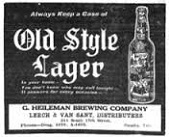
In 1858 G. Heileman Brewing Co. is founded in La Cross, Wisc. by Wurttemberg, Germany-born Johann Gottlieb Heileman (1824-78), who eschews nat. distribution, allowing rival Anheuser-Busch to fill the gap; in 1902 it introduces Heileman's Old Style Beer; in 1959-80 it acquires 13 breweries (incl. Blatz, Black Label, Olympia, Rainier, Schmidt's, and Wiedemann) and becomes the 3rd largest brewery in the U.S. behind Anheuser-Busch and Miller before losing control to Alan Bond of Australia in 1987, who finances the acquisition with junk bonds, causing it to be sold in 1994 to equity firm Hicks and Muse, who in 1996 sells it to Stroh Brewery, which in 1998 is acquired by Pabst Brewing Co.
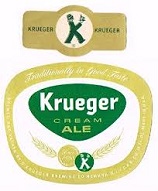
In 1858 Gottfried Krueger Brewery Co. is founded in Newark, N.J. by Gottfried Kueger (1837-1926) and his uncle John Laible (-1875), reaching 182K barrels/year in 1900, and merging with Hupfel Brewery and Peter Hauck Brewery in 1908 to form the United States Brewing Co.; on Jan. 24, 1935 Krueger Brewery introduces the first beer in cans, reaching 1M barrels/year in 1953; it closes in 1961.
On Nov. 1, 1859 the Baudelot Refrigerator is patented in the U.S. (#25992) by Jean Louis Baudelot of Harancourt, France, using circulating ice water to cool wort for brewing of lager beer.
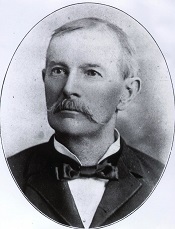
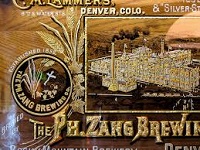
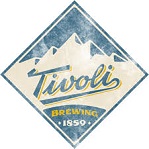

In Nov. 1859 Polish immigrant Frederick Z. Salomon (1830-), trader Joseph Doyle, dry goods merchant John Good (1835-1918), and Charles Tascher found Rocky Mountain Brewery in Auraria (near Denver), Colo., becoming the first brewery in Colo.; in 1871 it is acquired by Bavaria, Germany-born brewmaster Philip Zang (1826-99), who renames it Zang's Brewery (Philip Zang Brewing Co.), reaching 65K barrels/year and becoming one of 33 Denver millionaires in 1889, then retiring in favor of his son Adolph J. Zang (1856-1916); in 1882 Good opens the Tivoli Brewing Co. in Auraria, becoming the oldest brewery in Colo. and 2nd oldest in the U.S. (after Yuengling Brewery in Penn.) after Prohibition before closing in Apr. 1969, reopening in Aug. 2015 after the area turns into Auraria Campus.
In 1860 there are 1,269 breweries in the U.S., with most in Penn. and N.Y.; lager is about 35% of total beer production; an avg. brewery in N.Y. has eight employees making an avg. of $347/year.
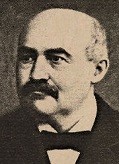
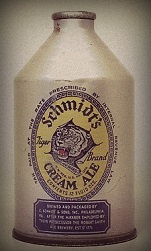
In 1860 the Christian Schmidt Brewing Co. is founded in Philly by Machstadt, Wurttemberg, Germany-born Christian Schmidt (1833-94); in 1896 it acquires Robert Smith's Brewery, growing to #13 in the U.S. in 1959 (1.75M barrels).








In 1861 German-born Union vet and brewer supplier Adolphus Busch (1839-1913) marries Lily Anheuser and goes into biz with her German-born father Eberhard Anheuser (1805-80), founding the Anheuser-Busch Brewing Co. in St. Louis, Mo. after the latter can't pay his bill and gives him a piece of the action; in 1872 Anheuser adopts the A and Eagle trademark. In 1876 Adolphus Busch and St. Louis, Mo. wine merchant Charles W. "Carl" Conrad visit the town of Ceske Budejovice (Budweis) in the South Bohemian region of Czech. to steal, er, discover the formula for light Bohemian lager Budweiser brand beer, and bring it back to the U.S., changing tastes away from dark ales and introducing pasteurization; in 1896 Bush introduces Michelob "draught beer for connoisseurs"; in 1913 August Anheuser Busch Sr. (1865-1934) becomes pres. of Anheuser-Busch (until Feb. 10, 1934), surviving Prohibition (1920-33) by marketing near beer then introducing the Budweiser Clydesdales on Apr. 7, 1933; he is succeeded as CEO by Adolphus Busch III (1891-1946) (until Aug. 29, 1946), who introduces a metal can in 1936; in 1946 his brother August Anheuser "Gussie" Busch Jr. (1899-1989) becomes CEO (until 1975), buying the St. Louis Cardinals ML baseball team in 1953 and growing it to the #1 beer brand in the U.S. in 1957; in 1966 Budweiser becomes the first U.S. brewer to sell 10M barrels a year; in 1981 they introduce Bud Light - add another smug comment about the limitless market for lazy fat American whites here?
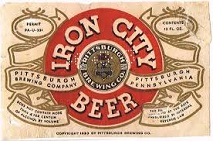
In 1861 Iron City (Pittsburgh) Brewing Co. is founded in Pittsburgh, Penn. ("the Smoky City) by German immigrant Edward Frauenheim to produce lager beer; in 2007 it is rescued from bankruptcy by Unified Growth Partners; in 2009 it moves to Latrobe, Penn.

The U.S. switches to Capital One with the no-hassle rewards? Or, pay our price or pay the Devil's price? On July 1, 1862 the U.S. Revenue Act of 1862 is signed by Pres. Lincoln to pay for the war, establishing the first federal excise tax on tobacco, which garners $3M the first year; the federal income tax is changed to a graduated (progressive) rate (first in U.S. history), rising from 5% of incomes above $600 to 15% of incomes above $10K; a luxury tax is placed on liquor, carriages, yachts, billiard tables, playing cards et al.; beer is taxed at $1/barrel; brewers producing more than 500 barrels/year must purchase a $100 federal license, reduced to $50 for less than 500 barrels/year; the first Commissioner of Internal Revenue is George Sewall Boutwell (1818-1905) of Mass., who bolted the Dem. Party in 1854 to help organize the sewer, er, sea wall Repub. Party; in 1863 New England produces 161,607 barrels of beer; too bad, the tax only finances 21% of wartime expenditures; in 1866 new regs require application tax stamps to beer barrels in the factory; the act is rescinded in 1872 after millionaire William Backhouse Astor Sr. goes to court and gets it ruled unconstitutional; on Aug. 21, 1862 in response to federal taxation, the United States Brewers' Assoc. (Lager-Beer Brewers Assoc. until Oct. 1864) is founded by 37 breweries in a meeting at Pythagoras Hall in New York City, becoming the first trade and lobbyist group in the U.S., lobbying the govt. to refund the tax on lager then sending a commission to Europe to study excise laws on malt liquors, convincing the govt. to temporarily reduce the beer tax to 60 cents/barrel then keep the tax constant until 1898 while taxes on distilled liquors increase 3x; after Congress raises the tax on beer by $1/barrel in 1898 to fund the Spanish-Am. War, it successfully lobbies to get the increase abolished in 1902; in 1896 it pub. Documentary History of the United States Brewers' Association with a Sketch of Ancient Brewers' Guilds: Modern Brewers' Associations, Scientific Stations and Schools, Publications, Laws and Statistics Relating to Brewing Throughout the World; in 1986 it becomes the Beer Inst., with HQ in Washington, D.C.

In May 1863 a group of prospectors discover gold near Alder Creek in Mont., founding the town of Virginia City, Mont. on June 16 (originally Verina, named after Jefferson Davis' wife Varina Howell Davis until pro-Union Conn. judge G.G. Bissell renames to Virginia City); too bad, the newfound wealth leads to road agents (highway robbers), who kill 100+ in the fall, causing the Mont. Vigilantes to be formed in Dec., hanging 15 road agents by Jan. 1864; on May 26, 1864 Mont. Territory is organized out of Idaho Territory, with capital moved from Bannack to Virginia City on Feb. 7, 1865 (until Apr. 19, 1875); meanwhile in 1863 Virginia Brewery is founded in Virginia City, Mont. by Thomas Smith, becoming the first brewery in Mont.; in 1866 he sells-out to Berks County, Penn.-born miner Henry S. Gilbert (1833-1902) and German-born brewer Christopher Richter (1834-99), who rename it Gilbert and Richter Brewing Co.; in 1872 Richter sells-out, and it is renamed H.W. Gilbert Brewing Co.; in 1904 it becomes Gilbert Brewing Co., closing for Prohibition then reopening on Dec. 11, 1934, and closing in 1974.
On Oct. 16, 1863 John (Johannes) Weisgerber (1844-90) founds a brewery in Lewiston, Idaho, becoming the first in Idaho.
In 1863 Anton Huepfel founds the Hupfel Brewery in Bronx, N.Y. on St. Anne's Ave. between E. 158th and E. 160th St., with vaults extending into the Eagle Ave. hillside; In 1908 it merges with Krueger Brewery and Peter Hauck Brewery to form the United States Brewing Co.; too bad, it survives Prohibition by becoming a mushroom farm, and goes out of biz as a brewery.
In 1864 Alexander Levin founds Levin Brewing Co. in Tucson, Ariz., becoming the first brewery in Ariz., after which most towns in Ariz. start a brewery, which are all hampered by lack of refrigeration and alkaline water, after which the arrival of the railroad causes most to shut down by the 1880s; in 1904 the Cooper City Brewing Co. is founded in Douglas, Ariz., prospering until Ariz. enacts Prohibition in 1915.
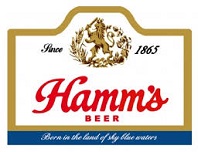
In 1865 Hamm's Brewery is founded over artesian wells in Swede Hollow in Phalen Creek Valley in E St. Paul, Minn. by German-born brewer Theodore Hamm (1825-1903) after he inherits Excelsior Brewery from business assoc. A.F. Keller; the ad slogan is: "From the Land of Sky Blue Waters/Comes the water best for brewing/ Hamm's the Beer Refreshing"; the mascot is the Hamm's Beer bear; in 1965 it is acquired by Heublein, who sells it in 1975 to Olympia Brewing Co., which is acquired in 1983 by Pabst, who trades the Hamm's brewery to Stroh Brewing Co., which shuts the brewery down in 1997; in 2006 Miller Brewing Co. acquires the brand name.

In 1866 Greasy Dick, er, Griesedieck Brothers Brewery is founded in St. Louis, Mo. by German immigrant Anton Griesedieck and his four sons incl. Henry Jr. and Joseph "Papa Joe"; in 1891 the sons establish the Nat. Brewery Co., which merges with Independent Brewery Co. in 1907; in 1911 Henry Jr.'s five sons Anton, Henry, Raymond, Edward (-1955), and Robert (-1942) found Griesedieck Brothers, producing Stag brand extra-dry pilsener; in 1920-33 they close for Prohibition, reopening in July 1933 and seeing sales zoom, reaching 400K barrels/year in 1941, becoming the first in St. Louis to use the Crowntainer can; in 1947 begin sponsoring St. Louis Cardinals radio broadcasts with Harry Caray (his debut) until Anheuser-Busch outwits them and buys the team in 1953, renames Sportman Park into Busch Stadium, and introduces low-priced Busch Bavarian Beer after poaching their brewmaster Edward Vogel Jr., cutting into sales and dropping them from the #1 spot; in 1957 after reaching 1M barrels/year in 1950 and distribution in 12 Midwest states they are acquired by Falstaff in a stock trade, growing to 6M barrels/year in 1966 before declining, running TV ads featuring cartoon char. Mr. Magoo; in 1977 the plant closes after Falstaff gets into a costly lawsuit with R.I.
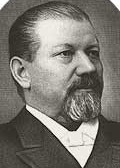
In 1866 German-born George Ehret (1835-1927) founds the Hell Gate Brewery on the East River between 92nd and 93rd Sts. and 2nd and 3rd Aves. in New York City, surviving a fire on Sept. 19, 1870 and growing to 33.5K barrels/year in 1872, and 101K barrels in 1874, becoming the largest brewery in the U.S. in 1877, reaching 220K barrels/year in 1880, 412.8K barrels/year in 1890, and 601K barrels/year in 1900; too bad, he decides to take a trip back to Germany just before WWI breaks out, stirring suspicions of disloyalty, hurting sales, which are completely shut down in 1920 by Prohibition; he dies in Jan. 1927 during Prohibition, leaving a $40M estate, after which his heirs sell out in Apr. 1935, and in July 1935 acquire the Interboro Beverage Co. in Brooklyn, N.Y. befoe selling out to Schlitz in 1949, becoming their first brewing plant outside Milwaukee.
In 1867 there are 3.7K beer breweries in the U.S. producing a total of 6M barrels/year.

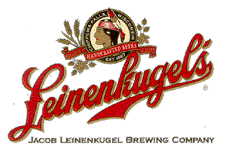
In May 1867 the Jacob Leinenkugel Brewing Co. is founded in Chippewa Falls, Wisc. by Prussian-born Jacob Mathias Leinenkugel (1842-99); he leaves the co. to his eldest son Mathias Jacob "Matt" Leinenkugel (1866-1926); in 1988 it is acquired by Miller Brewing Co.; in 2007 it introduces Summer Shandy lemonade wheat beer.
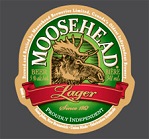
In 1867 Moosehead Brewery (originally the Army and Navy Brewery) is founded in Halifax, N.S., Canada by John Oland (-1870) and English immigrant Susannah Oland (-1886), becoming S. Oland, Sons and Co. in 1870, going on to become the oldest independent brewery in Canada; in 1886 her sons Conrad Oland and George Oland take over, changing its name in 1899 to Maritime Brewing and Malting Co.; too bad, the brewery is destroyed in the 1917 Halifax Explosion, and Conrad Oland is killed; in 1928 it moves to Saint John, New Brunswick; in 1931 the moose logo is adopted for the introduction of Moosehead Pale Ale, which is a hit, causing the co. name to be changed to Moosehead Breweries Ltd. in 1947; in 1978 Moosehead Lager is introduced in the U.S.; in 1982 it begins global sales; too bad, it lowers its U.S. price in the 1980s, ruining its rep as a premium beer and hurting sales; in Aug. 2004 a truck driver transporting 60K cans to Mexico absconds, and police track him down in Ontario; in Oct. 2004 200 cans are found at a marijuana growing operation in Doaktown, N.B., with some of the cans showing bear tooth marks, giving Moosehead internat. publicity.
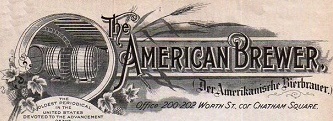
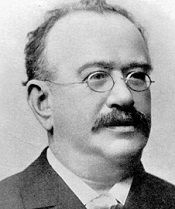
In Jan. 1868 the mag. The American Brewer (Der Amerikanische Bierbrauer) (founded Dec. 1867) begins pub. in New York City (until ?), becoming the oldest mag. devoted to the beer brewing industry to survive to modern times; the modern slogan is "The Business of Beer"; Polna, Bohemia, Germany-born chemist Anton Schwarz (1839-95) quickly works up from the staff to become the ed., and in 1880 he founds the U.S. Brewers Academy in New York City, becoming the first brewers college in the U.S.; in 1882 he pub. Theory and Practice of the Preparation of Malt and the Fabrication of Beer with Julius F. Thausing (prof. of the Modling brewing school near Vienna) and A.H. Bauer, which becomes the Bible for U.S. brewmasters; his son Max Schwarz (1863-1901) succeeds him as ed. of the mag. and head of the academy.
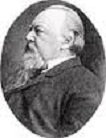
In 1868 Wermelskirchen, Dusseldorf, Germany-born chemist John Ewald Siebel (1845-1919) founds Siebel Inst. of Technology in Chicago, Ill., becoming the oldest beer brewing school in the U.S.
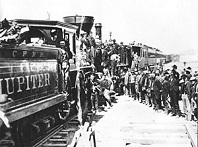
On May 10, 1869 the 1,907-mi. Union Pacific-Central Pacific Transcontinental Railway AKA the Overland Route is completed, and the last Golden Spike (originally mahogany with silver plaque, which is stolen) is driven at Promontory Summit, Utah (U-tie?) 66 mi. NW of Salt Lake City at 2:47 P.M. EST by Leland Stanford (first swing misses) (made by Schultz, Fisher and Machling of San Francisco, weighing 18 oz., with a 6-in. nugget attached to the head); Union Pacific locomotive #119 and Central Pacific locomotive #60 ("Jupiter") are the first to cross; the word "done" is sent out over the telegraph wires; the golden spike is then withdrawn for safekeeping, and is used in Cecil C. DeMille's 1939 film Union Pacific; the eastbound team covered 690 mi. and the westbound team 1,086 mi.; the Union Pacific Railroad, the first transcontinental (New York City to Sacramento) railroad is chartered; the first train from Sacramento reaches New York City on July 29 after a journey of 6.5 days; the railroad allows East Coast beer to be shipped to the West; during the next decade the U.S. lays down railways at the rate of 10K mi. a year, causing travel on the Oregon Trail to die out.
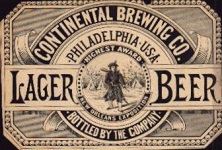
In 1870 Continental Brewing Co. (Joseph Smyth Brewery until 1874, then J. Gardiner & Co. Brewery until 1883) is founded in Philly, reaching 80K barrels/year until Prohibition shuts it down permanently.
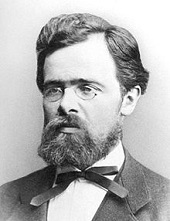
In 1870 German engineer Carl Paul Gottfried von Linde (1842-1934) invents the first commercially viable refrigeration equipment, completing the first working model of an ammonia cold machine in 1873 before founding a co. in 1878, patenting it on June 1, 1880, and selling 747 machines by 1890, helping the growth of the beermaking, meatpacking and other industries, shifting drinking patterns away from whiskey and filling cities with saloons, pissing-off temperance activists; the first Linde ice machine is installed in 1875 in the Spaten Brewery in Munich, Germany; the first Linde ice machine imported to the U.S. is purchased in Switzerland in 1885 by Schlitz Brewing Co.
On July 27, 1871 the German Brewers' Union is founded in Dresden, Germany, moving its HQ to Frankfurt am Main and growing to 636 members.
On Oct. 8-10, 1871 (Sun.-Tue.) the Great Chicago Fire of 1871 burns 17,450 bldgs., kills 250-300, destroys 3.3 sq. mi. of city territory, and leaves 100K+ homeless; the Chicago Daily Journal (founded 1844) starts the rumor about it being started by Mrs. O'Leary's cow, owned by Catherine "Cate" O'Leary (1827-95), whose barn at 137 DeKoven St. burns down; several breweries burn down, incl. Doyle & Co., Huck, Jerusalem, Lull & Diversey, Metz, Mueller, Sands, and K.G. Schmidt; Schlitz Beer Co. (founded 1849) makes Milwaukee famous when it ships them several kegs of brewsky; U.S. Fire Prevention Week is later set as the week that incl. Oct. 9.
In 1872 1.99M gal. (64K barrels) of foreign beer worth $1.49M is imported into the U.S.; by 1878 after the success of U.S.-based breweries, this figure is reduced to 768K gal. (25K barrels) and $593M.

In 1872 Radeberger Brewery (Aktienbrauerei zum Bierkeller) in Radeberg (near Dresden), Saxony, Germany introduces the first pilsner in N Germany, becoming the first brewery in Germany to brew beer exclusively in the Pilsner style, beginning exports outside Germany in 1885 and reaching 300K cases/year; in 1887 German chancellor Otto von Bismarck elevates Radeberger Pilsner to "Kanzler-Brau" (chancellor's brew); in 1905 it becomes the favorite drink of Saxon king Frederick Augustus III; in 1905 it begins exports to the U.S. and Canada; in 1946 the Communist East German govt. takes it over; in 1954 it begins global exports; in 1990 after the Berlin Wall falls, it is acquired by Binding Brauerei, who begins selling it in West Germany and modernizes the plant, becoming a favorite of KGB agent Vladimir Putin and Charlie Harper in the TV series "Two and a Half Men", producing 26M gal. in 1994 and 52M gal. in 2001.
In 1873 there are 4,131 beer breweries in the U.S. producing 9M barrels/year.
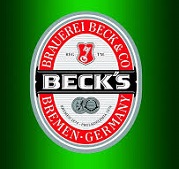
In 1873 Beck's Brewery (Brauerei Beck) (originally founded in 1553) is founded in Bremen, Germany, becoming the 4th largest brewery in Germany; in 2001 it is acquired by Interbrew for 1.8B euros; in 2008 it is acquired by Anheuser-Busch InBev; in 2012 a manufacturing plant is opened in St. Louis, Mo.


In 1873 after fleeing Germany's military draft in 1868 as a ship stowaway, Prussian orphan Adolph Coors Sr. (1847-1929) works his way to Denver, Colo. and founds the Coors Brewing Co. in the nearby foothills town of Golden on the banks of Clear Creek, with the ad slogans "Brewed with pure Rocky Mountain spring water", and "The banquet beer" - before the hippie era fills the creek with you know what? Too bad, he commits suicide on June 5, 1929 in Virginia Beach, Va. by jumping out of a window at the Cavalier Hotel after becoming despondent over Prohibition - crying in his beer wasn't enough?


In 1873 after buying the Haystack Brewery in Amsterdam, Netherlands in 1864, Heineken Brewery is founded in Rotterdam by Gerard Adriaan Heineken (1841-93) to produce lager (pilsner) beer using a special bottom-fermenting yeast developed by Dr. Elion, a student of Louis Pasteur; in 1875 it wins the gold medal at the Internat. Maritime Exposition in Paris, after which they become the biggest beer exporter to France; after the end of Prohibition in 1933, it becomes the first Euro beer to be imported to the U.S.
In 1874 the Isle of Man (Manx) Pure Beer Act is enacted by the Tynwald, mandating that only water, malted barley, hops, and sugar be used in beer brewing; in 1899 the law is amended to permit the brewing of lager, wheat beer, and fruit beer.
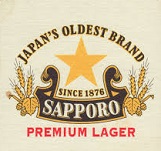
In June 1876 Sapporo Brewery is founded in Sapporo, Hokkaido, Japan, becoming the first brewery in Japan, with German-trained Seibei Nakagawa as brewmaster; in 1984 Sapporo U.S.A. is founded, with its Sapporo Premium beer becoming the best-selling Asian beer in the U.S.
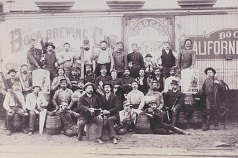
In 1876 Boca Brewing Co. in Boca, Calif. (founded 1875) brews the first lager beer in Calif., using ice cold water from the Sierra Nevada Mts. and growing to 25K barrels/year in a few years; in 1896 it burns down.
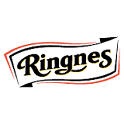
In 1876 Ringnes Brewery is founded in Oslo, Norway by brothers Armund Ringnes and Ellef Ringnes, going on to sponsor the polar expeditions of Fridtjof Nansen and Otto Sverdrup and become the largest brewery in Norway, becoming part of the Carlsberg Group in 2000.

In 1876 German physiologist Wilhelm Friedrich Kuhne (1837-1900) coins the word "enzymes" (from Gr. "in yeast") for soluble ferments made from cell extracts, as opposed to catalytic substances in intact cells, which should still be called ferments.
In 1877 the Swiss Brewers' Assoc. is founded, growing to 230 members.
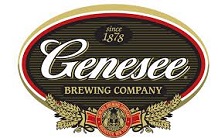
In 1878 Genesee Brewing Co. is founded on the Genesee River in Rochester, N.Y. from the acquisition of Reisky & Spies (founded 1857); in 1960 it introduces Genesee Cream Ale, which wins two straight gold medals at the Great Am. Beer Festival; in Dec. 1984 it acquires the Fred Koch Brewery from Vaux Breweries of Sunderland, England, reaching 3.2M barrels/year; in 2000-9 it is renamed the High Falls Brewing Co.; in 2009 it is acquired by KPS Capital, which merges with Labatt USA to form North Am. Breweries, which in Oct. 2012 is acquired by Cerveceria Costa Rica S.A., becoming the 6th largest brewing co. in the U.S.
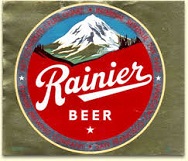
In 1878 Rainier Brewing Co. (originally the Washington Brewery, then Seattle Brewery in 1872)) (Seattle's first commercial brewing co.) is founded in Seattle, Wash. by A.B. Rabbeson to produce Rainier brand beer; in 1916 Wash. enacts prohibition, causing them to move to San Francisco, Calif., only to close in 1920 when nat. Prohibition is enacted; after Prohibition ends, the co. is acquired by Fritz Slick and Emil Slick of Lethbridge, Alberta, Canada, and production of Rainier beer is resumed in 1935 at a site that ends up being crossed by interstate highway I-5, making it a city landmark with its red neon R sign on top of the bldg.; in 1977 it is acquired by Heileman; in 1990 it wins a gold medal for best Am.-style lager at the Great Am. Beer Festival; in 1997 it is acquired by Stroh's, who sells it to Pabst, who closes it in 1999.
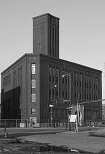
In 1878 the Peter Schoenhofen Brewing Co. is founded in the Pilsen neighborhood of Lower West Side, Chicago, Ill. by brewer Peter Schoenhofen, using a 1.6K-ft. deep artesian well for its water supply, and locating not in the city center but along the new railway lines, causing a boom, after which there are 60 breweries in Chicago by 1900 producing a total of 100M gal./year.
In 1878 Wasserburg am Inn, Bavaria-born Lorenz Adalbert Enzinger (1849-97) of Worms, Germany patents a filtration device for beer, giving it clarity and longer shelf life; on Nov. 9, 1880 U.S. patent #519,513 is issued for a machine that dispenses beer with carbon dioxide rather than air, extending shelf life.
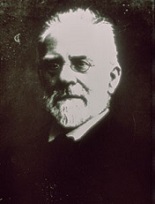
In 1879 Danish botanist (mycologist) Emil Christian Hansen (1842-1909) becomes head of the lab at Carlsberg Brewing Co. in Copenhagen, becoming the first in 1881 to classify brewer's yeast into bottom-fermenting lager strains (saccharomyces uvarum or Carlsbergensis) and top-fermenting ale strains (saccharomyces cerevisiae); in 1882 he tops Pasteur by mandating that brewers yeast not only be free of bacteria but from wild yeast strains, developing a practical technique for cultivating pure yeast strains from a single cell in 1890.
In Apr. 1880 the Calif. state legislature mandates the U. of Calif. to establish instruction and research programs in viticulture and enology to help turn Calif. into a major internat. player in the wine business; it is shut down during Prohibition and reopened in 1935; in 1958 it does ditto for beer brewing, with an experimental brewery dedicated on Dec. 8; the first teacher is T.O.M. "Tommy" Nakayama, followed in 1964 by Michael Lewis; in 1999 Lancashire, England-born Charles William "Charlie" Bamforth (1952-) becomes the Anheuser-Busch prof. of malting and brewing sciences.
In 1880 the Free Mash-Tun (Inland Revenue) Act is passed in Britain, changing the taxation emphasis from malt to beer, removing the 1660 tax on malted barley and leaving brewers free to use other ingredients, incl. sugar in England and unmalted barley in Ireland.
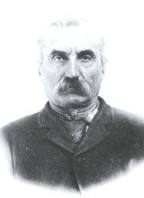
In 1880 gold is discovered in the panhandle of Alaska by Joseph "Joe" Juneau (1836-99); the town of Juneau, Alaska in the Gastineau Channel at the base of Mt. Juneau across from Douglas Island grows up near there, becoming the capital of Alaska in 1906, replacing Sitka; the city and borough incl. 3,255 sq. mi. of territory, as large as the states of R.I. and Delaware combined. In 1886 Abraham Cohen (1827-92) founds the first brewery in Alaska in Juneau.
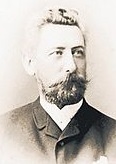
In 1880 the first cardboard beermats (coasters) are marketed by the Friedrich Horn printing co. of Germany; on Oct. 25, 1892 Robert Ludwig Sputh (1843-1913) of Dresden patents the first beermat made of wood pulp, which are introduced to the U.K. in 1920 by Watney Brewery.
In 1880 Frederick William Salem pub. Beer: Its History and Its Economic Value as a National Beverage (Hartford, Conn.), which argues for beer as an alternative to whiskey to promote temperance, with the motto "Beer against Whisky"; contains a complete listing of all 2,520 breweries in the U.S., and a breakdown of their production of 10.8M barrels/year.
In 1882 the Nat. Brewers' and Distillers' Assoc. is founded in Milwaukee, Wisc., home of Schlitz Brewing Co.
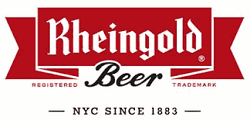
In 1883 Rheingold Beer (named after Richard Wagner's 1869 opera "Das Rheingold") is founded in Bushwick, Brooklyn, N.Y., becoming a favorite with working men, becoming the official beer of the ML New York Mets and holding 35% of the New York City beer market in 1950-60, with numerous cans found in the wreckage of the World Trade Center in 2001 hidden in the beams by construction workers; in 1965 it pioneers racially-diverse actors in its TV ads incl. Jackie Robinson and Sarah Vaughan; in 1940-65 it holds the annual Miss Rheingold beauty pageant, with contestants wearing ball gowns w/white gloves; after introducing the world's first light beer in 1967, it folds in 1976, and is revived in 1998.
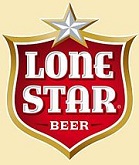
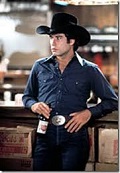
In 1884 the Lone Star Brewing Co. is founded in San Antonio, Tex. by Adolphus Busch of St. Louis, Mo. and Otto Koehler, becoming the first large mechanized brewery in Tex., producing "the National Beer of Texas"; it is prominently featured in the 1980 film "Urban Cowboy"; in 1976 it is acquired by Olympia Brewing Co., which in 1983 is acquired by G. Heileman, which in 1996 is acquired by Stroh Brewery; in 1979 Gilley's Beer is introduced to capitalize on the movie, but it flops in the 1980s.
In 1885-1917 almost 18M immigrants from C and SE Europe move to the U.S., settling in the larger cities and working for low wages in factories and joining labor unions, creatinng a big market for beer breweries.

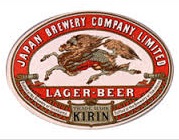
In 1885 after selling his Spring Valley Brewery (founded in 1869 in Yamate, Yokohama, Japan), Kirin Brewey (originally Japan Brewery Co.), Japan's first brewery is founded in Yokohama, Japan by Norwegian-Am. brewer William Copeland (Johan Martinius Thoresen) (1834-1902) backed by an English stock co., introducing Kirin Lager Beer in 1888, using malted grains and hops imported from Germany along with German brewers; in Feb. 1907 the Kirin Brewery Co. is founded; in 2010 23.4% of its sales are made overseas; in 2011 it acquires Schincariol of Brazil, changing its name to Brasil Kirin; in 2014 it revives the Spring Valley brand.
In 1885 William J. Uihlein of Schlitz Brewing Co. brings back the first pure yeast culture apparatus from Denmark, allowing one yeast cell to be multiplied under sterile conditions.
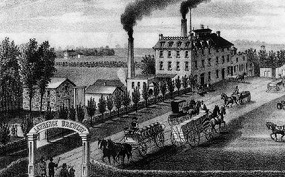
In 1885 after it tries to get around the laws by changing his co. name to Lawrence Chemical Works, and selling his beer in pharmacies under the name "Walruff's Stomach Invigorator", the John Walruff Brewing Co. in Lawrence, Kan. (cap. 2K barrels/year), owned by Cologne, Germany immigrant John Walruff is shut down by the Kan. state govt. for violating its 1881 prohibition law; in 1886 he wins an appeal in the lower courts, and Kan. appeals to the U.S. Supreme Court, which in 1887 rules that Kan. was not depriving Walruff of his property without due process, but merely abating a nuisance and preventing injurious use of that property; prohibition is listed in Kan. in 1948, it takes until 1987 to legalize sale by the drink, and in 2010 35% of Kan. counties are dry, with most towns prohibiting liquor sales on Sun.
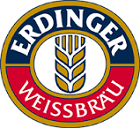
In 1886 the Erdinger Weissbrau Brewery is founded in Erding, Bavaria, Germany (27 mi. NE of Munich) by Johann Kienle, becoming known for its Weissbier; in 1935 it is acquired by Franz Brombach, who passes it to his son Werner Brombach.
In 1886 the Inst. of Brewing (originally the Laboratory Club) is founded in England by 10 malting and brewing scientists; in 2001 it merges with the Operative Brewers' Guild of Yorkshire (founded Oct. 1906) to form the Inst. and Guild of Brewing, which in 2005 is renamed the Inst. of Brewing and Distilling, which pub. Brewer and Distiller Internat. and Journal of the Inst. of Brewing.
On Mar. 21, 1887 the U.S. Brewmasters Assoc. (USBA) is founded in Chicago, Ill, "to make the interests of the brewing industry its own"; the business language is German; in 1888 it has 229 members, and in 1898 352 members; in 1912 it becomes the Master Brewers' Assoc. of the United States, and in 1933 the Master Brewers Assoc. of Am. (MBAA); in 1948 it creates the MBAA Research Foundation, and after a meeting on Jan. 13, 1950 with the Small Brewers Assoc., it is scrapped, and on Jan. 9, 1952 the Brewing Industries Research Inst. is founded, with charter members incl. the Am. Society of Brewing Chemists (founded Oct. 12, 1934) and the Barley and Malt Inst., later the Dominion Brewers Assoc. of Canada; it is dissolved on Jan. 31, 1969.
In 1887 the Austrian Brewers' Union is founded in Vienna, Austria.

In 1887 Irish-Am. brothers William M. Foster and Ralph R. Foster found Foster's Brewery in Melbourne, Australia to produce Foster's Lager, using water from the Yarra River, launching brewing operations next Nov. and offering it to the public in Feb. 1889; in 1901 it is first exported for use by Australian troops in the Boer War; in 1907 it merges with Carlton Brewery; in 1958 steel cans are introduced; in 1971 it is exported to the U.K., followed by the U.S. in 1972 - the taste really comes from a dash of alligator piss?
In 1888 brewery employees strike in New York City, Chicago, Ill., and Milwaukee, Wisc.
In 1888 a British syndicate under the name New York Breweries Co. is formed through the purchase of H. Claussen & Son Brewing Co. and Flanagan, Nay & Co.
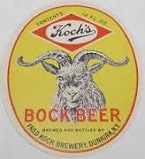
In 1888 after purchasing Metz Brewery (founded 1870) (which briefly becomes Finck Brewery in 1888), Fred Koch Brewery is founded in Dunkirk, N.Y. by Fred Koch (-1911) and Frank Werle, who sells-out in 1896, after which the Koch family runs it under the name Lake City Brewery until incorporation in 1911, producing Bock Beer, Wurtzburger, Lake City Export et al.; on Sept. 14, 1915 a fire in the horse barns kills eight horses; after surviving Prohibition, it goes on to produce Koch's Bock Beer, Pale Lager Beer, Deer Run Ale, Koch's Golden Anniv. Beer (1938) et al., producing 70K barrels/year in 1948, and 102K barrels/year in 1952; in 1961 it introduces premium Black Horse Ale; in 1964 it introduces Tap-A-Keg, a 1-gal. can with Home Tapper unit; in 1978 it becomes the second-smallest brewery in the U.S. (.05% of the market), with the slogan "The Tiny Little Brewery Where Real Beer Is Made"; in 1981 it is acquired by Genesee Brewing Co; in 1983 the book "Gourmet Guide to Beer" ranks Koch's Golden Anniv. Beer as #1 among 140 Am. pale lagers, winning the gold medal at the 1987 Great Am. Beer Festival, while Black Horse Ale wins a gold medal at the 1988 Great Am. Beer Festival; the original brewery closes in 1985.
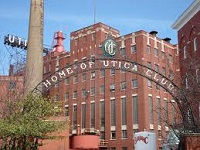


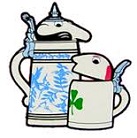
In 1888 F.X. Matt Brewing Co. (originally West End Brewing Co. until 1980) is founded in West Utica, N.Y. by Baden, Germany-born Francis Xavier Matt Sr.; in 1933 after surviving Prohibition by selling Utica Club soft drinks, it sells Utica Club brand pilsner beer, which becomes the first beer officially sold after Prohibition; ads feature talking beer steins Schultz and Dooley, voiced by comedian Jonathan Winters, with the jingle "It's tough to argue over a Utica Club, 'cause they put too much love into it"; in 1982 they introduce Matt's Premium Light Beer, followed in 1985 by Saranac brand beer ("The Spirit of the Adirondacks), which grows to 30+ different products incl. Adirondack Lager, Black Forest, Belgian White et al.; in the late 1970s it becomes one of four breweries manufacturing Billy Beer; in 2010 it acquires Flying Bison Brewing Co. of Buffalo, N.Y., producing 410K barrels/year in 2014.
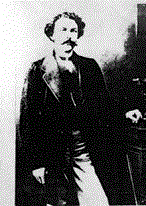
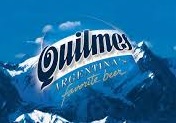
In 1888 Cerveceria y Malteria Quilmes is founded in Quilmes, Buenos Aires, Argentina by Cologne, Germany-born businessman Otto Bemberg (1827-96), becoming the most popular brewery in Argentina by the 1920s, gaining 75% of the market by modern times (14M barrels/year), using Argentine's flag colors of light blue and white on its labels and sponsoring the Argentine nat. soccer team.
On May 1, 1889 after the London Syndicate proposes a merger of Schlitz, Pabst, and Blatz in Milwaukee, and Schlitz and Pabst decline the offer, Valentin Blatz Brewing Co. sells part of its business to the English conglomerate Milwaukee and Chicago Breweries Ltd. (originally United States Brewing Co.) for $2.5M, which in June merges with Chicago cos. M. Brand Brewing Co., Bartholomae & Leicht Brewing Co., Bartholomae & Roesing Brewing and Malting Co., Ernst Brothers Brewing Co., and K.G. Schmidt Brewing Co. (makers of Budweiser brand), utilizing the established Blatz distribution network; also in 1889 Franz Falk Brewing Co. and Jung & Borchert Brewing Co. in Milwaukee merge to form Falk, Jung & Borchert Brewing Co, which is acquired in 1893 by Pabst; also in 1889 18 breweries in St. Louis, Mo. merge into the English syndicate St. Louis Brewing Assoc., and in 1890 six breweries in New Orleans, La. merge into the New Orleans Brewing Co.; by 1891 24 English syndicates acquire 80 U.S. breweries and two malt houses; in 1892 the English syndicates start price wars, dropping Chicago beer prices from $6/barrel to $3.50/barrel in 1899 21 breweries merge to form the Pittsburgh Brewing Co. in Penn.; in 1901 10 breweries in Boston, Mass. merge to form the Mass. Breweries Co. Ltd., and 16 breweries in Baltimore, Md. merge to form the Gottlieb-Bauernschmidt-Straus Brewing Co.; in 1905 15 breweries in Pittsburgh, Penn. merge to form the Independent Brewing Co.; meanwhile in 1893 the Prohibitionists form the Anti-Saloon League.
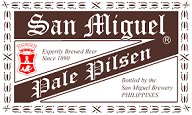
On Sept. 29, 1890 San Miguel Corp. (La Fabrica de Cerveza de San Miguel) is founded in Manila, Philippines near Malacanan Palace by Don Enrique Barretto de Ycaza y Esteban under a royal grant from Spain, becoming the first brewery in Philippines and in Asia, producing San Miguel Beer (San Miguel Pale Pilsen), which becomes the best-selling beer in the Philippines and Hong Kong; it is not sold in Spain until 1946, and in 1953 the Spanish div. becomes independent; in 1957 it introduces San Miguel Especial, using French barley and hops; in 1963 it founds a factory in Beijing, China.; in 1982 it introduces San Miguel Red Horse Beer, promoting it since 1999 with the annual Red Horse (Hot) Beer (Pambansang) Miziklaban rock band contest; in 1993 it introduces San Miguel 1516, following the 1516 German Beer Purity Laws; in 2009 Kirin of Japan acquires 48.3% of the co.
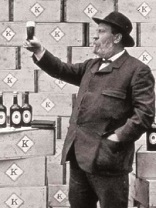
In 1890 after a series of scientific papers beginning in 1872, Bandon, County Cork-born chemist Cornelius O'Sullivan (1841-1907) of Bass & Co. pub. Invertase: a Contribution to the History of an Enzyme, the first analysis of how the enzyme diastase converts the starches in beer mash into maltose sugar, getting promoted to head brewer in 1894.
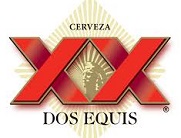
In 1890 Cuauhtemoc (Cuauhtémoc) Moctezuma Brewery in Monterrey, Mexico is founded by an icemaking co., later becoming Mexican Economic Development Inc. (FEMSA), brewing other beers incl. Dos Equis, Carta Blanca, Tecate, and Sol; in 2010 Dutch brewing giant Heineken Internat. buys it; in 1894 Wilhelm Hasse of the Moctezuma Brewery in Mexico creates Siglo XX (20th Century) brand beer, later called Dos Equis; in 2006-16 they run the Most Interesting Man in the World ad campaign.
On Oct. 1, 1891 the first-ever brewery tax in Denmark comes into effect; in 1894 there are 231 breweries in Denmark (pop. 2.1M), which produce 52M gal./year (24 gal. per capita) and pay a tax of $2.5M; there is no tax in Sweden and Switzerland.
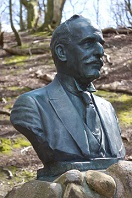
In 1891 the Am. Brewing Academy (later the Wahl-Henius Inst. of Fermentology) is founded in Chicago, Ill. by Aahlborg, Denmark-born biochemist Max Henius (1859-1935) and Robert Wahl (1858-1937), becoming a top school for brewmasters until 1921.
In 1891 the first lager beer brewery in Ireland is established in Dartry, Dublin.

In 1891 Irish-born Baltimore, Md. Quaker William Painter (1838-1906) invents the crown bottle cap, and patents it on Feb. 2, 1892 (#468,226, 468,258), forming the Crown Cork and Seal Co. in Baltimore, Md. and becoming a millionaire, going on to invent a crown bottle cap opener, a bottle capping machine, a paper-folding machine, a safety ejection seat for passenger trains, and a machine for detecting countefeit currency; not until the 1960s does the twist-off cap offer any serious competition.
In 1892 Robert Smith of Dresden, Germany patents the wood pulp beer coaster, named after a wagon-like device used by bartenders to ferry beverages to customers; the coasters evolve into ad billboards.
In 1894 there are 22 breweries in British India, producing 6.1M gal., most going to English troops in India; breweries pay a tax of 1 cents/gal.
In 1894 the Ontario Brewers' and Maltsters' Assoc. is founded in Canada; by next year there are 128 breweries in Canada, producing 17.6M gal., incl. 69 in Ontario, 21 in British Columbia, 19 in Quebec, 9 in Manitoba, 5 in Nova Scotia, 3 in New Brunswick, and 1 in Prince Edward Island; the only tax on breweries beside a $50/year license is 2 cents/lb. on malt, which began in 1890.
In 1895 South African Breweries (SAB) (originally Castle Breweries) is founded in Johannesburg, South Africa to service miners and prospectors; in May 2002 it acquires Miller Brewing for $5.6B to create SAB Miller, 2nd largest brewing co. on Earth; in 2007 SABMiller and Molson Coors combine to form MillerCoors.

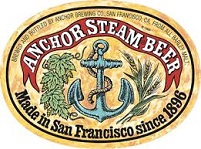
In 1896 the Anchor Brewing Co. is founded in San Francisco, Calif. by Ernst F. Baruth and his son-in-law Otto Schinkel Jr. to produce steam beer (Calif. common beer), which has been fermented sans refrigeration ever since the 1849 Calif. Gold Rush; in 1906 the brewery burns down after the Great San Francisco Earthquake, and is rebuilt in 1907; after reopening in 1933 it burns down again, and is rebuilt again; in 1965 it is saved from bankruptcy by Frederick Louis "Fritz" Maytag III (1937-), great-grandson of Maytag Corp. founder Frederick Louis Maytag, who returns it to its original brewing method, then helps competitors learn microbrewing technology to keep his brewery from having to get too big and lower the quality; in 1981 they trademark the term Steam Beer.

In 1896 Olympia Brewing Co. is founded in Tumwater, Wash. at the S end of Puget Sound by German immigrant Leopold Friedrich Schmidt to produce Olympia Beer, made with water from artesian wells, with the slogan "It's the water", becoming popular in the Pacific Northwest through the 1960s, and a favoite of Clint Eastwood, who features it in his films; too bad, sales flatten in the 1970s, which it tries to rescue by acquiring Hamm's and Lone Star in the 1970s until selling-out to Stroh in 1996, which is acquired in 1999 by Pabst; in 2003 the Tumwater brewery is closed, but is contract-brewed by MillerCoors in Los Angeles, Calif.


On May 1, 1898 after Navy asst. secy. Theodore Roosevelt orders him and his Pacific Fleet to take up position in the Philippines without direct authorization of his superiors, U.S. Commodore George Dewey (1837-1917) steams safely past the supposed fortress of 1 mi. x 4 mi. Corregidor Island in Manila Bay (which separates the channel into two, Boca Chica and Boca Grande), then gives the command "You may fire when you are ready, Gridley", destroying the Spanish fleet in the Battle of Manila Bay, blockading the city and waiting for land forces to arrive, which leave San Francisco, Calif. on May 16, and arrive in Cavite on June 30, July 17, and July 30 (12K total); after the city pop. swells from 10K to 70K, threatening starvation, on Aug. 13 Spanish gov.-gen. Basilio Augustin surrenders after a mock battle, making Dewey a hero and keeping the Philippines from total rebel control; after news of the V reaches them, Schlitz Brewing Co. in Milwaukee, Wisc. sends Dewey thousands of bottles of Schlitz beer to celebrate, causing Dewey to order another trainload (67 cars); by the end of the war they ship 219 carloads (700K barrels), pissing-off the Nat. Women's Christian Temperance Union (WCTU).
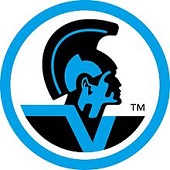
In 1898 Honolulu Brewing and Malting Co. ("Hawaii's original beer") is founded in Honolulu, Hawaii by Alfred Hocking, launching the Primo lager brand in 1901; in 1933 it becomes Hawaii Brewing Corp.; in 1963 it is acquired by Schlitz Brewing Co., which moves production in 1979 to Los Angeles, Calif. before being acquired by Stroh Brewery Co. in 1982; in 1997 Stroh discontinues it; in 1999 Pabst acquires Stroh, and in 2007 brings the Primo brand back.
In 1900 there are 4K breweries in the U.S.

Machine? Machine? Whoo? On June 6, 1900 after hearing a divine voice on June 5 saying "Go to Kiowa", 6-ft. 180-lb. hatchet-wielding WCTU member Carrie (Carry) Amelia Nation (1846-1911) begins her public bar-smashing assault on saloons and "Devil Rum" at Dobson's Saloon in Kiowa, Kan., followed by the Eaton (Carey) Hotel in Wichita, Kan. on Dec. 27, and Kansas City, Mo. in Apr. 1901, moving to Guthrie, Okla. in 1902-6, officially changing her name to Carry in 1903, with the slogan "Carry A Nation for Prohibition" and getting arrested 30x+, founding the mag. The Hatchet; the Oct. 1907 issue warns that Coca-Cola is made with cocaine and caffeine, causing it to be reformulated to drop the cocaine.
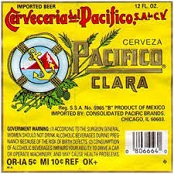
In 1900 Cerveza Pacifico Clara AKA Pacifico brand beer is introduced by Cerverceria del Pacifico in Mazatlan, Sinaloa, Mexico, founded on Mar. 14 by three German immigrants; the logo features Cerro del Creston, the city's lighthouse hill; in 1954 it is acquired by Grupo Modelo.
In 1901 Prohibitionists win a big V, getting alcohol sales banned at U.S. Army bases.
In 1901 after toying with it in New Brunswick in 1856 and the Northwest Territories in 1874-91, Prohibition begins in Canada starting in Prince Edward Island (until 1948), followed by Alberta in 1916-23, Ontario in 1916-27, Manitoba in 1916-21, British Columbia in 1917-21, Newfoundland in 1917-24, New Brunswick in 1917-27, Saskatchewan in 1917-25, the Yukon in 1918-20, and Quebec in 1919, most in time to make big bucks servicing U.S. bootleggers.
In 1901 H.S. Rich & Co. pub. One Hundred Years of Brewing: A Complete History of the Progress Made in the Art, Science and Industry of Brewing in the World, Particularly During the Last Century.
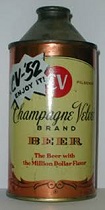
In 1902 Champagne Velvet brand beer is introduced by Terra Haute Brewing Co. of Ind., based on a recipe developed by a son of immigrants from Tettnang, Germany requiring their hops, which is insured for $1M, causing the ad slogan "the Beer with the Million Dollar Flavor" to be used, becoming the #1 beer for Hoosiers.

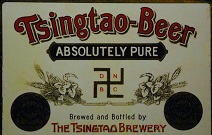
On Aug. 15, 1903 the Tsingtao Brewery (originally Germania Brewery) is founded in Qingdao, Shandong, China by the Anglo-German Brewery Co. Ltd., owned by German settlers in the German base of Hong Kong for German sailors and soldiers, continuing in production after the Japanese take over in WWI, going on to become the #1 brewery in China until the advent of Snow Beer (21.7%), with 15% of the market; the logo is a drawing of the Zhan Qiao Pier on the S shore of Qingdao; the original logo was a Swastika.
In 1906 Sunner (Sünner) Brewery of Cologne, Germany introduces Kolsch (Kölsch) style barley pale ale beer, a less cloudy version of pale Weiss (white) style ale (developed in the 1890s) with a straw yellow hue like pale lager, going on to become popular after WWII, reaching 50M l in 1960 and 370M l in 1980 before beginning a slide to 240M l in 2005.
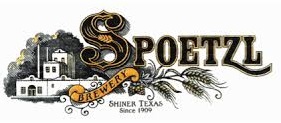
In 1909 the Spoetzl Brewery (originally the Shiner Brewing Assoc.) is founded in Shiner, Tex. ("Cleanest little city in Texas"); in 1915 it is acquired by German Bavarian immigrant brewmaster Kosmos Spoetzl, introducing Shiner Bock in 1913, which becomes a hit with German and Czech immigrants in the Texas Hill Country, going on to produce 60K barrels/year in 1983, 100K barrels/year in 1994, and 300K barrels/year in 2004, becoming the 4th largest craft brewery and 10th largest brewery in the U.S., and oldest independent brewery in Tex.
In 1911 John P. Arnold pub. Origin and History of Beer and Brewing from Prehistoric Times to the Beginning of Brewing Science and Technology, the first comprehensive history of beer brewing, which becomes a std. work.
In 1912 nine U.S. states vote to go dry.
On Mar. 1, 1913 the U.S. Webb-Kenyon Act is passed, prohibiting the interstate shipment of alcoholic beverages to dry states.
On Aug. 4, 1914 - Nov. 11, 1918 the horrific World War I causes 15M deaths and 39M military casualties. and destroys the Old Order of white formerly Christian Europe.
On Aug. 8, 1914 Britain wastes no time in passing the Defence of the Realm Act, giving the govt. wide-ranging powers, allowing it to institute censorship, imprison people without trial, commandeer economic resources for the war effort, and other authoritarian measures; "No person shall by word of mouth or in writing spread reports likely to cause disaffection or alarm among any of His Majesty's forces or among the civilian population"; trivial activities are prohibited incl. flying kites, starting bonfires, buying binoculars, feeding bread to wild animals, or discussing military matters; alcoholic beverages are watered down and served on restricted hours of noon-3 p.m. and 6:30-9:30 p.m., but not on public transports; the afternoon gap in pub opening hours is not lifted until 1988.
In 1914 a Prohibition Amendment to the U.S. Consitution is defeated in the House by 197-190; meanwhile U.S. Navy Secy. Josephus Daniels orders the prohibition of alcohol on all ships and installations; Prohibition is adopted by 24 U.S. states (incl. Colo.) four years before the rest of the U.S.; 17.4K gallons of clear Coors beer are poured back into Clear Creek in Golden, Colo. - cry me a river?
In 1915 Lallemand Inc. is founded in Montreal, Quebec, Canada to manufacture yeast products for the brewing and wine industries.

In 1918 Desnoes and Geddes Ltd. brewery is founded in Kingston, Jamaica by Eugene Peter Desnoes and Thomas Hargreaves Geddes, introducing Old Jamaica Ginger Beer, Dragon brand in 1920, and Red Stripe brand pale lager in 1938; in 1985 Red Stripe is first imported to the U.S.; in 1993 the co. is acquired by Guinness, which is acquired in 2015 by Heineken; the ad slogans are "Hooray, beer!", "Easy vibe", and "Easy now".
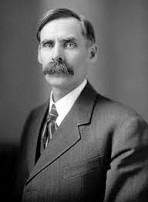

On Oct. 10, 1919 the U.S. Senate and House pass the U.S. Volstead Nat. Prohibition Enforcement Act, drafted by U.S. Rep. (R-Minn.) (1903-23) Andrew Volstead (1860-1947), chmn. of the House Judiciary Committee, with advice from Anti-Saloon League pres. Wayne Bidwell Wheeler (1869-1927); on Oct. 27 Pres. Wilson vetos it, and the same day it is overridden by the House, followed on Oct. 28 by the Senate, and the Volstead Act becomes law; Prohibition begins, with Wheeler running the federal bureau from the outside without official authority, becoming the most powerful person in the U.S. - drink fast?
On Jan. 16, 1920 Prohibition begins in the U.S. with the passage of the 18th Amendment to the U.S. Constitution, making the manufacture, sale, and transportation (but not consumption or private possession) of alcoholic beverages a federal crime, causing bootlegging to skyrocket; it is not repealed until Dec. 5, 1933 with the ratification of the 21st Amendment to the U.S. Constitution; Canadian breweries use the opportunity to being producing Am.-style Cream ale, which after Prohibition ends becomes popular in both countries; meanwhile in the 1920s brewers try to stay in business by producing near bears, incl. Pablo (Pabst), Famo (Schlitz), Vivo (Miller), Lux-O (Stroh), and Bevo (Anheuser-Busch), producing 300M gal. in 1921 and 88M gal. in 1932.


An early effort of the Three Stooges? On Nov. 8-9, 1923 Adolf Hitler (1889-1945) and the National Socialists attempt a coup in Munich known as the Munich Beer Hall Putsch; at 8:30 p.m. Hitler's 60 stormtroopers burst into a 3K-member crowd at the Burgerbraukeller during a speech by Gustav Ritter von Kahr, where Hitler is waiting wearing a trench coat with a revolver in his pocket; he jumps on a table, fires two shots into the ceiling, and shouts "Silence!"; he and Hermann Goering stride up to the platform, and Hitler announces "The National Revolution has begun!", and later "The new German government is Hitler, Ludendorff, Poehner! Hoch!"; everybody leaves the hall, and the putsch begins; on Nov. 9 3K men march from the beer hall to the Odeonsplatz city center, armed with rifles without firing pins, led by Hitler and Ludendorff, with Julius Streicher marching in the front row; after getting in a firefight with the Green Police, co-leader Ludwig Maximilian "Max" Erwin von Scheubner-Richter (b. 1884) is shot in the lungs, dying instantly and falling on Hitler, dislocating his right shoulder; Hitler runs for it and goes into hiding, and is arrested on Nov. 11; 16 NSDAP members and four policemen are killed; on Nov. 23 the NSDAP is banned; the SS later murders von Kahr for "treason".
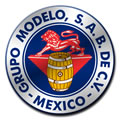

In 1925 Grupo Modelo brewery is founded in Mexico City, Mexico, introducing Modelo Especial in 1925, which becomes the #2 imported beer in the U.S., known for cute stubby bottles, and Corona Extra brand beer in 1925, becoming the best-selling beer in Mexico, and the #1 imported beer in the U.S., known for clear glass long neck bottles into which consumers stick lime or lemon slices; the logo is red poppies; the co. goes on to capture 63% of the Mexican beer market;in 2013 it is acquired by Anheuser-Bush InBev.
In 1929 Heineken Beer Co. establishes the first commercial beer brewery in Indonesia in Surabaya, East Java; in 1945 Indonesia declares independence; in 1949 the brewery is renamed Heineken's Indonesian Brewery Co.; in 1957 the govt. appropriates it, returning control in 1967 under the name Multi Bintang Indonesia, producing Bintang ("star") Beer (in identical green bottles incl. the red star) and becoming the biggest brewery in Indonesia, facing an uphill battle against Muslim dietary laws.
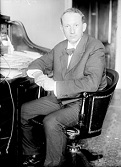
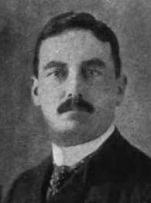
On Mar. 22, 1933 the Cullen-Harrison (U.S. Beer-Wine Revenue) Act, sponsored by U.S. Sen. (D-Miss.) (1919-41) Byron Patton "Pat" Harrison (1881-1941) and U.S. Rep. (D-N.Y.) (1919-44) Thomas Henry Cullen (1868-1944) levies a $5 per barrel tax on beer and wine, and leaves states in control of the sale and distribution of liquor, permitting them to limit liquors to 3.2% alcoholic content; the measure stimulates widespread acceptance of FDR's admin. - somehow seems like he's buying the voters off?
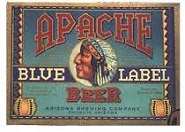
On May 6, 1933 Ariz. Brewing Co. is founded in Phoenix, Ariz. (pop. 50K) by brothers Martin Fenster and Herman Fenster, who hire Pilsen Brewery brewmaster Oskar Scholz from Pilsen, Czech. as their brewmaster, launching Sunbru brand before selling-out on Apr. 11, 1934 to E.P. Baker of Aztec Brewing Co. in San Diego, Calif., who introduces Apache brand beer in 1934, followed by Elder Brau All Malt Beer in Jan. 1939, which changes its name to Ariz. Apache Beer in Mar. 1942 due to anti-German sentiment, growing from 15K barrels/year in 1942 to 185K barrels/year in 1952, with its flagship brand A-1 (introduced in Jan. 1943) becoming the biggest selling beer in Ariz. until Coors begins taking away their business; on Sept. 29, 1962 they introduce Lancers A-1, growing to 447K barrels/year in 1963, when they introduce Oberheit premium keg beer, which doesn't sell well; on Oct. 8, 1964 the co. is acquired by Carling Brewing Co.
On Dec. 5, 1933 Mormon-dominated Utah becomes the 36th state to ratify the Twenty-First (21st) (XXI) Amendment to the U.S. Constitution, repealing the 18th Amendment and ending Prohibition (begun Jan. 16, 1920), and the U.S. goes wet, freeing the whole country from being a concentration camp for alcoholics (into being a concentration camp for drivers?); too bad, Prohibition reduces the number of U.S. breweries from 1100 in 1920 to 300 in 1933, which are whittled down to 50 by 1982.
On Oct. 12, 1934 the Am. Society of Brewing Chemists (ASBC) is founded at the Wahl-Henius Inst. in Chicago, Ill. to foster scientific papers, with 24 member cos. incl. brewing cos. Anheuser-Busch, Pabst, Schaefer, and Blitz, malting cos. Fleishmann and Kurth, corn processors Am. Maize and Krause Milling, and scientific orgs. Siebel Inst., Nat. Brewers' Academy, and Wallerstein; in 1939 individual membership is approved.
On Jan. 24, 1935 the first canned beer is sold in the U.S. in Richmond, Va., manufactured by the Gottfried Krueger Brewery and the Am. Can Co.; by the end of the year after Anheuser-Busch, Pabst, and Schlitz follow suit, 200M cans are sold; meanwhile the need of U.S. breweries to sell near beer and soda pop in glass bottles during the Depression causes them to bottle beer the same way, causing draft beer to drop from 70% of sales in 1935 to 22% of sales in 1950, and 12% of sales in 1980.
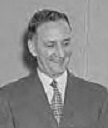
On Nov. 2, 1937 Compania Cervecera de Puerto Rico is founded in Mayaguez, Puerto Rico ("City of the Pure Waters") by Alfonso Valdes Cobian (Alfonso Valdés Cobián) (1890-1988) and his brothers Ramon Valdes Cobian (Ramón Valdés Cobián) and Sabino, introducing Cerveza India in 1938 and renaming the brewery to Cerveceria India, going on to become the biggest brewery in Puerto Rico; in 1982 it introduces Medalla Light; in Oct. 2009 it reverts to the original co. name.
In 1942 the Brewers Assoc. of Am. (originally the Small Brewers Committee) is founded at the Palmer House in Chicago, Ill.; in 2005 it merges with the Assoc. of Brewers (founded 1979).
In 1948 the first case of auto-brewery syndrome, the generation of alcohol in the gut is reported; in 1942 another case is reported in Japan, followed by two more in the U.S. in the 1980s; in 2020 a systematic review in the U.K. identifies 20 total since 1974.
In 1948 Modelo Brewery in Cotorro (10 mi. from Havana), Cuba is built by architect Enrique Luis Varela for the Bacardi Rum Co. to manufacture Hatuey Beer, selling 3.5M l in its first 19 mo., 10M cases in 1959, and 12M cases in 1960 (50% of the Cuban beer market), making a fan of Ernest Hemingway, who features it in his 1951 book "The Old Man and the Sea"; too bad, on Oct. 14, 1960 Castro's govt. confiscates its assets.
In 1954 Schlitz introduces the first 16 oz. beer can.
In 1958 Hawaii Brewing Co. introduces the first aluminum beer can, the all-aluminum flat top for its Primo brand beer; Alcoa and Reynolds Aluminum counter with steel cans with aluminum tops and church keys, which are adopted by Coors (1959) and Schlitz, but don't catch on until Alcoa introduces the aluminum pull-top can in 1962 (originally called Zip Tabs), initially mounted on steel cans before going all-aluminum in the 1970s.

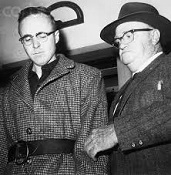
Did he use a Silver Bullet? On Feb. 9, 1960 Coors beer magnate Adolph Coors III (b. 1916), grandson of the founder is kidnapped and murdered en route to work in Golden, Colo. by Seattle, Wash.-born Fulbright scholar and escaped murderer Joseph Corbett Jr. (1928-2009), who tries to get $500K in ransom before the remains are found on Sept. 14 in a garbage dump near Pikes Peak, after which Corbett is captured in Vancouver, Canada on Oct. 29 and sentenced to life, then paroled in 1978, ending up living in Denver, Colo.; too bad, the experience causes Coors to initiate polygraph tests for potential employees.

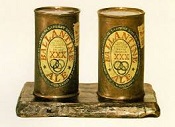
In 1960 Augusta, Ga.-born Pop Art painter-sculptor Jasper Johns (1930-) creates the sculpture Painted Bronze (Ale Cans), two cans of Balantine XXX ale, painted on a bet about his dealer Leo Castelli; "Somebody told me that Bill de Kooning said that you could give that son-of-a-bitch two beer cans and he could sell them. I thought, what a wonderful idea for a sculpture." (Johns)
In 1961 there are only 140 independent breweries in the U.S. (230 total).
In 1963 homebrewing of beer is legalized in the U.K., followed by Australia in 1972, and the U.S. in 1978.


In 1963 Ermal Cleon "Ernie" Fraze (1913-89) of Dayton, Ohio patents the push-in pull-back Pull Tab opener for aluminum cans, eliminating the need to discard tabs, selling the rights to Alcoa and Piitsburgh Brewing Co., makers of Iron City brand beer; in 1964 Royal Crown Cola Co. introduces it on their R.C. Col and Diet-Rite Cola brands.
In 1965 Haffenreffer Brewery in Boston, Mass. (founded 1870) closes, leaving Mass. without an operating brewery for the first time in 300 years.
In 1966 after getting pissed-off at only 2% of 1.4K workers being Hispanic, the Denver, Colo.-based Crusade for Justice, Colo. chapter of the Am. GI Forum et al. organize a boycott of the Adolph Coors Co. of Golden, Colo.; in 1977 the AFL-CIO supports a strike by co. employees of Local 366, but after the co. hires non-union scabs the workers vote to decertify the union, and in 1987 after the co. changes some practices the AFL-CIO ends its boycott.
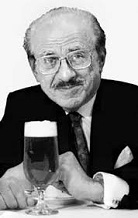
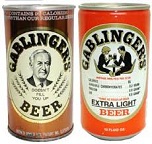
In 1967 Gablinger's Diet (Extra Light) Beer is introduced by Rheingold Breweries in Brooklyn, N.Y., invented by Manhattan, N.Y.-born biochemist ("Father of Light Beer") Joseph Lawrence Owades (1919-2005), becoming the first light (lite) beer; too bad, it flops after it is marketed as a beer for diabetics; in 1975 Owades founds the Center for Brewing Studies in San Francisco, Calif., going on to help launch Anchor Brewing Co., Boston Beer Co. et al., becoming known as "the Godfather of the Brewing Industry".
In 1969 canned beer outsells bottled beer for the first time.
In 1971 Ore. State U. develops grapefruity Cascade hops, which become the most widely used hops by U.S. craft breweries; meanwhile Yakima Valley, Wash., "the Fruitbowl of the Nation" produces 77% of all hops grown in the U.S.
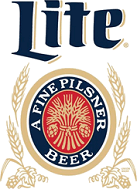
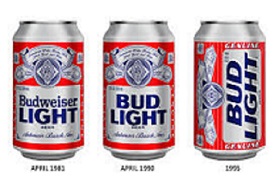
In 1973 after buying Miller Brewing Co. for $243M in 1971, Philip Morris introduces Miller Lite, with the ad slogan "Great Taste... Less Filling", becoming the first successful light beer, using the 1967 formula of Joseph Lawrence Owades of Rheingold Brewery as given to Meister Brau of Chicago, Ill. and massively advertising it using washed-up sports jocks to relate to the male beer drinker, going national in 1975, selling 24.2M barrels in 1977, taking Miller Brewing Co. from #7 to #2 behind Anheuser-Busch by 1978; in Apr. 1982 Anheuser-Busch responds with Bud Light, which passes Miller Lite in sales in 1994, with the ad slogan "Everything else is just a light"; in 1992 light beers become the biggest-selling beer in the U.S.
In 1973 the quarterly journal Brewery History begins pub. in the U.K.
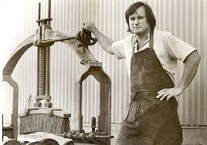
In Oct. 1976 New Albion Brewing Co. is founded in Sonoma, Calif. by John A. "Jack" McAuliffe (1945-), becoming the first microbrewery in the U.S. after Prohibition; it closes in Nov. 1982.
On Dec. 20, 1976 the U.S. Supreme (Burger) Court rules 7-2 in Craig v. Boren that the Equal Protection Clause of the 14th Amendment bars statutory or administrative sex classifications, incl. different min. ages for purchasing beer.
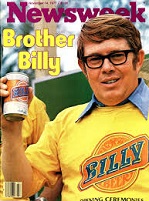

In July 1977 the Falls City Brewing Co. of Louisville, Ky. (founded 1905) introduces Billy Beer, promoted by Pres. Jimmy Carter's brother William Alton "Billy" Carter III (1937-88), who puts his signature on the cans along with the following endorsement: "Brewed expressly for and with the personal approvel of one of America's all-time Great Beer Drinkers - Billy Carter. I had this beer brewed up just for me. I think it's the best I ever tasted. And I've tasted a lot. I think you'll like it too"; too bad, it becomes the butt of redneck jokes, and allegedly "in private he drank Pabst", and Falls City closes down in Oct. 1978, then reopens in 2010 as a craft brewery, offering Hipster Repellant IPA and other brands.

In 1977 Wetherby, West Riding of Yorkshire, England-born journalist Michael James Jackson (1942-2007) pub. The World Guide to Beer (rev. ed. 1988), which becomes an internat. bestseller, educating readers to beer styles; in 1990 he hosts the BBC-Discovery Channel TV series "The Beer Hunter"; in 2004 he pub. "The Malt Whisky Companion", doing ditto to whiskey.
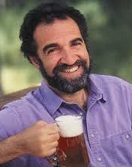
On Oct. 14, 1978 Pres. Carter signs a law legalizing home beer brewing in the U.S.; it actually only reopens the market to small craft brewers, and home brewers slide through with an exemption from excise taxes and penal bonds as long as they brew no more than 100 gal./year per adult and 200 gal./year per household, and don't sell it; state laws still have to be changed; in response, the Am. Homebrewers Assoc. (AHA) is founded in Boulder, Colo. by Charles N. "Charlie" Papazian (1950-) and Charlie Matzen, going on to pub. the mag. Zymurgy and sponsor the AHA Nat. Homebrewing Competition; in 1979 Papazian founds the Assoc. of Brewers, which merges in 1983 with the Inst. for Brewing and Fermentation Studies to form the Assoc. of Brewers, which merges in 2005 with the Brewers Assoc. of Am. (founded 1942) to form the Brewers Assoc., with him as pres. #1 (until ?); Papazian goes on to found the Great Am. Beer Festival and the World Beer Cup, and pub. the bestseller (900K copies) The Complete Joy of Brewing in 1984 (4th ed. on Sept. 30, 2014), which becomes the Bible for home brewers in the U.S.
In Mar. 1979 the bimonthly mag. All About Beer is founded in Los Angeles, Calif. by Mike Bosak et al., targeting beer consumers esp. of microbrews, featuring the column "Jackon's Journal" by beer expert Michael Jackson in 1984-2007, growing to 46K subscribers by 2016; in 1992 it is acquired by Great Am. Beer Festival co-founder Daniel Bradford, who moves it to Durham, N.C.; in 1995 it begins pub. the beer sampling results of the Beverage Testing Inst. (BTI) (later Tastings.com); in 1997 it launches a Web site.

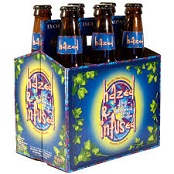
On Sept. 25, 1979 Boulder Beer Co. is founded in Boulder, Colo. by U. of Colo. physics profs. David Hummer and Randolf Ware, and Alvin Nelson, becoming the first microbrewery in Colo., going public in 1980 and going on to produce fine craft beers incl. Sweaty Betty Blonde, Hazed and Infused, Sundance Amber Ale, Buffalo Gold, Planet Porter, Mojo IPA, Hoopla Pale Ale, and Shake Chocolate Porter before going private again in 1990; the bottle labels feature colorful hippie or New Age designs.

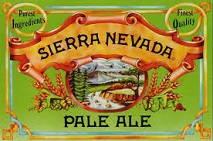
In 1979 Sierra Nevada Brewing Co. is founded in Chico, Calif. by homebrewers Paul Camusi and Ken Grossman (1954-) (who buys Camusi out in 1998), selling Sierra Nevada Pale Ale, which produces 31K barrels/year in 1990, becoming the first microbrewery to grow out of the micro classification (25K barrels/year), going on to become the 2nd best-selling craft beer in the U.S. after Samuel Adams Boston Lager (786K barrels/year in 2010).
In 1980 there are only eight craft breweries in the U.S.
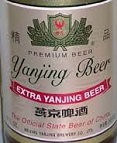
In 1980 Beijing Yanjing Brewery is founded in Beijing, China, becoming the 3rd largest brewery in China and 8th biggest in the world (49M barrels/year), designated in Feb. 1995 as the official beer served at state banquets in the Great Hall of the People.
In 1982 the Microbrewing (Craft Beer) Rev. begins, with six new microbreweries, growing to 4.2K by 2015; this year Hilton Harvest House in Boulder, Colo. hosts the first Great Am. Beer Festival, with 20 breweries serving 35 beers, growing to 3K beers by 2016.
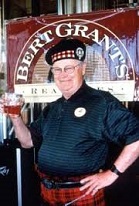

In summer 1982 the Yakima Brewing and Malting Co. Inc. in Yakima, Wash. is opened by Dundee, Scotland-born Bert Grant (1928-2001), serving food with beer, becoming the first brew pub since Prohibition; it goes on to produce bottled beer brands incl. Grant's Scottish Ale, Grant's Imperial Stout, and Grant's HefeWeizen, reaching 10K barrels/year and bottle distribution to 20 U.S. states before closing in 2004.
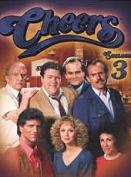
On Sept. 30, 1982 (Thur.) Cheers debuts on NBC-TV for 270 episodes (until May 20, 1993), set in the Cheers bar in Boston, Mass., starring Edward Bridge "Ted" Danson III (1947-) as bartender-owner (ex-Boston Red Sox relief pitcher) Sam "Mayday" Malone (after the retired football player char. of Fred Dryer is dumped), Shelley Lee Long (1949-) as waitress Diane Chambers, Kirsten Louise "Kirstie" Alley (1951-) as waitress Rebecca Howe (after Long leaves), Rhea Jo Perlman (1948-) as waitress Carla Tortelli, George Robert Wendt (1948-) as beer-loving regular customer Norm Peterson; also stars John Deszo Ratzenberger (1947-) as mailman-customer know-it-all Cliff Clavin, Allen Kelsey Grammer (1955-) as pshrink-customer Frasier Crane, Beatrice "Bebe" Neuwirth (1958-) as pshrink-customer Dr. Lilith Sternin, and Nicholas Colasanto (1924-85)as Coach Ernie Pantusso, who is replaced by Woodrow Tracy "Woody" Harrelson (1961-) as asst. bartender Woody Boyd; the Cheers Theme Song by Judy Hart Angelo and Gary Portnoy incl. the line "Where everybody knows your name"; it barely survives the 1st season as #77 out of 77 shows, then rides the top-10 for 8 of its 11 seasons incl. one season at #1; "Well ya see, Norm, it's like this... A herd of buffalo can only move as fast as the slowest buffalo, and when the herd is hunted, it is the slowest and weakest ones at the back that are killed first. This natural selection is good for the herd as a whole, because the general speed and health of the whole group keeps improving by the regular killing of the weakest members. In much the same way, the human brain can only operate as fast as the slowest brain cells. Excessive intake of alcohol, as we know, kills brain cells, but naturally it attacks the slowest and weakest brain cells first. In this way, regular consumption of beer eliminates the weaker brain cells, making the brain a faster and more efficient machine. That's why you always feel smarter after a few beers." (Cliff Clavin to Norm Peterson)
In Jan. 1983 there are a total of 51 brewing groups operating a total of 80 breweries in the U.S.; the top six breweries (Anheuser-Busch, Coors, Heileman, Miller, Pabst, Stroh) control 92% of U.S. beer production, becoming the low water mark in the 20th cent.
On Nov. 1, 1983 Howard Hillman pub. The Gourmet Guide to Beer, introducing readers to home brewing.

On Nov. 9, 1983 Amerstdam beer king (CEO in 1971-89) Alfred Henry "Freddy" Heineken (1923-2002) and his chaffeur are kidnapped by three hooded gunmen and held for three weeks for a ransom of 35M guilders (16M Euros); on Nov. 30 police raid an unguarded warehouse and rescue them; 24 suspects are arrested, all related to each other, and part of the money is recovered.
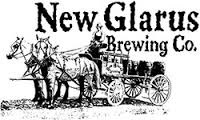
In 1983 the New Glarus Brewing Co. is founded in New Glarus, Wisc. by husband-wife Daniel Carey and Deborah Carey, introducing the Spotted Cow label in 1997 and becoming the 21st largest craft brewer in the U.S. (110K barrels/year); in May 2006 they begin a new $21M facility designed to look like a Bavarian village, becoming a glaring tourist attraction; it goes on to become employee-owned, earning an invite to the White House from Pres. Obama.

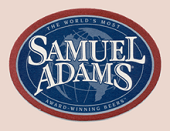
In 1984 the Boston Beer Co. is founded in Boston, Mass. by James "Jim" Koch (1949-) (pr. like cook); in Mar. 1985 it introduces Samuel Adams Boston Lager, which is voted Best Beer in America at the 1985 Great Am. Beer Festival over 92 other beers, going on to become the 2nd largest craft brewery in the U.S.
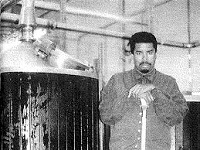
In 1984 Manhattan Brewing Co. of New York is founded in SoHo, Manhattan, N.Y. by British entrepreneur Richard Wrigley and Brooklyn businessman Robert D'Addona, becoming the first brewpub on the East Coast since Prohibition; it closes in 1991.
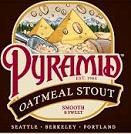
In 1984 Pyramid Breweries Inc. (originally Hart Brewing until 1996) is founded in Kalama, Wash. by Tom Baune and Beth Hartwell, producing Pyramid Pale Ale, Pyramid Wheaten Ale (1985), and Pyramid Apricot Ale (1994), which becomes its top-selling brand, going on to produce the largest variety of selections of any brewery; in 2004 it acquires Portland Brewing Co.; in 2008 it is acquired by Magic Hat Brewing Co., which in 2010 is acquired by North Am. Breweries, which in Dec. 2012 is acquired by Cerveceria Costa Rica.
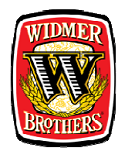
In 1984 Widmer Brothers Brewery is founded in Portland, Ore. by brothers Kurt Widmer and Robert H. Widmer, introducing Widmer Brothers Hefeweizen in 1986 and growing to the 9th largest brewing co. in the U.S.; in Nov. 2007 they merge with Redhook Ale Brewery to form Craft Brewers Alliance, which in 2012 is renamed to Craft Brew Alliance, with Anheuser-Busch as a minority holder.

In 1985 Dock Street Brewing Co. is founded in Bala Cynwyd, Penn. by Rosemarie Certo and her husband Jeffrey Ware, moving in 1989 to Center City, Philadelphia, Penn., becoming the first craft brewery in the Philly area since Prohibition, growing to 25K barrels/year in 1996.
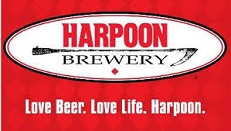
On June 19, 1986 Harpoon Brewery (originally the Mass. Bay Brewing Co.) is founded in Boston, Mass. by Harvard Business School student Rich Doyle, becoming the first co. to obtain an alcohol permit in Mass. in over 25 years, producing Harpoon India Pale Ale, UFO Hefeweizen, Boston Irish Stout et al., becoming known for their St. Patrick's Day, Harpoonfest, and Octoberfest festivals, going on to produce 100K barrels/year in 2003; in 2013 it becomes the 12th largest craft brewery in the U.S. and 19th largest overall.
In 1988 Iceland lifts its 70-y.-o. ban on strong beer.
In 1988 Belgium-based Interbrew is formed from a merger of Stella Artois, Bass, Beck's, Boddingtons, Hoegaarden, Labatt, Leffe, and Staropramen, becoming the 3rd largest brewing co. on Earth; in 2004 it merges with AmBev of Brazil to form InBev, which becomes the largest brewing co. on Earth (13% market share); in 2005 InBev merges with Anheuser-Busch to form Anheuser-Busch InBev.
In Mar. 1989 Guinness introduces the first widget for beer cans, which releases nitrogen as the beer is poured, creating tiny bubbles that are like ice cream in beer; in 1997 it introduces the Smoothifier floating widget.
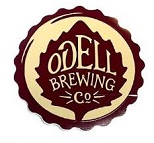
In 1989 Odell Brewing Co. in Fort Collins, Colo. is founded in a 1915 grain elevator outside downtown by Doug, Wynne, and Corkie Odell, becoming the 2nd packaging craft brewery in Colo., and the first in Fort Collins, growing to 8.3K barrels/lyear in 1994, 45K barrels/year in 2013, and 100K barrels/year in 2014.
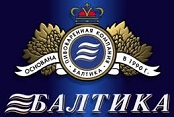
In 1990 Baltika Brewery is founded in St. Petersburg, Russia, becoming the 2nd largest brewing co. in Russia (20M barrels/year); in ? it is acquired by Baltic Beverages Holding Co.
In 1991 Baltic Beverages Holding Co. is founded by the Finnish Hartwall Brewery and the Swedish Pripps Brewery, going on to acquire 19 breweries incl. Aldaris Brewery in Latvia (founded 1865), Svyturys Brewery in Lithuania (founded 1784), Utenos Alus Brewery in Lithuania (founded 1977), Kalnapilis Brewery in Lithuania, Saku Brewery in Estonia (founded 1820), and Baltika Brewery in Russia (founded 1990); in ? it is acquired by Carlsberg and Scottish & Newcastle, which is acquired in Apr. 2008 by Carlsberg.
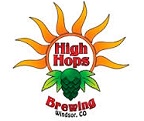
In 1991 High Hops Brewery is founded in Windsor, Colo. by greenhouse operators Amanda Weakland and Pat Weakland, producing the Noble One et al.; in 2007 a massive hop shortage causes them to start their own hop farm.


In 1991 New Belgium Brewing Co. is founded in Fort Collins, Colo. near the Cache la Poudre River on the grounds of an old Great Western Sugar plant by bicycle-loving husband-wife team Jeff Lebesch and Kim Jordan to produce their flagship brand Fat Tire Amber Ale, growing to 400+ employees and being named the best place to work in the U.S. in 2008 by Outside mag., becoming the 3rd largest craft brewery in the U.S. and 7th largest in the U.S. by 2010, producing 712.8K barrels in 2011; other brands incl. Sunshine Wheat, Skinny Dip, Heavy Melon Watermelon Lime Ale, Tart Lychee, and Mothership Wit Wheat Beer; in Jan. 2013 it becomes 100% employee-owned.

In 1993 China Resources Snow Breweries Ltd. (CR Snow) is founded in Dongcheng, Beijing, China by SABMiller and China Resources Enterprise, producing Snow brand beer (founded in 1936), which in 2014 becomes the best-selling beer in the world (16.5B pints).
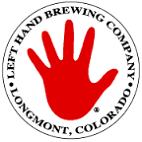
On Sept. 21, 1993 Left Hand Brewing Co. (originally Indian Peaks Brewing Co., then renamed in honor of Arapahoe Chief Niwot, whose name means you know what) is founded near the St. Vrain River in Longmont (near Boulder), Colo. by Dick Doore and Eric Wallace, merging in Apr. 1998 with Tabernash Brewing, growing to 50K barrels/year in 2012, and 65.8K barrels/year in 2013; in 2011 they introduce Milk Stout Nitro, becoming the first craft brewery to bottle nitrogenated beer without a widget.
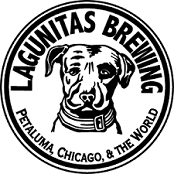
In 1993 Lagunitas Brewing Co. is founded in Lagunitas, Calif. by Tony Magee, moving in 1994 to Petaluma, Calif., becoming one of the fastest-growing craft breweries in the U.S., growing to 27K barrels/year in 2004, 106K barrels/year in 2010, and 640K barrels a year in 2016 after expanding to Chicago, Ill. in 2014, becoming the 5th top-selling craft brewery in the U.S. in 2014; on Sept. 8, 2015 Heineken acquires a 50% stake; on Mar. 17, 2005 the state of Calif. shuts them down for 21 days for investigation of marijuana use by employees; in 2013 they drop "420 from their labels; their motto is "Beer Speaks. People Mumble".
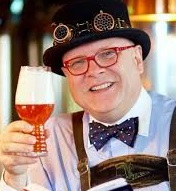
In 1993 Vienna, Austrian-born beer critic Conrad Seidl (1958-), AKA the Pope of Beer and His Beerness is voted the best German-speaking beer journalist, going on to pub. "Bier-Katechismus" and "Bier-Guide" in 1999.
In 1994 the U.S. govt. allows the alcohol content to be printed on beer labels.
In 1994 the top U.S. brewers are Anheuser-Busch (87.5M barrels/year), Miller (42.6M barrels/year), Adolph Coors (20.3M barrels/year), Stroh's (11.8M barrels/year), and G. Heileman (8.4M barrels/year); Calif. has 84 microbreweries, more than the total number of brewers in the U.S. in 1984.
In 1995 Yokohama Brewery is founded in Japan, becoming the first craft brewery and brewpub in Yokohama.
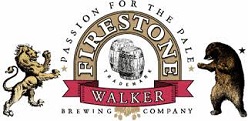
In 1996 Firestone Walker Brewing Co. is founded in Santa Barbara County, Calif. by Adam Firestone, son of Brooks Firestone and great-great-grandson of Firestone Tire & Rubber Co. founder Harvey Firestone, and his brother-in-law David Walker, moving to Paso Robles, Calif. in 2001 and becoming known for hoppy beers and use of the Burton Union system, winning the World Beer Cup in 2004, 2006, 2010, and 2012 and becoming the 16th largest craft brewery in the U.S. in 2014.
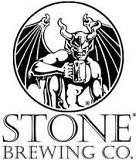
In 1996 Stone Brewing Co. is founded in San Marcos (near San Diego), Calif., featuring hoppy high-alcohol beers incl. Stone Pale Ale, Stone Ruination IPA, Stone Levitation Ale, and Arrogant Bastard Ale (TLW's favorite?), reaching 325,645 barrels in 2015; readers of BeerAdvocate voted it "All Time Top Brewery on Planet Earth"; in 2018 it opens the $74M Stone Hotel in Escondido, Calif.
In 1996 BeerAdvocate online beer rating site is founded in Boston, Mass. and Denver, Colo. by brothers Todd Alstrom and Jason Alstrom (Alström); in 2006 they found Beer Advocate Mag.
In 1996 the first World Beer Cup, "the Olympics of Beer Competition" is held in Vail, Colo., featuring 600 beers from 250 breweries, growing to 2,864 beers from 644 breweries in 58 countries in 2008, when it is held in San Diego, Calif; there are 83 craft breweries in Colo.
In 1996 the brewers' yeast Saccharomyces cerevisiae becomes the first eukaryote genome to be sequenced.
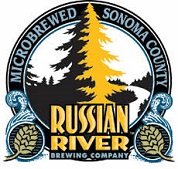
In 1997 Russian River Brewing Co. is founded in Guerneville, Calif. by Korbel Champagne Cellars, hiring Vinnie Cilurzo (inventor of Double India Pale Ale) and going on to use Brettanomyces (Gr. "British fungus") yeast to brew sour beers incl. Blind Big IPA, eventually moving to Santa Rosa, Calif.
In 1999 Alpine Beer is founded in Alpine (near San Diego), Calif. by Patrick and Valerie McIlhenney, billing itself as "the Home of Pure Hoppiness", becoming known for their Irish Red, Pure Hoppiness, Mandarin Nector, Alpine Ale, Captain Stout, and Windows Up IPA; in Nov. 2014 it merges with Green Flash Brewery (founded 2002).
In May 2000 the RateBeer Web site is founded by Bill Buchanan to rate beers, reaching 4.5M ratings of 200K beers from 16K breweries; the #1 beer in the world is Westvleteren 12 from Westvleteren Brewery in Belgium.
In 2000 since the British prefer ale to beer, there are only about 500 breweries in the U.K., but thanks to the microbrewing rev. that number grows to 1,285 in 2015.

In 2002 Green Flash Brewing Co. is founded in Vista, Calif. by Mike and Lisa Hinkley to specialize in India Pale Ales, hiring brewmaster Chuck Silva in 2004 and moving in June 2011 to San Diego, Calif., expanding in Mar. 2013 to Virginia Beach, Va., producing 100K barrels/year, becoming the 41st largest craft brewery in the U.S.
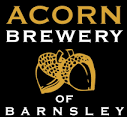
In May 2003 Acorn Brewery is founded in Wombwell, Barnsley, Yorkshire, England by Barnsley Brewery head brewer Dave Hughes and his wife Judi, introducing Acorn Barnsley Bitter, Barnsley Gold, Old Moor Porter, and Gorlokova India Pale Ale, going on to win 50+ awards.
On July 10, 2003 the Licensing Act of 2003 is enacted in Britain, simplifying licensing for pubs and allowing extended opening hours, effective Nov. 24, 2005.
In 2003 the first 4-5-day Belgrade Beer Fest is held in Serbia near the Kalemegdan Fortress, attracting 75K foreign visitors in 2004, 650K in 2009, and 900K in 2010.
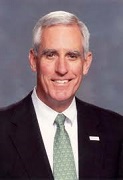
On Nov. 2, 2004 after defeating fellow Repub. Bob Shaffer in the primary by pointing to his support for same-sex civil unions, and his company's payment of benefits to same-sex partners and promotion of their beer in gay bars, Coors chmn.-CEO (since 1993) Peter Hanson "Pete" Coors (1946-) (great-grandson of Adolph Coors Sr., and son of Joseph Coors and Holly Coors) loses the election for U.S. Sen. for Colo. to Dem. Colo. atty. gen. Ken Salazar by 51%-47%; in 2005 Coors merges with Molson, and he stays on as a dir.
In 2005 the Brewers Assoc. (BA) is formed from the merger of the Brewers Assoc. of Am. (founded 1942) and the Assoc. of Brewers (founded 1983), with Charlie Papazian as pres. #1 (until), reaching 1.9K brewers by 2016.
In Sept. 2006 the bimonthly Draft mag. is founded in Phoenix, Ariz. by Erika Rietz; in 2013 it pub. America's 100 Best Beer Bars List.
On July 1, 2007 Tenn. becomes the first U.S. state to require an ID to be produced to buy beer, no matter how old the buyer looks; go figure, it doesn't cover hard liquor and wine. ]
In 2009 there are 1,595 craft beer breweries in the U.S. (highest since before Prohibition), producing 9.1M barrels/year.
In Mar. 2009 Beer mag. is founded in Southern Calif.
On Aug. 24, 2009 Muslim model Kartika Sari Dewi Shukarno (1977-) becomes the first person to be caned in Malaysia for drinking beer, receiving six lashes with a rattan cane.
In 2011 there are 161 craft breweries in Colo.
On June 9-30, 2012 the High Park Fire in the mountains of Larimer County, Colo. W of Fort Collins burns 87,284 acres and destroys 259 homes, becoming the 2nd largest fire in Colo. history contaminates the Poudre River, forcing the city of Fort Collins to drain its reservoirs to meet demand, causing the New Belgium Brewery to hire a sensory panel to test water for smokiness before putting it in their beer; the fire drives a small herd of elk into downtown Loveland, Colo., becoming a tourist attraction until they decide to return.
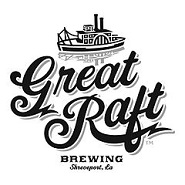
On Oct. 15, 2013 Great Raft Brewing Co. in Shreveport, La. sells its first beer, going on to produce Southern Drawl, Reasonably Corrupt, and Commotion Pale Ale brands.
In Dec. 2013 there are 2,822 breweries in the U.S., incl. 2,768 craft breweries employing 43K in 1,237 brewpubs, 1,412 microbreweries, and 119 regional craft breweries; the state of Colo. leads in gross beer production with 23.4M barrels in 2006, with four of the top-50 U.S. brewing cos.
In 2013 Ala. and Miss. become the last U.S. states to legalize homebrewing; Alaska continues allowing a local govt. prohibition option.
In 2014 world beer consumption reaches 196,126B l; it then starts declining, reaching 192,456B l in 2016.
By 2014 five beer cos. control 51% of the global beer market, incl. Anheuser-Busch InBev, SABMiller, Heineken, Carlsberg, and China Resources Enterprise; in 2015 Anheuser-Busch InBev merges with SABMiller, giving them a 30% share.
In 2015 there are 4,656 craft breweries in the U.S., with 21% of total beer sales; Rocky Mountain High marijuana-loving state Colo., "the Napa Valley of Craft Beer" has 358 craft breweries employing 7,776 (12,085 after economic impact), growing by almost 50% in one year to $1.7B sales.
On Jan. 28, 2016 Toast Ale is founded in London, England by Tristram Stuart to produce beer from surplus bread, donating profits to charity.
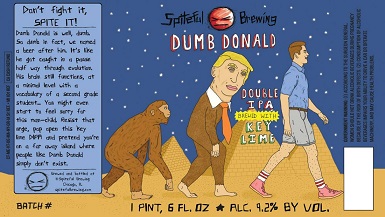
In summer 2016 in honor of the U.S. pres. campaign, Budweiser puts the label "America" in place of "Budweiser" on its beer, causing Donald Trump to take credit; meanwhile Spiteful Brewing Co. of Chicago, Ill. introduces Dumb Donald brand beer, Dock Street Brewing of Philly introduces a series of anti-Trump brands incl. Don't Let Your Friends Vote Drumpf, Short-Fingered Stout, and Drumple IPA, and 5 Rabbit Cerveceria of Chicago renames their leftover beer Chinga Tu Pelo (Sp. "Fuck your hair").
In 2016 IntelligentX Beer Co. of London, England uses AI (artificial intelligence) and user feedback to improve their products.
In 2017 Africa becomes the world's fastest-growing beer market. In 2017 800+ breweries in the U.S. begin printing Certified Independent Craft seals on their beers to differentiate them from beers made by the megacorps.
On Mar. 21, 2018 an article is pub. in Nature Communications reporting that biologists at UCB have used CRISPR-Cas9 to give yeast cells the ability to make flavor components of hops, promising a large water savings in beer-making.
On Jan. 1, 2019 after halving it last year, Labatt Brewery ends its free beer allotment for retired employees.
In 2017 U.S. beer sales place Bud Light at the top, followed by Coors Light and Miller Lite, with Bud dropping from #3 to #4.
In Mar. 2018 Crab Shak Shandy is introduced by Nat. Bohemian of Baltimore, Md., becoming its first new product in 30+ years.
On Apr. 20, 2018 the Hisbah Muslim Sharia police in Jigawa State, Nigeria storm beer parlors, seizing and destroying 244,151 bottles of beer.
On July 28, 2018 The Order of Yoni brand beer goes in sale in Katowice, Poland, made from the lactic acid from the vaginas of hot underwear models.
In Sept. 2018 Carlsberg announces that it will begin sticking its beer cans together with glue, becoming the first manufacturer to abandon plastic rings.
On Oct. 15, 2018 UCI scientists Steven J. Davis et al. pub. an article in Nature Plants exploring what projected climate change will do to barley growing, projecting that the cost of a beer may double.
On Oct. 27, 2018 (Nat. Am. Beer Day) Planters introduces Mr. IPA-Nut beer, at $10 for four 16-oz. cans, delivering a "citrus aroma and a hint of honey-roasted peanuts, all followed by a slightly salty finish that makes every sip worth savoring."
On May 12-June 30, 2019 Anheuser-Busch's Bud Light launches its "first-ever rainbow aluminum bottle to celebrate World Pride" for LGBTs.
In Oct. 2019 Carlsberg announces the world's first paper bottles called the Green Fibre Bottle, made of sustainable wood fiber.
On Feb. 25, 2020 physicians Katherine M. Kruckenberg et al. pub. the study Urinary Auto-brewery Syndrome: A Case Report in Annals of Internal Medicine, reporting on a 61-y.-o. woman who brewed beer in her bladder with yeast.
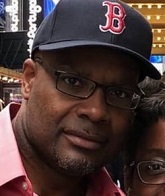
On Feb. 26, 2020 disgruntled Molson Coors employee (African-Am. Elizabeth Warren supporter) Anthony Ferrill (b. 1968) attacks the Molson Coors complex in Milwaukee, Wisc., killing five before commiting suicide.
In Oct. 2020 Swinkels Family Brewers in the Netherland opens the first the first brewery with a cyclical iron fuel system that burns iron powder to generate electricity, generating no CO2 but only rust, which is later turned back to iron powder with electricity generated by renewable power.
On Apr. 19, 2021 New Belgium Beer of Colo. releases Torched Earth Ale, a nasty-tasting beer that's supposed to illustrate beer in a future with uncontrolled global warming.
On Mar. 4, 2022 Remi Daviet et al. of the U. of Penn. pub. the article Associations between alcohol consumption and gray and white matter volumes in the UK Biobank in Nature Communications, revealing the results of a study of 36K+ MRI brain scans that drinking four units of alcohol a day (two beers or glasses of wine) causes brain structural damage and volume loss equivalent to 10 years of aging - a reason to quit before you reach 90?
In early Aug. 2022 Bloomberg announces that the severe drought in N Mexico has virtually shut down their beermaking industry.

On Apr. 1, 2023 the 2023 Bud Light Boycott begins when Annheuser-Busch launches an ad campaign featuring tranny Dylan Mulvaney, causing a huge backlash from U.S. conservatives, after which monthly sales fall between 11%-26%; in Sept. Bill Gates purchases 1.7M shares of InBev stick for $95M.
In 2025 Anheuser-Busch Inbev becomes 100% dependent on renewable energy sources.